
Summer Writing Prompts: 100 Ideas to Write All Summer Long
by Sue Weems | 0 comments
Summer is the perfect time and season to practice writing and let it feel more like play than work. Today, I've collected a list of summer writing prompts: enough to write one per day of the season!
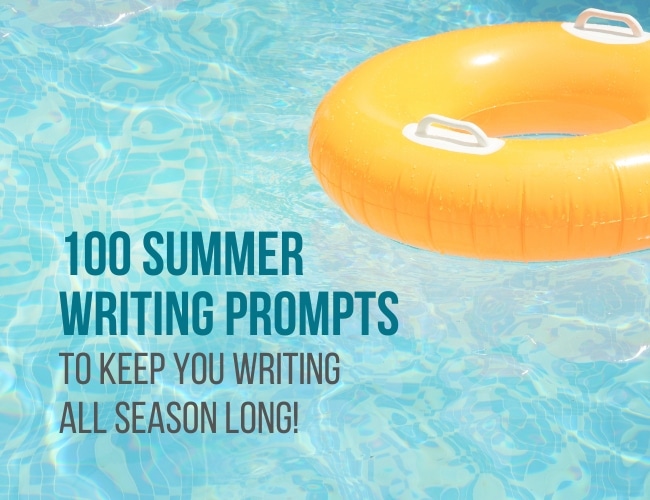
A few summers ago, I led summer writing camps for kids called Write Camp. It was a blast helping kids of all ages get their fantastical ideas down on paper. My sister signed up my nephew, even though he was a reluctant third grade writer at the time. She wasn't sure he'd even participate.
I assured her that the no-pressure, fun environment would help him imagine writing in a new way, and that he would finish the summer with a story or two and a new understanding of writing.
I'm happy to report I was right! He and his fellow write campers all finished stories and left feeling more confident in their writing skills.
Sometimes we spend so much time trying to get students to write correctly that we drain all the fun out of it. We forget that the first step to becoming a strong writer is to actually write. Try these summer writing prompts to help you (or a young writer in your life!) have some writing fun.
Summer journal prompts
If you keep a journal like me, try one of these prompts for some quick summer journaling.
1. Describe the perfect summer day from beginning to end. What activities would you engage in and why?
2. Write about a memorable vacation or summer road trip. What made it special and why do you still remember it?
3. Share your favorite summer recipe. Include the ingredients and step-by-step instructions. How does it remind you of summer?
4. Write about a summer adventure you would like to experience. It could be something daring or out of your comfort zone. Why does it intrigue you?
5. Describe a summer tradition or ritual that you and your family or friends have. What makes it meaningful and how does it enhance your summer experience?
6. Write about a time when you felt completely relaxed during the summer.
7. Share your favorite summer read or book recommendation.
8. Write about a summer hobby or activity that brings you joy. How did you discover this hobby, and how does it make your summer more fulfilling?
9. Describe a summer sunset or sunrise that left a lasting impression on you. What were the colors like, and how did the scene make you feel?
10. Write about a summer project or goal you have set for yourself. How do you plan to accomplish it, and what impact do you hope it will have on your summer?
11. Share a list of your favorite summer songs or a summer playlist. Why do these songs resonate with you, and how do they enhance your summer vibe?
12. Write about a summer friendship that has played a significant role in your life. How did you meet, and what makes this friendship special?
Summer story starters
Use one of these sentence starters to get your own story off and running!
13. The sun-drenched beach was bustling with laughter and the sound of crashing waves until…
14. In the sleepy seaside town,
15. As the ice cream truck jingled its way down the neighborhood streets, a group of friends suddenly noticed…
16. The sweltering heat seemed unbearable until…
17. Deep in the forest, a group of campers stumbled upon a hidden waterfall, sparking…
18. In a small coastal village, a young girl discovered a message in a bottle, and…
19. The couple stood in the field of sunflowers when they noticed…
20. At the annual summer fair, a shy teenager accepts a dare to visit a fortune teller who…
21. The fireflies danced in the warm night air, illuminating the path leading to…
22. On a remote island, a group of siblings stumbled upon an old map that led them to…
23. As the summer storm unleashed its fury, a group of teenagers sought refuge in an abandoned mansion, only to discover…
Summer travel prompts
24. Imagine you're on a tropical island paradise. Describe the crystal-clear waters, palm trees swaying in the breeze, and the sensation of warm sand between your toes.
25. Create a travel itinerary for a road trip along the scenic coastal highway, complete with stops at charming seaside towns and breathtaking viewpoints.
26. You've just arrived in a bustling city known for its vibrant street markets and cultural landmarks. Write about your first impressions and the unique experiences you encounter.
27. Picture yourself hiking through a majestic national park, surrounded by towering mountains, cascading waterfalls, and abundant wildlife. Describe the awe-inspiring beauty of nature.
28. You've decided to embark on a backpacking adventure across Europe. Write about the different cities you visit, the diverse cultures you experience, and the unforgettable people you meet along the way.
29. Imagine exploring a historical city filled with ancient ruins and architectural wonders. Describe the rich history and cultural significance of the landmarks you encounter.
30. You're on a gastronomic journey, discovering the flavors and culinary delights of a foreign country. Write about the mouthwatering dishes, local specialties, and the joy of indulging in new tastes.
31. Picture yourself lounging on a luxurious cruise ship, sailing through turquoise waters and visiting exotic islands. Describe it!
32. You've decided to embark on a backpacking trip through a dense rainforest. Write about the vibrant biodiversity, the sounds of exotic creatures, and the sense of adventure as you navigate through the wilderness.
33. Imagine staying at a cozy mountain lodge, surrounded by mountain peaks and alpine meadows in full summer bloom.
34. You've chosen to visit a remote village tucked away in the countryside. Write about it!
35. Picture yourself on a safari in the African savannah, surrounded by majestic wildlife. Describe all you see.
Summer setting prompts
While some of these overlap with other prompts, use these to practice sensory details and setting.
36. Describe the feeling of sinking your toes into warm, soft sand on a sunny beach during the peak of summer.
37. Paint a vivid picture of a vibrant summer sunset, capturing the hues of orange, pink, and purple that streak across the sky.
38. Describe the refreshing sensation of jumping into a crystal-clear pool or lake on a scorching summer day, highlighting the coolness against your skin.
39. Depict the sights, sounds, and scents of a bustling farmers' market in the summertime, with rows of colorful fruits and vegetables, the chatter of vendors, and the aroma of freshly baked goods.
40. Portray the atmosphere of a lively summer festival, showcasing the lively music, energetic crowds, and a kaleidoscope of vibrant decorations and food stalls.
41. Describe the lush greenery and delicate blossoms of a summer garden, emphasizing the fragrance of blooming flowers and the buzzing of bees among the petals.
42. Paint a picture of a tranquil summer morning in the countryside, capturing the mist rising from the fields, the chirping of birds, and the gentle rustle of leaves in the breeze.
43. Depict the scene of a family picnic in a park.
44. Describe the exhilaration of a thrilling roller coaster ride at a busy theme park, conveying the anticipation, adrenaline rush, and exhilarating twists and turns.
45. Portray the charm of a quaint seaside town, highlighting the pastel-colored houses, the aroma of freshly caught seafood, and the sound of seagulls soaring overhead.
Childhood summer prompts
46. Recall a favorite childhood summer memory and describe it in vivid detail, from the sights and sounds to the emotions you felt.
47. Write about your most treasured summer toy or activity from your childhood. What made it special, and why did you enjoy it so much?
48. Describe a fun summer activity you did with your friends (or family) when you were younger. What did you do, and how did it strengthen your bond?
49. Write about the excitement and anticipation you felt as summer vacation approached each year. What were some of the activities you looked forward to the most?
50. Recall a summer camp experience from your childhood. Describe the camp setting, the activities you participated in, and the friendships you formed.
51. Write about a summer tradition that was unique to your family when you were a child. What made it special, and how did it create lasting memories?
52. Describe a magical summer night from your childhood. Were there fireflies lighting up the sky or a mesmerizing display of stars? How did it make you feel?
53. Recall a day of summer when you discovered something new and exciting, whether it was a hidden spot in your neighborhood or a fascinating creature in nature. Describe the moment of discovery.
54. Write about a summer project or hobby you pursued as a child. How did it ignite your creativity?
55. Describe a favorite summer treat from your childhood, whether it was a refreshing ice cream flavor or a homemade dessert.
56. Recall a summer book or story that captivated your imagination as a child. Describe the characters, the setting, and the emotions it evoked.
57. Write about a summer family vacation you took as a child. Describe the experience.
Summer poetry prompts
Maybe you want to try your hand at poetry this summer! Remember that poetry thrives on precise word choices that convey concrete images and emotion. Practice playing with specificity!
58. Write an acrostic poem capturing the essence of summer, one word or phrase per letter S-U-M-M-M-E-R.
59. Craft a poem that explores the energy of a beach on a hot summer day.
60. Write a poem inspired by the scent of freshly cut grass and the feeling of bare feet on the lawn.
61. Reflect on the beauty of a blooming flower in the summer heat.
62. Create a poem that embodies the freedom and exhilaration of riding a bicycle through winding country roads.
63. Write a poem that paints a vivid picture of a summer storm.
64. Craft a poem that explores the enchantment of a starlit sky on a clear summer night, evoking a sense of wonder and awe.
65. Reflect on the simple pleasure of enjoying a juicy slice of watermelon or peach on a hot summer day.
66. Write a poem inspired by the sound of children's laughter echoing through a park.
67. Capture the serenity and tranquility of a lazy afternoon spent swinging in a hammock, embracing the leisurely pace of summer.
68. Create a sonnet about your favorite flavor of ice pop.
69. Reflect on the feel of running through a sprinkler or a summer rain.
70. Write a poem inspired by the rhythm and energy of a summer music festival.
71. Craft a poem that explores the nostalgia of chasing fireflies in the twilight.
72. Reflect on the passage of time and the bittersweet feeling of summer's end.
73. Write a poem inspired by the sand on a beach towel.
74. Build a haiku about something that reminds you of summer in nature. (For haiku help, go here .)
75. Write a poem about missing out on a treasured summer tradition and what you had to do instead.
Summer adventure story ideas
76. Two best friends embark on a sailing adventure, exploring remote islands, encountering marine wildlife, and discovering the true meaning of friendship.
77. In a sleepy beach town, a young artist finds inspiration in the local community and stages an unforgettable summer art exhibition.
78. During a summer internship at a renowned museum, a curious teenager stumbles upon a secret society dedicated to preserving the city's forgotten history, and becomes entangled in a dangerous adventure to protect its secrets from falling into the wrong hands.
79. A group of adventurous kids forms a secret club and embarks on a mission to solve a series of mysterious events plaguing their neighborhood during summer break.
80. A teenager moves to a new town at the end of the school year, and gets a summer job, but they had no idea what they were in for.
81. A retired rock-climber and expedition leader ventures into the wilderness on a solo expedition, testing their survival skills, and hoping to prove their fitness.
82. A mischievous pair of siblings embark on a mission to solve a local legend, leading them to uncover a hidden treasure and restore the town's forgotten history.
83. Two best friends stumble upon a time-traveling device during a summer camping trip, taking them on an extraordinary journey through different historical eras.
84. A young street performer with extraordinary talents finds herself caught up in a whirlwind adventure when she catches the attention of a mysterious talent scout, leading her on a journey through the city's vibrant arts scene and unexpected encounters.
85. A group of neighbors form a detective club and set out to solve a series of mysterious disappearances in their city during the sweltering summer days, uncovering a hidden criminal network.
Fun summer lists
For this final set of summer writing prompts, I challenge you to make a quick list on each prompt and see what ideas emerge.
86. Make a list of the top ten best (or worst!) things about visiting a water park.
87. Outline the most essential qualities needed for a summer camp counselor. (Consider how this might be different if kids made the list? HA!)
88. List the ten most fun outdoor games to play during summer.
89. What are the best treats to have during hot summer months? Ice cream? Ice pops? Mojitos? (for those of age, of course!)
90. Essential wardrobe staples for summer. (Again, this would be interesting to compile for different types and ages of people!)
91. Make a list of the top ten best or worst places to visit in the summer.
92. Best movies to watch during the summer.
93. A deserted island packing list.
94. Best or worst things to ride/ eat/ play at an amusement park or state fair.
95. Favorite summer swimming holes.
96. List your top ten songs about summer. (Put on a few for inspiration!)
97. Favorite summer snack foods for road trips.
98. Summer holidays ranked. (Challenge level: look up the summer holidays in a different country!)
99. List the ten essential components of a dream summer break.
100. Ten must-see hikes or waterfalls or parks in your area—perfect for a summer outing!
Summer writing prompts: now you try!
Give these summer-themed writing prompts a try and see if you don't find yourself enjoying these warm summer days even more!
Which prompt above brings back summer memories for you? Share in the comments .
Choose one of the prompts above and set your timer for 15 minutes . Write as quickly as you can, playing with the ideas and language. Don't overthink it.
When finished, share your practice in the Pro Practice Workshop here . And take a look at few other writers' work too, leaving an encouraging word. Not a member? We'd love to have you along this summer! Check it out here .

Sue Weems is a writer, teacher, and traveler with an advanced degree in (mostly fictional) revenge. When she’s not rationalizing her love for parentheses (and dramatic asides), she follows a sailor around the globe with their four children, two dogs, and an impossibly tall stack of books to read. You can read more of her writing tips on her website .

Submit a Comment Cancel reply
Your email address will not be published. Required fields are marked *
Submit Comment
Join over 450,000 readers who are saying YES to practice. You’ll also get a free copy of our eBook 14 Prompts :
Popular Resources
Book Writing Tips & Guides Creativity & Inspiration Tips Writing Prompts Grammar & Vocab Resources Best Book Writing Software ProWritingAid Review Writing Teacher Resources Publisher Rocket Review Scrivener Review Gifts for Writers
Books By Our Writers

You've got it! Just us where to send your guide.
Enter your email to get our free 10-step guide to becoming a writer.
You've got it! Just us where to send your book.
Enter your first name and email to get our free book, 14 Prompts.
Want to Get Published?
Enter your email to get our free interactive checklist to writing and publishing a book.
Improve your writing in one of the largest and most successful writing groups online
Join our writing group!
100 Summer Writing Prompts

by Holly Riddle
Itching for summer to arrive? Dreaming of warmer days? Or, maybe, you find yourself already in the heat of summer and you’ve got some extra time on your hands. Maybe you’re lounging by the swimming pool or you’re bored at your job. Maybe you’re trying to brush up on your creative writing skills before school starts.
If you’re trying to get some writing done this summer, but you’re not sure what you want to write about, you’ve come to the right place. Below, you’ll find a whopping 100 summer writing prompts to kickstart your creativity ranging from journaling prompts to poetry prompts, creative writing prompts to fiction and short story prompts. Whatever your preferred style, you’ll find something to inspire.
Summer journal prompts

1. What are your goals for this summer? Write them down and, more specifically, write down why those are your goals. What do you hope they give you? What inspired them? See where your words take you.
2. What is your all-time favorite summer memory from summers past? Write it down in as much detail as possible.
3. How do you imagine the beginning of your summer and the end of your summer will differ? Write it down and then look back later to see how right or wrong you were.
4. How does your life change during the summer? Do you live in a new location, change jobs, have more fun with friends, or just get outside more? How do these changes impact you on an emotional or mental level?
5. What is your favorite thing about summer? How could you take that fun thing you love and extend it forward to last the whole year? Brainstorm and write it down.
Summer poetry prompts
6. Explore a new-to-you form of poetry this summer. Find a poem in that style and then try writing your own version on the same topic.
7. Love setting writing goals or writing challenges for yourself? Challenge yourself to write one poem each day or week, with the poem reflecting something that happened that day or week.
8. How can you best bottle the feeling of summer in a poem? See what happens when you limit yourself to fewer words.
9. Personify summer as person in a poem.
10. Grab a piece of summer-related ephemera (think newspaper clippings, event flyers, etcetera) and make erasure poetry, blacking out text on the page to create a whole new work of art.
Summer holiday and event prompts

11. Memorial Day kicks off the summer season for many. Think about the meaning of Memorial Day and who you might remember. Write about them in a poem, short story, or essay.
12. Write a story that takes place at a July 4 event. Think a fireworks show, parade, beach festival, or baseball game.
13. Labor Day is the unofficial end of the summer season. What else in your life is ending at this time of year? Write about it.
14. Many families use the summer season to plan family reunions. Write about a family reunion that goes terribly, terribly wrong.
15. Now’s also the time for fairs and festivals. Write a short story that takes place at one of these events and make the setting crucial to the story, so that the plot couldn’t take place anywhere else.
Summer writing prompts about summer jobs
16. Even if you don’t have one right now, you likely had summer jobs at one point. Write a story set at your job, or a creative essay about an experience you had there.
17. One popular seasonal job? Working at a camp. Write a story set at a summer camp, but make it the coolest ever. Think a camp for royalty, for spies in training, or for cryptids.
18. Write a short story about someone who works at an ice cream parlor and why they either love or hate their job.
19. Write a short story about someone who wants a seasonal job, but can’t get one. What dramatic lengths will they go to in order to snag that interview or prove themselves worthy?
20. Write about what happens to summer workers in the winter. Where do the carnival workers go? What about the lifeguards?
Favorite summer memory prompts
21. Take your favorite seasonal memory and turn it into a short story, but make the main character absolutely hate everything you loved about that memory.
22. Remember your favorite place, favorite song, or favorite road trip from summers past? Write about it.
23. Write about your favorite seasonal memory but set it in the distant past. How would that memory have differed/looked if you’d lived in the 1800s or 1700s?
24. Take your memory and flip it on its head. Take the same cast of characters and events and make them the worst you could possibly imagine.
25. Imagine a favorite memory of the future. Pretend you’re writing as a 90-year-old. What might be your favorite memory then?
Summer destination prompts
26. Set a story at the ocean, sea, or a lake. Add in a sea monster if you want to get really creative.
27. Set a story at a campground filled with the most obnoxious tourists you’ve ever seen.
28. Write a story about someone trying desperately to get to a summer destination. Do they really need a vacation or are they fleeing something?
29. Write a story about a destination that no one would want to visit for summer vacation.
30. Imagine what your favorite summer destination might look like after the apocalypse and write about it.
School’s out writing prompts

31. Write a story from the point of view of a parent whose kids are out for the summer. Do they love it or hate it?
32. Write a story about a teacher who switches jobs during summer vacation—and they can never let any of their kids, parents or coworkers know what their summer job is.
33. Write a story about summer vacation from the point of view of a child’s bedroom. How is that space impacted?
34. Write about how you often felt as a child on the last day of the school year.
35. Write a letter to your children or future children about your favorite days with them over summer break.
Summer five senses writing prompts
36. Write a poem or personal essay about your favorite taste of summer.
37. Write a poem or personal essay about your favorite smell of summer.
38. Write a poem or personal essay about your favorite feeling or texture of summer.
39. Write a poem or personal essay about your favorite sight of summer.
40. Write a poem or personal essay about your favorite sound of summer.
Summer wildlife prompts
41. Write a scene about your least-favorite summer bug and what you might do if it invaded your house.
42. Write a story about what might happen to the summer wildlife and nature if summer never came.
43. Write a short story from the point of view of a bug that knows summer’s almost run its course. How do they spend their time?
44. Write a story about an animal with a summer job (think horses at a summer camp or petting zoo animals at the fair).
45. Write a poem about the sounds of summer wildlife that you might hear (ie, crickets chirping, deer munching grass in the morning, gulls at the ocean, etc.)
Summer plant life prompts
46. Write an ode to your favorite summer flower.
47. Write a story about mowing the grass, but from the point of view of the grass.
48. Write a story about gardening and make the normally low stakes of growing household produce incredibly high for your main character.
49. Write a scene about what the summer plant life would look like if humans weren’t around.
50. Write a personal essay about your own experiences with gardening. Are they good, bad, disastrous?
Summer hobbies writing prompts

51. Write a story about riding your bike and finding something life-changing along the way.
52. Write a story about swimming and finding something unusual in the water.
53. Write a story about a character who goes for a hike and gets lost.
54. Write a story about a parent who wants to get their children involved in their favorite hobbies over summer break. How successful are they?
55. Write a poem that tells your reader how to perform your favorite summer hobby.
Summer sports writing prompts
56. Describe a date that takes place at a baseball game, but neither of the people on the date like baseball.
57. Write a short story from the point of view of a character who’s decided to streak across the field at a baseball game.
58. Write a poem about a summer sport that you know nothing about. Try to describe it using your limited knowledge.
59. Write a story about a sailing team that gets blown off course.
60. Write a story about a fall or winter professional sports team that wants to play in the summer. What challenges do they come up against and are they successful?
Summer weather prompts
61. Write a poem about the summertime heat. How does it make you feel?
62. Write a personal essay about how the summer weather has changed since you were a child.
63. Write a scene or story that takes place in a house where the air conditioning just kicked the bucket on the hottest day of the year.
64. Write a short story that takes place in the middle of a hurricane—but the hurricane isn’t the most dangerous thing that your characters face.
65. Write a story about two tornado chasers that hate each other.
Summer foods writing prompts
66. Write a poem about the best summer meal that you ever ate.
67. Write a personal essay about how you might go about cooking a summer meal for your family and the significance of the foods you choose, the setting, etc.
68. Write a short story about a picnic that goes wrong.
69. Describe the ideal ice cream cone.
70. Write a story set in the future, about post-apocalyptic humans scavenging for food to create the perfect summer feast.
Wedding season writing prompts
71. Write a story from the point of view of a wedding officiant or planner working during the height of wedding season.
72. Compose a poem about the worst wedding you’ve ever been to.
73. Write a story about a wedding where none of the guests show up.
74. Describe a wedding from the point of view of the flower girl or the ring bearer.
75. Write a story about a wedding where the maid of honor loves the groom and the best man loves the bride, and the two team up together to ruin the wedding.
Summer wear writing prompts
76. Compose a poem about your favorite or least favorite summer outfit.
77. Write a short essay about your feelings surrounding summer wear. Do you feel confident in your swimsuit? Why or why not? Do you hate your legs in shorts? Do you love ditching your winter coat for the season?
78. Write a story about someone who accidentally glues their sunglasses onto their face.
79. Design a character who can’t feel temperature, so they’re not restricted to a normal seasonal wardrobe.
80. Write a story about someone who’s shopping for a swimsuit and falls in love in the process.
Summer nights prompts
81. Think about how your life changes with the lengthening days. Write a short essay about what you do with your extra daylight and how it does (or doesn’t) impact your life.
82. Write about the best summer night you’ve ever had.
83. Compose a poem that captures the feeling of a summer night right after the sun has set.
84. Write a story about a character who works nights during the summer. How do they view summer differently than the average person?
85. Write a story from the point of view of a character trying to sleep on an extremely hot night. Why are they frustrated beyond just being sweaty?

Dog days of summer writing prompts
86. Write a story from the point of view of a dog at a picnic or barbecue.
87. Write a story about a dog walker who loses a prized pooch in the park during their first day on the job.
88. Compose a poem about spending a summer day with your favorite dog.
89. Compose a poem or short story from the point of view of a dog cowering during Independence Day fireworks.
90. Think about how you might spend your summer days differently if you were a dog. Write about it.
Summer reading prompts
91. Did you ever participate in your library’s summer reading program as a kid? Write about the experience.
92. What’s the best beach book you’ve ever read? Journal about what made it stand out.
93. Think about your favorite book or movie. How might the plot be different if it was set in the dead of summer? Write some fan fiction showing how that might play out.
94. Write a story about someone reading a library book on the beach or a cruise ship and finds a secret message inside. What does it say?
95. Your character dropped their spouse’s prized original edition of their favorite book in the pool. What do they do now?
End of summer writing prompts
96. Reflect on how your summer went. Journal about what you wish you would have done differently, as well as your summertime successes.
97. Write a story about a character reflecting back on the best summer ever and their dread at the impending fall months.
98. Write from the point of view of a tree that’s starting to change as summer ends.
99. Compose a poem about the bittersweet end of summer.
100. Look ahead to the fall. What are your writing goals for the fall and winter? How will you use what you learned from the summer to achieve those goals? Journal about it.
Get into your writing groove this summer with one of these 100 summer writing prompts
Summer is the perfect time to get in some extra writing, so hopefully some of the above summer writing prompts have sparked your imagination.
Once you have some pieces ready to take on the world, why not send them out for publication ? We have a guide just for that!
Get feedback on your writing today!
Scribophile is a community of hundreds of thousands of writers from all over the world. Meet beta readers, get feedback on your writing, and become a better writer!
Join now for free

Related articles

What Is Magical Realism? How to Bridge the Ordinary and the Extraordinary

Spring Writing Prompts: 100 Prompts to Get You Writing This Spring

Novel Versus Book: What’s the Difference?

Writing the 100-Word Memoir

What Is a Cliffhanger? Definition, Examples, and How to Write Great Ones

What Is Personification? Definition and Examples from Literature
Kindlepreneur
Book Marketing for Self-Publishing Authors
Home / Book Writing / Summer Writing Prompts: 35+ Ideas to Get You Started
Summer Writing Prompts: 35+ Ideas to Get You Started
One of the worst things about being an adult is you can't take summers off from work (unless you're a teacher, I suppose). The last day of school before summer vacation was always brimming with possibilities. The seemingly endless days of summer stretched out before you like a sparkling river under a tire swing.
But even for adults, there's plenty of fun to be had in summer. And it's some of that magic we're tapping into with the summer writing prompts below.
- How to make the most of the writing prompts.
- A list of writing prompts to choose from.
- Tips for vetting your story idea.
Table of contents
- Choose a Writing Skill to Strengthen
- Form a Writing Habit
- Disassemble Writer's Block
- Summer Writing Prompts
- Will Your Story Sell?
Tips for Using the Writing Prompts Below
Writing prompts have a great many uses. But like any tool, it helps to know how to use them for whatever it is you want to accomplish. The quick tips below are by no means mandatory, but they may be able to help you get the most out of these summer writing prompts.
In On Writing by Stephen King, the Master of Horror talks about how the various aspects of writing are like tools in the writer's toolbox. Some you will naturally be proficient with, while others will require a bit more practice before you can master them. This is where writing prompts can be incredibly helpful. Choose one or more “tools” from the list below and then focus on it (or them) with a writing prompt.
- Character Development – There's an art to crafting round characters and satisfying character arcs. By focusing on these aspects, you can strengthen these skills.
- Action – Action scenes can be hard to write without confusing the reader. That's why practice makes perfect.
- Point of View – There are nuances to understand when it comes to POV, so choosing one you're not necessarily comfortable with can help improve your use of POV.
- Dialogue – Compelling dialogue is one of the hardest things to pull off. But if you work at it, you'll get better.
- Show, Don't Tell – Showing how a character is feeling through their actions, mannerisms, dialogue, and the use of subtext can be hard to master, but it's certainly not impossible.
It can be hard to write every day on a large project like a novel or a nonfiction book. But if there's one thing professional writers have in common, it's that they write every day—or at least regularly. Unfortunately, creating a writing habit is easier said than done. But by using writing prompts to get you excited to sit down at the computer every day, you can ingrain the habit in a matter of weeks.
This is also a good way of getting warmed up to tackle your work in progress. By writing a few hundred words (or even just a paragraph) on a writing prompt, you can get the words flowing before moving on to your current work in progress.
Formatting Has Never Been Easier
Write and format professional books with ease. Never before has creating formatted books been easier.
If the words just don't want to come, a writing prompt could be the ticket through writer's block . By starting on a story that you're not as invested in, you can unleash your creativity and get back on track.
The key here is to really let yourself get creative with the prompt. You may even want to go so far as to write in a completely different genre than your work in progress. If you're writing a romance, try instead doing a horror short story. If you're writing a gritty thriller, try a goofy mystery. Or forget all about genre and just go with stream-of-consciousness writing!
Boost your creative writing skills with these summer story prompts.
1. Write about a whirlwind romance that only takes place over the summer months.
2. Write a story in which a group of teenagers working at an amusement park must solve the murder of a mysterious Jane Doe that wound up dead in the food court.
3. Write about a character who experiences a summer that's both the best and worst of their life.
4. The world is about to end, and humanity collectively agrees to take the last summer off. What happens during the last months before the apocalypse?
5. Start your story with a child going missing from a summer camp.
6. Set your story at a summer camp for adults.
7. Write about a small group of students dreading summer break. Why do they fear it? What happens in their town during summer that is so frightful?
8. Explore the origins of a strange summer tradition one family practices every year.
9. Think of your favorite summer memory and write a story in which a character experiences that for the first time.
10. Write about a group of kids who have summer activities planned but they keep getting interrupted before they can enjoy them.
11. Write about a character whose favorite thing about summer is the heat.
12. It's the first day of summer vacation and a group of friends decides to run away from home to live in the woods. Explore this from the point of view of both the kids and their parents.
13. Write about a crime that happens on July 4th during the fireworks display. The town's only detective—brand new to the area—has to solve the case.
14. Write about a second-grade teacher who decides to hitchhike to Woodstock in the summer of 1969.
15. Write a thriller story about a family on summer vacation when they're held hostage by two desperate criminals.
16. Write a horror story about a hot summer day that just keeps getting hotter and hotter. How would people survive? What could they do to escape the heat?
17. Start your story with a young writer for the school newspaper witnessing a crime committed by the principal on the last day of the school year.
18. See if you can convey the magic of summer fun with a story about kids without a care in the world trying to make the most out of their summer in small-town America.
19. Begin your story with a character getting an anonymous note that says, “Contact me when summer starts.”
20. Write a story that takes place exclusively on the three major summer holidays: Memorial Day, Independence Day, and Labor Day.
21. Start your story with a water balloon fight that soon gets out of control.
22. Write about a character who sets out to do 100 random acts of kindness during her summer.
23. Pick a summer activity you love and write about characters doing that activity when they're interrupted by something completely unexpected.
24. Write an acrostic poem about the joys of summer. These types of poems are great for creative thinking and expanding your vocabulary.
25. Tell the story of a character's summer vacation through a series of their blog posts. This type of epistolary story is great for character development!
26. Set your story on a beach near a bonfire. A fight breaks out, and one of the fighters is your protagonist!
27. Write about two groups of kids with rival lemonade stands trying to outdo each other.
28. Your protagonist gets a summer job at a local resort. But he soon finds out that something shady is going on at the resort, and he may have seen too much.
29. A small town's summer festival goes awry when nearly all the attendees are drugged. When the dust settles, someone's dead. But who's to blame?
30. A group of once-tight-knit friends gets together after many years apart. The idea is to reconnect over the summer, but one member of the group has an ulterior motive. And it's not a nice one.
31. A group of strangers boards a small boat for a trip to a secluded island resort. But a summer storm lands these vacationing strangers on a deserted island. They must learn to work together—or pay the ultimate price.
32. Your protagonist is a camp counselor at a summer camp that has been closed since some awful murders happened there. It soon becomes clear that something strange is happening again. . .
33. Write about three competitive friends who participate in a summer scavenger hunt that sends them all over New England.
34. Write about a family staying at a cabin when the high temperatures and low moisture cause a forest fire. They must escape, but that's easier said than done.
35. When a young girl is upended and moved across the country during the summer, she befriends an old woman who has been shunned by the town. What does she learn about herself and the world by starting this friendship?
I hope these writing prompts are to your liking! Whether you use one of the creative writing prompts as a story starter or a creative writing activity, the important thing is getting the words down.
That said, I encourage you to use them however you like. While not every writer wants to sell their work, there are plenty who do. And if you're one of them, then it's a good idea to see if there's a niche audience for your story. This is easily done with Publisher Rocket .
This tool can compress what would otherwise take hours of research on Amazon into just minutes, helping you identify ideal markets for your book. Once you find a niche market, it can help you position your book for success when you do publish. With Publisher Rocket, you get insights directly from Amazon on:
- Keywords – Metadata to position your book on Amazon.
- Competition – Allowing you to see what's selling and how stiff the competition is.
- Categories – So you know where people who are looking for books like yours go to find them.
- Amazon Ads – Helps you quickly configure a list of profitable keywords for running ads for your novel, novella, or short story collection.
Best of all, it’s easy to use and comes with quick little videos to get you started. Check out Publisher Rocket here .
Dave Chesson
When I’m not sipping tea with princesses or lightsaber dueling with little Jedi, I’m a book marketing nut. Having consulted multiple publishing companies and NYT best-selling authors, I created Kindlepreneur to help authors sell more books. I’ve even been called “The Kindlepreneur” by Amazon publicly, and I’m here to help you with your author journey.
Related Posts
Author vs writer: what’s the difference, how to write an adventure story, parts of a book [from cover to cover], sell more books on amazon, amazon kindle rankings e-book.
Learn how to rank your Kindle book #1 on Amazon with our collection of time-tested tips and tricks.
Join the community
Join 111,585 other authors who receive weekly emails from us to help them make more money selling books.

BRYN DONOVAN
tell your stories, love your life
- Writing Inspiration
- Semi-Charmed Life
- Reading & Research
- Works In Progress.
50 Summer Writing Prompts!

These summer writing prompts are appropriate for all ages…
Because I know a lot of teachers are looking forward to the summer…along with a lot of students, and a lot of writers. In my mind, the season inspires a lot of good creative writing topics, and it wasn’t hard to come up with this list!
If you’d like creative writing ideas with more magic and fantasy, you might also want to check out my post on 50 Fantasy Writing Prompts and Fantasy Plot Ideas . And whether you’re looking for June journal prompts or starting a new story, I hope one of these creative writing ideas inspires you. Be sure to pin it on Pinterest for future reference!
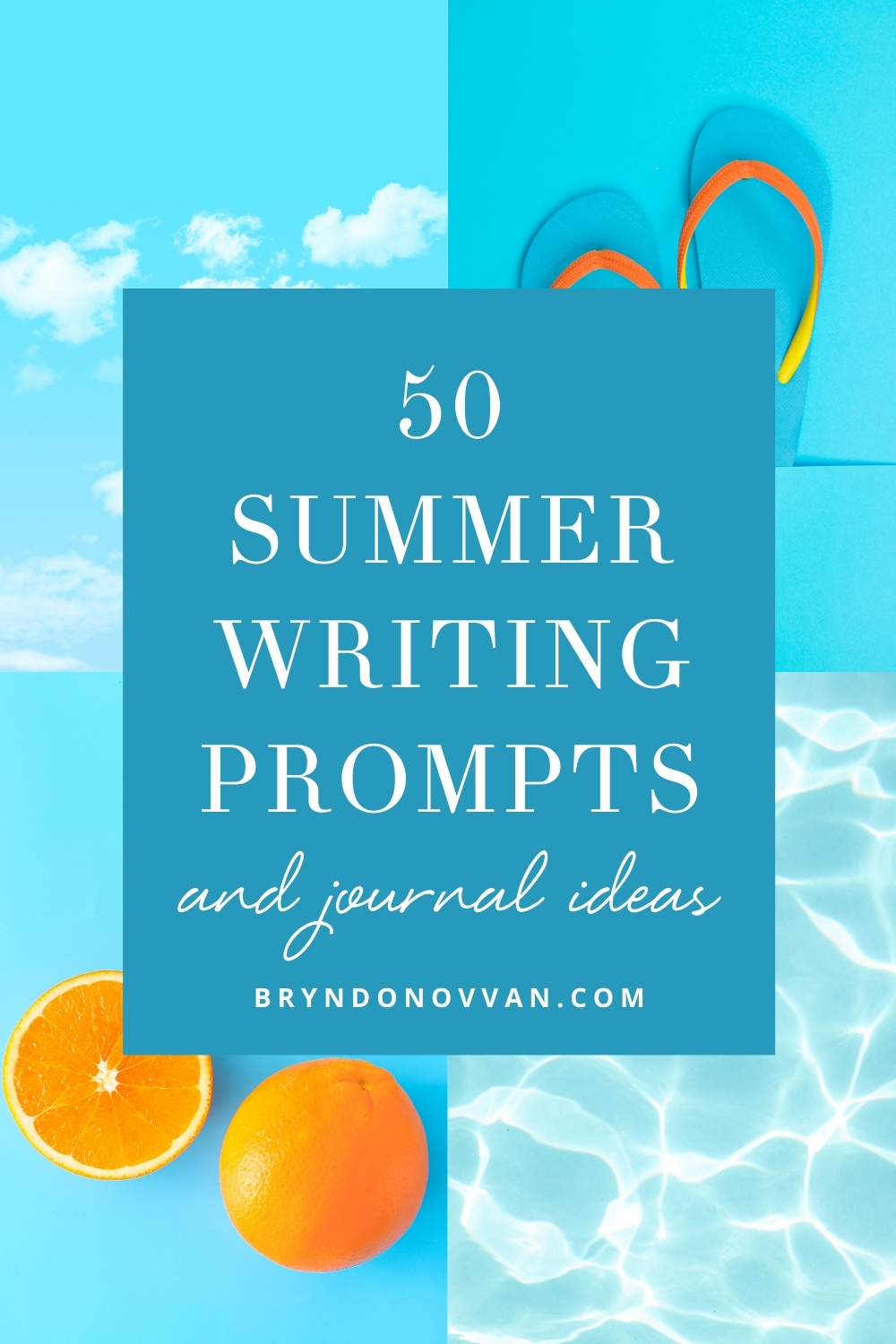
1. Write a scene that includes fireflies.
2. Write a scene that includes mosquitos, hornets, or wasps.
3. Someone is driving with the car windows down, singing at the top of their lungs to their favorite song. Who are they? Where are they going — or what are they getting away from? Why do they like this song so much?
4. Write about someone at a state fair. Why are they there? What are the sights, sounds, and smells?
5. Come up with a conversation that takes place around a campfire.
6. Write about a teenager at their summer job. It could be a normal one, or something unusual.
7. Write a scene that includes a waterfall.
8. Describe lightning striking something — or someone — along with what happens next.
9. Someone is packing their bag for a summer vacation. Where are they going? What are they bringing along?
10. Write about something going very wrong on a vacation.
11. Incorporate the chirping of crickets or the buzz of cicadas into a piece of writing.
12. Set a scene at an ice cream parlor, a frozen custard stand, or near an ice cream truck.
13. Write about an outdoor event getting interrupted by a downpour.
14. Write about a bike ride to an unusual place.
15. Describe a baseball game that takes an unexpected turn.

16. Write about something you used to do for fun as a kid during the summertime.
17. Write about a parent whose out-of-school kids are driving them bananas.
18. Two characters are picking berries. What’s their relationship to each other? Are they having fun, or no?
19. Write from the point of view of someone who hates summer.
20. Describe one of your favorite summer experiences, such as cooking steaks on a grill or getting a pedicure.
21. Write a scene that takes place at a swimming pool.
Support My Site
If you like what I do, please support me on Ko-fi!
22. Come up with a scene that includes a sand castle.
23. Imagine a kid at summer camp, and describe what they do there.
24. Someone is fishing… and pulls something out of the lake or ocean that is definitely not a fish.
25. Somebody on a beach finds a message in a bottle, washed up on the shore. What does it say?
26. Come up with a scene that features fireworks in some way.
27. Describe a happy scene at a farmer’s market.
28. Describe a fight — silly, or serious — that takes place on a cruise ship.
29. Write from the point of view of someone who is sailing alone.
30. Picture yourself in a rose garden. Who does it belong to? Why are you there, and what happens?
31. Write from the point of view of a character in one of your favorite blockbuster movies.
32. A camper is in their tent — alone, or with someone else. What wakes them up in the middle of the night?
33. Write a scene in which the characters are hot and sweaty.
34. Write about a place that characters go just to cool down.
35. Describe the perfect summer meal, beverage, or dessert.
36. Write from the point of view of a moth telling himself not to go near that flame.

37. Write a scene where somebody runs through the sprinklers — intentionally or not.
38. Imagine being at a big outdoor music festival, and write about what you do and the people you meet.
39. Write about a character who’s wearing sunglasses… and never takes them off.
40. Write about something embarrassing happening to someone who’s wearing a swimsuit.
41. Write about a father and a son meeting for the first time in years on Father’s Day.
42. Write about a character who has strong feelings about Independence Day (the 4th of July.)
43. Write about a road trip you took once.
44. Describe a stay at a funky old motel.
45. Write about characters sleeping out under the stars.
46. Make up an eccentric relative that you might meet at a family reunion.
47. Write from the point of view of a dog at the dog park.
48. Imagine going to a flea market or garage sale, and finding something that thrills you… for cheap!
49. Write about a character making a wish by blowing on a dandelion puff.
50. Somebody is reading on the beach… but it’s not the typical beach read. What’s the book about? Why is this person interested?

I hope you enjoyed the summer writing prompts! I’d love to hear your comments. If you don’t want to miss future creative writing ideas, follow the blog if you aren’t already — you can subscribe below. And if you want to share something you wrote, go for it — that would be so much fun to see. Happy writing!
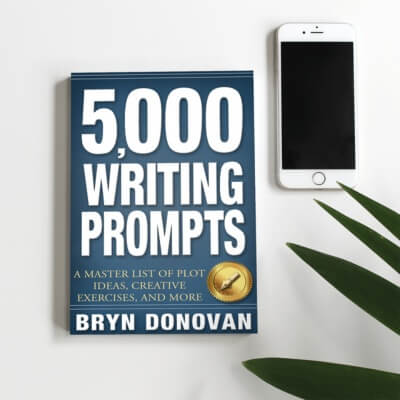
I hope you enjoyed these summer writing prompts…
And if you’d like a huge collection of writing prompts for many fiction genres, personal essays, and more, check out my book, 5,000 Writing Prompts ! It has hundreds of five-star reviews, and every prompt can be used in almost endless creative ways.
Are you working on a project you love this summer?
Do you have other thoughts about summer writing prompts? Let us know in the comments section below! Thanks so much for reading, and happy writing!

Related Posts

Share this:
9 thoughts on “ 50 summer writing prompts ”.
I love summer back in the midwest, because of the fireflies (although in southern Indiana they are called “lightning bugs.”)
I used to catch them and put them in a jar with holes poked in the lids to keep by my bed overnight. They inevitably would crawl out somehow, and I’d wake up to find flashing bugs crawling around on my walls and ceiling.
Mean kids would pull the them in half and draw glowing pictures or words on the front of their shirts. This always upset me and caused me a great deal of stress and outrage.
I also remember how at the hay farms, the fields would have an unearthly, flickering glow at night from all the fireflies hiding in the tall hay before it was harvested.
Fireflies and the loud buzz of cicadas = summer nights for me. 🙂
I was trying to catch some last night! Just for a picture. It’s not as easy as I remembered 😀
Someone told me that when she was a kid, they used to dig out the glowy bits and smear them around… I was horrified!
I love the fireflies. 🙂
These are great! I think I will use them with my students this year also.
Your first few suggestions brought back a family memory of when my daughter Katie was a new driver as we were on a family trip.
Her stress level when she felt pressured driving 55 mph through road construction on the freeway with the yard-high orange barrels on her left and a semi-truck moving on her right became amplified when a wasp flew in her window and landed on the front of her shirt. Katie’s loud and continuous screaming while she tried to flick off the wasp and keep control of the car prompted her older sister in the back seat to use an empty pop bottle to bonk Katie on the back of the head several times in an attempt to quiet Katie down.
That action required Katie to then alternate between trying to blindly brush off the wasp and grab the bottle as it attacked her head. The rest of us couldn’t stop laughing at her misfortune. There was nothing we could do during that 2-minute portion of the drive, except when I asked the bottle bopping to end.
Katie pulled over to the side if the road when the construction area ended, and immediately exited the car to shake herself off with more screams plus scoldng her sister for threatening our safely with her annoying action.
That was one of our most memorable family events.
Kathy — oh my gosh. I remember how nervous I would get anyway as a new driver… The poor thing! But that is so funny!
Thank you very much for this blue. This is a very inspiring piece. I have written a long conversation between mosquitoes and a bed bus. If you would like it I would mail it to you. I would try on several prompts. Thank you once again.
Hi Sayed, thanks for reading, and for the kind words! I’m so glad you like the post. My email is [email protected] — I’d love to see what you did!
What fun topics for summer inspired writing prompts! I hope I can share on here soon. I stumbled across your blog as I was searching for ideas on describing facial expressions.
Hi Miss Kim, welcome to the blog! So glad you like it 🙂
Great prompts, thank you!
Leave a Reply Cancel reply
This site uses Akismet to reduce spam. Learn how your comment data is processed .
Discover more from BRYN DONOVAN
Subscribe now to keep reading and get access to the full archive.
Type your email…
Continue reading

Wonder Forest
Home » Create » Creative Writing » Writing Prompts » 100 Creative Summer Writing Prompts
100 Creative Summer Writing Prompts
Summer is the perfect time to let your creativity flow and explore new writing ideas. Whether you’re a seasoned writer or just starting out, trying out new prompts can be a fun and inspiring way to jumpstart your career in writing or just to curate a personal collection of stories and memories.

With the warm weather and longer days, there’s no better time to sit outside with a notebook or laptop and let your imagination run wild. So, let’s take a look at some creative summer writing prompts that will help you flex your writing muscles and get your creativity flowing!
1. Describe your perfect summer day.
2. Write a story about a summer romance that didn’t work out.
3. What are your favorite summer activities? Describe them in detail.
4. Write a poem about the feeling of sand between your toes.
5. Describe a severe summer thunderstorm from the perspective of someone watching it from a porch.
6. Write about a summer job you had that taught you an important life lesson.
7. Describe the taste of your favorite summer treat.
8. Write a story about a family vacation gone wrong.
9. Create a character who hates summer and explain why.
10. Write a letter to your future self about your summer goals.
11. Describe a summer day spent exploring a new city.
12. Write about a time you got lost on a summer adventure.
13. Create a character who loves summer and explain why.
14. Write a story about a summer spent volunteering as a punishment.
15. Describe the sound of waves crashing on the beach.

16. Write a poem about the feeling of the sun on your skin.
17. Write about a summer camp experience that changed your life.
18. Create a character who spends their summer traveling to a new place.
19. Write a story about a summer day spent at an abandoned theme park.
20. Describe the smell and sounds of a summer barbecue.
21. Write a letter to your past self about your favorite summer memories.
22. Create a character from the city who spends their summer working on a farm.
23. Write about a summer day spent hiking in the mountains and coming across a cottage.
24. Describe the feeling of jumping into a cold swimming pool on a hot summer day.
25. Write a story about a summer day spent at a music festival.
26. Create a character who spends their summer working at a beach resort.
27. Write about a summer day spent exploring a new, off-the-beaten-path hiking trail.
28. Describe a summer night spent stargazing.
29. Write a poem about the feeling of freedom that comes with summer as a kid.
30. Write a story about a summer day spent at a water park where family drama ensues.
31. Describe the taste of cold lemonade on a hot summer day.
32. Write about a summer day spent kayaking or canoeing into a secret cave.
33. Create a character who spends their summer working on a cruise ship.
34. Write a letter about your favorite summer memories to your future self.
35. Describe a summer day spent lounging in a hammock.

36. Write a story about a summer day spent at a lake after a loss.
37. Create a character who spends their summer working as a lifeguard.
38. Write about a summer day spent learning a new skill.
39. Describe the feeling of sand slipping through your fingers using metaphors or similes.
40. Write a poem about the sound of a summer rainstorm.
41. Write about a summer evening spent sneaking into a museum.
42. Create a character volunteering at an animal shelter during their summer.
43. Create a character who spends their day at an amusement park.
44. Describe the feeling of the wind in your hair on a summer day.
45. Write about a summer day spent on a boat with strangers.
46. Create a character who spends their summer working as a park ranger during a season of forest fires.
47. Write a letter to your past self about your summer aspirations.
48. Describe the taste of a fresh summer salad.
49. Write a story about a summer day spent at a baseball game.
50. Create a character who spends their summer working on a ranch with a new romantic interest.
51. Write about a summer day spent exploring a new city by bike.
52. Describe a summer day spent lounging in a pool that you snuck into.
53. Write a poem about the colors of a summer sunset.
54. Write a story about a summer day spent at a county fair.
55. Create a character who works at an outdoor concert venue during the summer.

56. Write about a summer day spent exploring a secret beach.
57. Describe the feeling of jumping off a diving board into a pool.
58. Write a letter to your future self about your summer dreams.
59. Write a story about a summer day spent at a zoo.
60. Create a character who spends their summer at a summer camp.
61. Write about a summer day spent exploring a new state park and getting lost.
62. Describe the taste of a summer cocktail (or mocktail).
63. Write a poem about the feeling of sandcastle building.
64. Write about a summer day spent at a hot air balloon festival.
65. Create a character who spends their summer working as a tour guide.

66. Write about a summer day spent exploring a new theme park that no one seems to know about.
67. Describe the feeling of a summer breeze on your face.
68. Write a story about a summer day spent at a carnival.
69. Create a character who spends their summer working as a beach lifeguard.
70. Write about a summer day spent exploring a new hiking trail.
71. Describe the taste of a juicy summer peach.
72. Write a poem about the feeling of the sun on your face.
73. Write about a summer day spent at a rodeo.
74. Create a character who spends their summer working at a summer festival.
75. Write about a summer day spent exploring a new national park.

76. Describe the feeling of floating on a raft down a lazy river.
77. Write a story about a summer day spent at a water ski show you’ve been dragged along to attend.
78. Create a character who spends their summer working as a landscaper and makes a shocking discovery.
79. Write about a summer day spent exploring a wildlife reserve where a new species has been discovered.
80. Describe in detail, how to make a fresh fruit smoothie.
81. Write a poem about the feeling of a summer breeze through your hair.
82. Write about a summer day spent at a county fair where you enter into a competition.
83. Create a character who spends their summer working as a summer school teacher.
84. Write about a summer day spent exploring a new state fair on a first date.
85. Describe the feeling of running through a summer sprinkler through a child’s eyes.

86. Write a story about a summer day spent at an outdoor concert where you win a backstage access pass.
87. Create a character who spends their summer working as a summer camp counselor with troubled teens.
88. Write about a summer day spent exploring a botanical garden with your grandmother or grandfather.
89. Describe the taste of a summer watermelon.
90. Write a poem about the feeling of a summer thunderstorm.
91. Write about a summer day spent at a street festival with a boyfriend or girlfriend you intend to break up with.
92. Create a character who works as a pool cleaner during the summer for a wealthy family.
93. Write about a summer day spent exploring a new greenhouse.
94. Describe the sound of a summer breeze rustling through the trees.
95. Write a story about a summer day spent at a farmer’s market where you’re a seller.
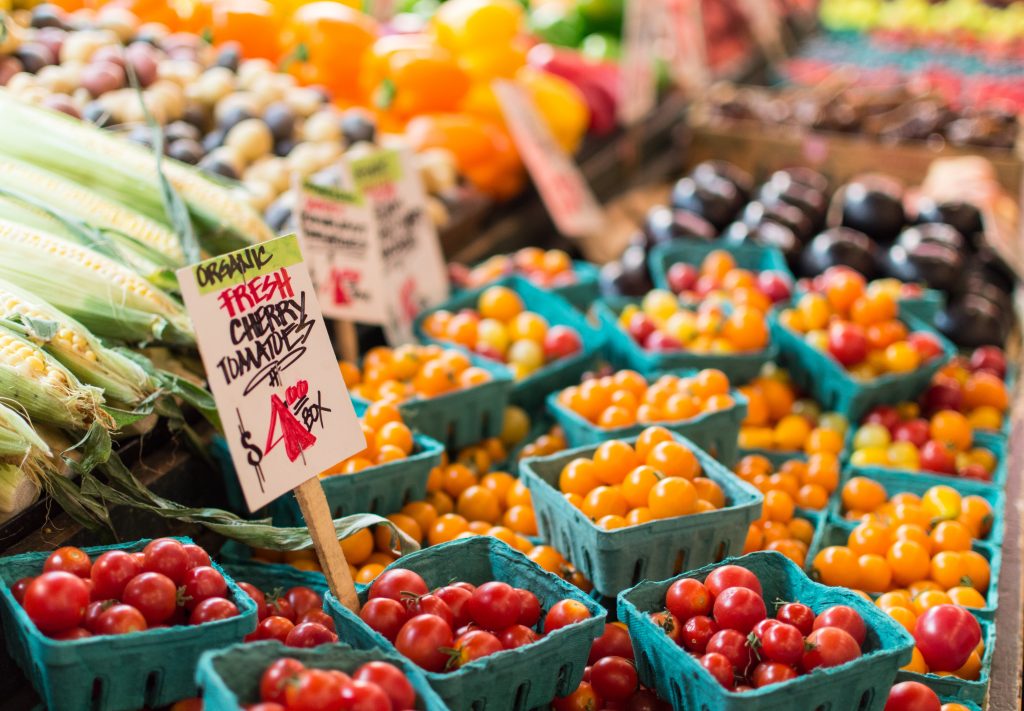
96. Create a character who spends their summer working as a tour bus driver for a group of elderly folks.
97. Write about a summer day spent exploring a mystical butterfly garden.
98. Describe the taste of a garden tomato.
99. Write a poem about the sights and sounds of a summer picnic.
100. Write about a summer day spent at a flea market where you find something shocking.
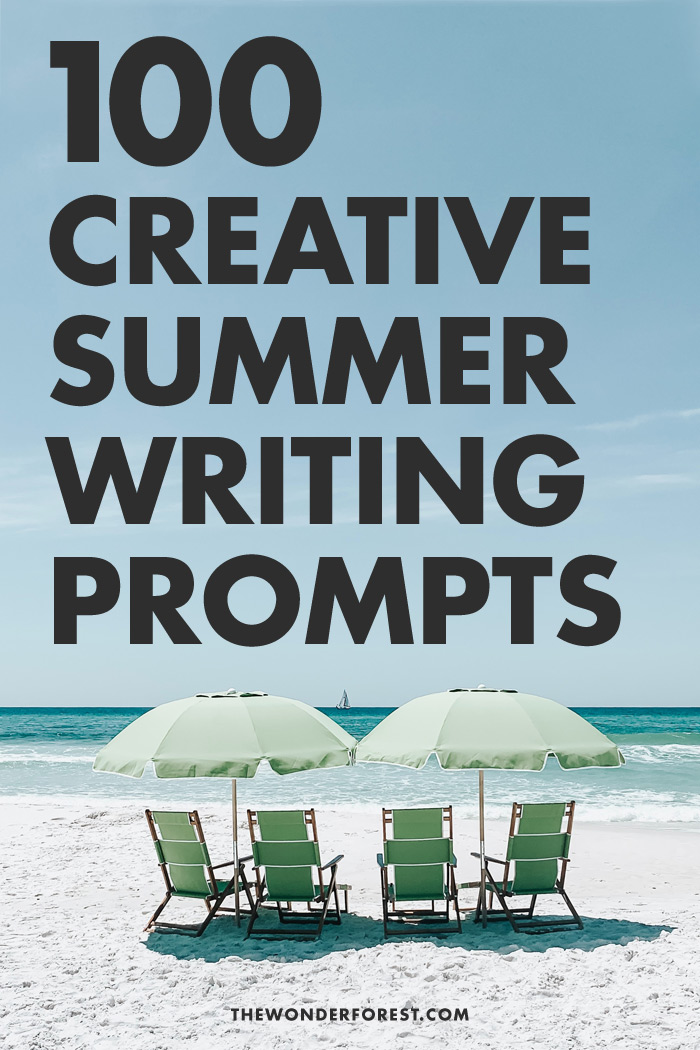
Last Updated on February 27, 2024

By Kayla Peart
Kayla Peart is a storyteller and poet wandering through life and wondering about it. She shares her findings through stories and poetry on Moonflwr, her newsletter.
Leave a comment Cancel reply
Your email address will not be published. Required fields are marked *
For security, use of Google's reCAPTCHA service is required which is subject to the Google Privacy Policy and Terms of Use .
I agree to these terms (required).

- New Releases
- Coming Soon
- Bestsellers
- Target Exclusives
- Barnes & Noble Picks
- Epic Reads Insiders
Sort by: Per page Per page

21 Creative Writing Prompts That’ll Get You to Write More This Summer
Your rights as a student in us public schools, 23 books with multiracial main characters, choose a romance trope, we’ll give you a book rec.
Sometimes the hardest part about writing is getting started—that’s why we need all the writing prompts! But seriously, we’ve all been there…twiddling our thumbs…wasting hours fighting writer’s block, trying to get that first sentence down…and just when you think you finally got it, you second guess yourself because then you start thinking about how that first sentence sets the tone. Yeah, NO PRESSURE OR ANYTHING. It’s honestly enough to make you slam that laptop shut and run away.
And let’s talk about writing in the summer. Sometimes it seems like an even more impossible task, despite the ~extra~ free time you have. After all, when the sun is shining outside and all your friends are at the beach, the last thing you want to do sometimes is sit down and put pen to paper (or finger to keyboard). But you gotta get that writing done so why not bring those summer vibes to the story in front of you? We put together a 21-Day Writing Challenge with a ton of summer-inspired writing prompts to help get those creative juices flowing. Check it out below!
21 Creative Writing Prompts That’ll Get You to Write More This Summer

Are you ready to beat that writer’s block?! Let us know if you’ll be doing the 21-Day Writing Challenge in the comments below! Up Next:
- Write Your Own YA Adventure With This Title Generator!

They hate my guts. They love me not. They love me… If you didn’t know, these are the three common…

There are few things we love more than a good fantasy or sci-fi book with positive LGBTQ+ representation. It’s a…

If you’ve been anywhere on the bookish corner of the internet these last few years, you’ve been unable to escape…

Celebrate the freedom to read with this post filled with info, embeddable badges, lists and more! …

Free Summer Writing Prompts: Embrace Seasonal Creativity
My name is Debbie, and I am passionate about developing a love for the written word and planting a seed that will grow into a powerful voice that can inspire many.

– Discover the Benefits of Summer Writing: Boost Creativity and Beat Writer’s Block
Discover the benefits of summer writing: boost creativity and beat writer’s block, – unleash your imagination: engaging summer writing prompts for all ages, 1. explore new worlds:, 2. reflect on personal growth:, – explore the unique themes of summer: dive into nature, travel, and adventure, explore the unique themes of summer: dive into nature, travel, and adventure, – tap into emotional expression: write about joy, nostalgia, and freedom, 2. nostalgia:, 3. freedom:, – get inspired by the season: capture the magic of warm days and starry nights, – try interactive writing exercises: turn summer memories into compelling stories, – expand your skills: improve descriptive writing with sun-kissed settings, – embrace collaborative writing: create group stories during fun summer get-togethers, frequently asked questions, wrapping up.
Summer is the perfect time to get your creative juices flowing and reignite your passion for writing. Whether you’re an aspiring novelist, a seasoned journalist, or simply someone who enjoys expressing themselves through words, embracing writing during the summer months can have numerous benefits.
One of the greatest advantages of summer writing is the boost it provides to your creativity. With longer days and warmer weather, you’ll find yourself inspired by the beauty of nature and the vibrant energy surrounding you. Use this time to explore different genres or writing styles that you’ve always wanted to try. Let your imagination run wild, and don’t be afraid to experiment with new ideas. By harnessing the relaxed atmosphere of summertime, you can unlock a world of endless possibilities and uncover talents you never knew you had.
- Increased productivity: Summer provides ample free time to dedicate yourself to writing projects that may have been put on hold during busy periods. Take advantage of the longer days and commit to a writing routine that can significantly increase your productivity. Set aside a specific time each day or week to focus solely on your writing, allowing yourself to immerse in the creative process without distractions.
- Connection with nature: Nature has a way of inspiring great writers, and summer provides the perfect backdrop for this connection. Take your writing outside, whether it’s to a local park, beach, or even your own backyard. Breathe in the fresh air, feel the warmth of the sun on your skin, and let the beauty of nature fuel your writing. The sensory experience of being outdoors can stimulate your imagination and infuse your work with vivid descriptions and sensory details.
- Beating writer’s block: The infamous writer’s block can strike at any time, leaving you feeling frustrated and uninspired. However, summer writing can be a powerful antidote to this creative slump. By allowing yourself to explore new ideas and take risks with your writing, you can overcome the mental barrier of writer’s block. The relaxed and carefree atmosphere of summer frees your mind from the pressures of everyday life and enables you to approach your writing with a fresh perspective.
So, this summer, grab your pen and paper or fire up your laptop, and let the benefits of summer writing enrich your creativity and help you overcome any hurdles you may face. Embrace the warmth of the season, embrace the power of words, and watch as your writing flourishes like never before.

If you’re looking to take your writing skills to the next level this summer, look no further! We’ve curated a list of engaging writing prompts that will unleash your imagination and inspire creativity for all ages. Whether you’re a seasoned writer or just starting out, these prompts are designed to spark your creativity and get those words flowing.
Dive into a fantastical adventure by writing a short story set in a different universe. Invent unique characters, describe breathtaking landscapes, and let your imagination run wild. Whether it’s a futuristic city in the clouds or an enchanted forest filled with mythical creatures, the possibilities are endless.
Example prompt: “Write a story about a young explorer who discovers a hidden portal to an alternate dimension.”
Use writing as a tool for self-discovery and personal reflection. Write a reflective essay or journal entry about a significant event or experience that has impacted your life. Explore your thoughts, emotions, and lessons learned, and share how this experience has shaped you into who you are today.
Example prompt: “Describe a moment when you faced a fear head-on and overcame it, highlighting the lessons you learned in the process.”

Summer is the perfect time to immerse yourself in the wonders of nature, embark on thrilling adventures, and quench your wanderlust through exciting travel experiences. Whether you prefer the tranquility of pristine beaches, the majesty of towering mountains, or the allure of bustling cities, summer offers a myriad of unique themes to explore and make memories that will last a lifetime. So, get ready to pack your bags, embrace the warmth of the sun, and discover the extraordinary possibilities that await you this summer!
Dive deep into the arms of nature as you explore dense forests teeming with biodiversity or unwind on sun-kissed beaches with crystal-clear waters . Immerse yourself in camping trips under star-studded skies, surrounded by the soothing sounds of nature. Marvel at the vibrant hues of blooming flowers and breathe in the refreshing scents of the summer breeze. Nature’s beauty beckons, inviting you to disconnect from the daily grind and reconnect with the natural world.
If adventure runs through your veins, then summer is your playground. Engage in thrilling activities like hiking, rock climbing, river rafting, and ziplining. Push your limits and experience an adrenaline rush like never before. Allow the summer sun to fuel your quest for adventure as you conquer towering peaks or ride the cresting waves along stunning coastlines. Feel the exhilaration of facing challenges head-on and let the spirit of adventure ignite your soul.
Wanderlust knows no boundaries during the summer months. From exploring exotic cities and getting lost in their rich history, to embarking on road trips filled with breathtaking views and hidden gems, traveling in summer promises unforgettable experiences. Lose yourself in the vibrant cultures, tantalizing cuisines, and jaw-dropping landmarks that await you. Expand your horizons and create lifelong memories as you embark on new journeys that will forever shape your perspective of the world.
Tapping into Emotional Expression
In this section, we will explore the power of writing to convey three different emotions: joy, nostalgia, and freedom. Each of these emotions carries its own unique energy and significance, allowing us to connect with ourselves and others on a profound level.
Writing about joy enables us to capture and share moments of bliss, creating a space where positivity and happiness can thrive. Whether it’s describing the exhilaration of a thrilling adventure, the warmth of being surrounded by loved ones, or the simple joys found in everyday life, putting pen to paper can amplify these joyful experiences. By celebrating moments of pure delight, we not only appreciate them more but also inspire others to seek joy in their own lives. Through the use of vivid descriptions, vibrant language, and uplifting anecdotes, we can ignite a spark of positivity within our readers and infuse their lives with renewed enthusiasm.
Writing about nostalgia takes us on a reflective journey through our past, allowing us to relive cherished memories and capture the essence of a bygone era. Whether it’s reminiscing about childhood adventures, lost loves, or unforgettable experiences, nostalgia evokes a bittersweet mixture of emotions. Through the power of words, we can transport ourselves and others to a different time, tapping into shared experiences that bring us closer together. Utilizing descriptive language, sensory details, and personal anecdotes, our words can paint a vivid picture of nostalgia, awakening buried emotions and fostering a deep sense of connection.
Writing about freedom empowers us to explore the limitless possibilities that exist within our lives. It allows us to break free from constraints, whether they are physical, mental, or emotional, and embrace the liberation that comes with self-expression. Through the use of imagery, metaphors, and powerful narratives, we can convey the exhilaration of soaring through vast skies, of breaking the shackles of conformity, or of embracing our truest selves. By capturing the essence of freedom in our words, we encourage others to tap into their own inherent strength and live authentically, reminding them that the power to break free resides within each of us.
Summer is a time when nature comes alive, and it’s the perfect season to capture its magic through photography. Whether you’re a professional or an amateur, the warm days and starry nights offer endless possibilities for breathtaking images.
To capture the essence of summer, embrace the vibrant colors and abundant sunlight. Head outdoors and explore the beauty that surrounds you. Look for interesting subjects like blooming flowers, playful wildlife, or joyful beach scenes. Experiment with different angles and perspectives to bring out the best in your photos. Don’t be afraid to get close and showcase the small details that make summer so enchanting.
As the sun sets, the sky becomes a canvas of endless possibilities. Use this time to capture mesmerizing sunsets and starry nights. Find a scenic spot, whether it’s a beach, a park, or a rooftop, and set up your camera to capture the ever-changing hues of the sky. Experiment with long exposures to capture the movement of the stars or create captivating silhouettes against the colorful backdrop. Don’t forget to bring a tripod to keep your shots steady and razor-sharp.

Summer memories are like treasures waiting to be discovered. The warmth of the sun on your skin, the sound of waves crashing on the shore, the laughter of friends and family gathered around a barbecue – all these moments are worth reliving. And what better way to bring them to life than by turning them into compelling stories?
If you’re looking to unleash your creativity and take a nostalgic trip down memory lane, our interactive writing exercises are just what you need. Whether you’re a seasoned writer or simply enjoy jotting down your thoughts, these exercises are designed to help you transform your summer memories into captivating narratives. Through a series of prompts and guided writing sessions, you’ll discover the power of storytelling and learn how to engage readers with vivid descriptions, emotions, and relatable characters.
- Explore the art of sensory writing – learn how to capture the essence of the summer season by describing the sights, sounds, smells, tastes, and textures that made your memories special.
- Master the art of storytelling techniques – develop plotting skills, create suspense, and hook your readers from beginning to end.
- Craft believable characters – breathe life into your stories by developing well-rounded, lovable (or loathsome!) characters that your audience will connect with.
- Utilize literary devices – add impact to your stories with the use of metaphors, similes, and other powerful literary techniques.
Grab your pen, open up a blank document, and embark on a journey of self-expression through storytelling. Our interactive writing exercises offer a fabulous way to channel your summer memories into captivating stories that will transport readers to sandy beaches, cool mountain cabins, or bustling city adventures.

One of the most effective ways to enhance your descriptive writing is to master the art of portraying sun-kissed settings with vivid detail. Whether you’re writing a novel, a short story, or a travelogue, creating rich descriptions of sun-drenched landscapes can captivate readers and transport them to a world brimming with warmth and beauty. By incorporating sensory details and evocative language, you can immerse your audience in the sights, sounds, and sensations of a sun-kissed setting.
To start, it’s essential to pay close attention to the visual elements of a sunlit scene. Describe the way the sunlight dances upon the landscape, casting golden hues and long shadows. Use metaphors and similes to compare the sun’s rays to gentle caresses or shimmering ribbons. Boldly depict the vibrant colors that radiate from the setting: the deep blue of the sky, the rich green of flourishing foliage, and the fiery orange of a setting sun.
- Engage the sense of touch: Describe the warmth of the sun’s rays on one’s skin, the coolness of a gentle breeze, or the texture of sun-warmed sand.
- Evoke scents: Bring your readers into the sun-kissed scene by describing the fragrances that float through the air, such as the sweet scent of blossoming flowers or the salty tang of the ocean.
- Include sounds: Convey the symphony of a sun-drenched setting, with chirping birds, rustling leaves, crashing waves, or the hum of distant laughter.
By mastering the art of descriptive writing in sun-kissed settings, you can transport your readers to vivid and captivating worlds. This skill is not only valuable for creative writing but also for non-fiction genres like travel guides or personal narratives. So go ahead, let your words paint a picture of sun-kissed perfection, and watch as your readers become engrossed in the beauty of your descriptions.
Summer is the perfect time to unleash your creativity and bond with friends through collaborative writing! Instead of spending your get-togethers discussing the same old topics, why not embark on a fun adventure and create group stories? Collaborative writing allows you to combine different ideas, perspectives, and writing styles to produce unique and exciting narratives.
Here are a few tips to make your group story-writing sessions even more enjoyable and productive:
- Choose a Theme: Start by deciding on a theme or genre for your story. It could be anything from a thrilling mystery to a fantasy tale.
- Brainstorm Together: Encourage everyone to contribute ideas and create a mind map. This will help you establish the plot, characters, and setting.
- Assign Roles: To ensure smooth collaboration , assign different roles to each participant. One person can focus on character development, while another can handle the plot twists.
- Write in Turns: Take turns writing the story, passing the baton from one person to another. This keeps the plot unpredictable and adds an element of surprise.
- Reflect and Discuss: After each writing session, take some time to reflect on the story’s progress and discuss any challenges or changes that may enhance the narrative.
Embrace the spirit of teamwork, unleash your imagination, and create unforgettable stories with your friends this summer. Collaborative writing not only strengthens your bond but also produces incredible tales that would be impossible to create individually. So, gather your friends, grab a pen, and let the storytelling adventure begin!
Q: What are summer writing prompts and why are they beneficial?
A: Summer writing prompts are creative ideas or themes that inspire individuals to write during the summer season. They serve as a starting point for brainstorming and encourage writers to explore their imagination. These prompts can be in the form of sentences, images, quotes, or even specific questions. Engaging with writing prompts can improve writing skills, boost creativity, and provide a structured outlet for self-expression.
Q: How can summer writing prompts help overcome writer’s block?
A: Summer writing prompts are a great tool for overcoming writer’s block. When struggling to come up with ideas, prompts provide a structure and starting point to get the creative juices flowing. They act as a catalyst, sparking new thoughts and ideas that may have otherwise been elusive. By providing a framework for writing, prompts eliminate the pressure to come up with a completely original idea, allowing writers to focus on developing their skills and refining their craft.
Q: Can writing prompts be helpful for writers of all ages and skill levels?
A: Absolutely! Writing prompts can be adapted to suit writers of all ages and skill levels. For beginners, prompts offer a starting point to develop essential writing skills such as descriptive writing, storytelling, and character development. More experienced writers can use prompts as an opportunity to experiment with different genres or writing styles they may not typically explore. Regardless of age or skill level, prompts are a versatile tool that can unlock creativity and help writers grow.
Q: What makes summer writing prompts unique and enjoyable?
A: Summer writing prompts have the advantage of being specifically tailored to the season. They capture the essence of summer and inspire writing about warm weather, outdoor activities, and the vibrant nature often associated with this time of the year. The unique themes and topics associated with summer writing prompts make the experience enjoyable, as they allow writers to embrace the spirit of the season and infuse their work with a sense of adventure and joy.
Q: How can one find or create free summer writing prompts?
A: There are numerous resources available to find free summer writing prompts. Websites, such as writing blogs and educational platforms, often provide a variety of prompts for different genres and age levels. Additionally, social media platforms and writing communities often share prompts on dedicated hashtags or groups. Those seeking more personal prompts can create their own by considering their favorite summer memories, activities, or goals and using them as a starting point to craft unique writing prompts. Unleashing one’s imagination and incorporating elements of the summer season can assist in creating personal summer writing prompts.
Q: Are there any additional tips for effectively using summer writing prompts?
A: Absolutely! Here are a few tips to make the most of summer writing prompts: 1. Set a consistent writing schedule: Dedicate a specific time each day or week to work on your prompts. Consistency helps develop a writing routine and boosts productivity. 2. Experiment with different prompts: Don’t limit yourself to just one prompt. Explore various themes and genres to challenge yourself and stretch your writing abilities. 3. Share your work: Consider joining a writing group or sharing your writing with friends and family. Feedback and encouragement from others can provide valuable insights and motivate you to keep writing. 4. Have fun and be creative: Embrace the seasonal spirit and let your imagination run wild. Summer writing prompts offer a chance to explore and create stories that evoke the joys of the sunny season.
Remember, summer writing prompts are a tool to stimulate creativity, overcome writer’s block, and have fun with your writing. Embrace the opportunity to immerse yourself in the seasonal atmosphere and let your words flow.
In conclusion, summer writing prompts offer a great opportunity to unleash your creative side during the sunny season. So grab a pen and paper, and let your imagination run wild!
Freedom Writing Software: Write Without Limits
Writing Intervention Programs: Help for Struggling Writers
Leave a Comment Cancel reply
Save my name, email, and website in this browser for the next time I comment.
Reach out to us for sponsorship opportunities.
Welcome to Creative Writing Prompts
At Creative Writing Prompts, we believe in the power of words to shape worlds. Our platform is a sanctuary for aspiring writers, seasoned wordsmiths, and everyone. Here, storytelling finds its home, and your creative journey begins its captivating voyage.
© 2024 Creativewriting-prompts.com
🎉 Our next novel writing master class starts in – ! Claim your spot →
WEEKLY WRITING PROMPTS
Join (probably?) the world's largest writing contest. Flex those creative muscles with weekly writing prompts.
Showing 2159 prompts
The talk of the ton, write a story in the format of a gossip column..
LIVE – Short Story
Write a story where an important conversation takes place during a dance.
Write a story about two characters who start as mortal enemies but learn to embrace their differences., write a story where a rumor starts to spread. your protagonist is either the topic or the source., set your story at a regency-themed fair..

Introducing Prompted , a new magazine written by you!
🏆 Featuring 12 prize-winning stories from our community. Download it now for FREE .
Write about a character who has the ability to pause the passage of time.
Write a story that contains the line, "i wish we could stay here forever.", start your story with a character canceling their plans., set your story over the course of a few minutes; no flashbacks, no flashforwards., write a story about a highly-strung character learning to slow down, or someone pursuing a quieter way of life., subscribe to our prompts newsletter.
Never miss a prompt! Get curated writing inspiration delivered to your inbox each week.
Write a story that includes someone saying, “Be careful what you wish for.”
Make a character’s obsession or addiction an important element of your story., write a story in which one of the characters is a narcissist., write about a character who struggles to do the right thing., start your story with a character being followed., your protagonist is a voracious reader. lately, they’ve been noticing odd synchronicities in the books he or she is reading. what does the protagonist discover is happening, dream up a secret library. write a story about an adventurer who discovers it. what’s in the library why was it kept secret, write a story about a future academic (or another influential person) “rediscovering” a book that, in its time, was dismissed. the book can be fictitious or real., your protagonist is a writer who discovers a new favorite author. how does their writing, or even their own personality, change as the protagonist falls under the writer’s influence, write a story about discovering a lost manuscript. it can be from a famous (or infamous) author, or an unknown one., win $250 in our short story competition 🏆.
We'll send you 5 prompts each week. Respond with your short story and you could win $250!
Contest #254 LIVE
Enter our weekly contest.
This week's theme: The Talk of the Ton
Prize money
Contest entries, closes at 23:59 - jun 13, 2024 est, recent contests ✍️.
#253 – Slow Down
#252 – Obsession
#251 – Lost and Found Books with BookTrib
#250 – All Ears
Recent winners 🏆
Danielle LeBlanc – read
Adam Perschbacher – read
VJ Hamilton – read
Dena Linn – read
Leaderboard 🥇
#1 Zilla Babbitt
32376 points
#2 Deidra Whitt Lovegren
28746 points
#3 Abigail Airuedomwinya
22424 points
#4 Graham Kinross
14549 points
#5 Scout Tahoe
13199 points
#6 Chris Campbell
11434 points
#7 Thom With An H
10687 points
#8 Rayhan Hidayat
10216 points
#9 Michał Przywara
9947 points
#10 Deborah Mercer
9610 points

Bring your short stories to life
Fuse character, story, and conflict with tools in the Reedsy Book Editor. 100% free.
Creative Writing Prompts
When the idea to start a weekly newsletter with writing inspiration first came to us, we decided that we wanted to do more than provide people with topics to write about. We wanted to try and help authors form a regular writing habit and also give them a place to proudly display their work. So we started the weekly Creative Writing Prompts newsletter. Since then, Prompts has grown to a community of more than 450,000 authors, complete with its own literary magazine, Prompted .
Here's how our contest works: every Friday, we send out a newsletter containing five creative writing prompts. Each week, the story ideas center around a different theme. Authors then have one week — until the following Friday — to submit a short story based on one of our prompts. A winner is picked each week to win $250 and is highlighted on our Reedsy Prompts page.
Interested in participating in our short story contest? Sign up here for more information! Or you can check out our full Terms of Use and our FAQ page .
Why we love creative writing prompts
If you've ever sat in front of a computer or notebook and felt the urge to start creating worlds, characters, and storylines — all the while finding yourself unable to do so — then you've met the author's age-old foe: writer's block. There's nothing more frustrating than finding the time but not the words to be creative. Enter our directory! If you're ready to kick writer's block to the curb and finally get started on your short story or novel, these unique story ideas might just be your ticket.
This list of 1800+ creative writing prompts has been created by the Reedsy team to help you develop a rock-solid writing routine. As all aspiring authors know, this is the #1 challenge — and solution! — for reaching your literary goals. Feel free to filter through different genres, which include...
Dramatic — If you want to make people laugh and cry within the same story, this might be your genre.
Funny — Whether satire or slapstick, this is an opportunity to write with your funny bone.
Romance — One of the most popular commercial genres out there. Check out these story ideas out if you love writing about love.
Fantasy — The beauty of this genre is that the possibilities are as endless as your imagination.
Dystopian – Explore the shadowy side of human nature and contemporary technology in dark speculative fiction.
Mystery — From whodunnits to cozy mysteries, it's time to bring out your inner detective.
Thriller and Suspense — There's nothing like a page-turner that elicits a gasp of surprise at the end.
High School — Encourage teens to let their imaginations run free.
Want to submit your own story ideas to help inspire fellow writers? Send them to us here.
After you find the perfect story idea
Finding inspiration is just one piece of the puzzle. Next, you need to refine your craft skills — and then display them to the world. We've worked hard to create resources that help you do just that! Check them out:
- How to Write a Short Story That Gets Published — a free, ten-day course by Laura Mae Isaacman, a full-time editor who runs a book editing company in Brooklyn.
- Best Literary Magazines of 2023 — a directory of 100+ reputable magazines that accept unsolicited submissions.
- Writing Contests in 2023 — the finest contests of 2021 for fiction and non-fiction authors of short stories, poetry, essays, and more.
Beyond creative writing prompts: how to build a writing routine
While writing prompts are a great tactic to spark your creative sessions, a writer generally needs a couple more tools in their toolbelt when it comes to developing a rock-solid writing routine . To that end, here are a few more additional tips for incorporating your craft into your everyday life.
- NNWT. Or, as book coach Kevin Johns calls it , “Non-Negotiable Writing Time.” This time should be scheduled into your routine, whether that’s once a day or once a week. Treat it as a serious commitment, and don’t schedule anything else during your NNWT unless it’s absolutely necessary.
- Set word count goals. And make them realistic! Don’t start out with lofty goals you’re unlikely to achieve. Give some thought to how many words you think you can write a week, and start there. If you find you’re hitting your weekly or daily goals easily, keep upping the stakes as your craft time becomes more ingrained in your routine.
- Talk to friends and family about the project you’re working on. Doing so means that those close to you are likely to check in about the status of your piece — which in turn keeps you more accountable.
Arm yourself against writer’s block. Writer’s block will inevitably come, no matter how much story ideas initially inspire you. So it’s best to be prepared with tips and tricks you can use to keep yourself on track before the block hits. You can find 20 solid tips here — including how to establish a relationship with your inner critic and apps that can help you defeat procrastination or lack of motivation.
NEW VIDEO COURSE 🎉
How to Write a Novel
Join Tom Bromley for a writing master class and finish your first draft in 3 months . Learn more →
Explore more writing prompt ideas:
Adults Writing Prompts ⭢
Adventure Writing Prompts ⭢
Angst Writing Prompts ⭢
Character Writing Prompts ⭢
Christmas Writing Prompts ⭢
Dark Writing Prompts ⭢
Dialogue Writing Prompts ⭢
Dramatic Writing Prompts ⭢
Dystopian Writing Prompts ⭢
Fall Writing Prompts ⭢
Fantasy Writing Prompts ⭢
Fiction Writing Prompts ⭢
Fluff Writing Prompts ⭢
Funny Writing Prompts ⭢
Halloween Writing Prompts ⭢
High School Writing Prompts ⭢
Historical Fiction Writing Prompts ⭢
Holiday Writing Prompts ⭢
Horror Writing Prompts ⭢
Kids Writing Prompts ⭢
Middle School Writing Prompts ⭢
Mystery Writing Prompts ⭢
Narrative Writing Prompts ⭢
Nonfiction Writing Prompts ⭢
Novel Writing Prompts ⭢
Poetry Writing Prompts ⭢
Romance Writing Prompts ⭢
Sad Writing Prompts ⭢
Science Fiction Writing Prompts ⭢
Short Story Writing Prompts ⭢
Spring Writing Prompts ⭢
Summer Writing Prompts ⭢
Teens Writing Prompts ⭢
Thanksgiving Writing Prompts ⭢
Thriller and Suspense Writing Prompts ⭢
Valentine's Day Writing Prompts ⭢
Vampire Writing Prompts ⭢
Winter Writing Prompts ⭢
Oops, you need an account for that!
Log in with your social account:
Or enter your email:
74 Summer Writing Prompts for Students to Keep Them Engaged and Creative
By: Author Valerie Forgeard
Posted on Published: September 7, 2022 - Last updated: July 31, 2023
Categories Creativity , Inspiration , Writing
Summer vacation is a time for students to relax and enjoy themselves. However, it can also be a time for students to get creative and engage in writing activities. Here are 74 summer writing prompts to help students stay engaged and entertained during the summer months!
- What makes you feel like summer is finally here?
- What words can you use to describe summer?
- What does summer smell like?
- What happens at the beginning, middle, and end of summer?
- How did your school year end?
- Write down what you’re looking forward to this summer.
- What goals have you set for yourself this summer? (e.g., make a new friend, travel more often).
- Who’ll you spend the summer with?
- What’s the best part of summer?
- How would you describe a perfect summer day?
- Do you like to be outside in the summer or prefer to stay inside? And why?
- How do you feel about picnics in the summer? Do you have a favorite food or place to have a picnic?
- What’re three summer activities you want to do this summer?
- What summer activity is at the top of your agenda for your next summer vacation?
- What’s the worst thing that can happen during the summer?
- What did you do on your last vacation?
- What’s your favorite food to eat in the summer?
- Your favorite summer color?
- Your favorite summer clothing?
- Your favorite summer drink?
- Your favorite ice cream?
- Your favorite summer song?
- Your favorite summer story?
- Your favorite writing activity?
- Your favorite summer activity (beach, pool, etc.)?
- What’s your favorite summer movie and why?
- What kind of books do you like to read at the beach and why?
- What’s the most important thing about being home in the summer?
- What animal would be your spirit animal for the summer? (For example, a dolphin because it’s playful and friendly).
- You and your family are on vacation! What’re you doing there? (picture or story)
- What was it like the first time you went on vacation with your family?
- Write down the last time you went camping with your family or friends and describe what happened that day.
- What’s your favorite memory of summer camp?
- What crazy and ridiculous things can happen at summer camp?
- What’s the most amazing thing you’ve ever seen in nature?
- Write about a song that reminds you of summer vacation.
- What’s your favorite summer memory?
- Describe the first time you went to the beach or swimming pool as a child and tell us about that experience (don’t forget to mention what happened before and after).
- Have you ever been to a waterfall? If so, how did it make you feel?
- What’s your least favorite summer memory?
- What would you like to do again?
- What does July 4th mean to you?
- What do you think is the best part of summer?
- What do you think is the worst part of summer?
- What’s the most embarrassing thing that’s happened to you this summer?
- What do we all have in common when it comes to our summers?
- What did you do this summer that you’re proud of?
- What’s your favorite thing to do outside this summer?
- If summer were a person, what kind of personality would it have?
- What did you not get done this summer that you wish you’d have had time to do?
- Where have you been this summer that you’ve never been before?
- What’s the best way to spend a hot summer day?
- What would be your dream vacation spot? And why?
- What’s the best way to cool off when it’s hot?
- What do you like to eat when it’s hot outside?
- What would it be and why if you could only take one thing with you on vacation this summer?
- How is daylight saving time different from wintertime (other than temperature)? Should there be more differences between the seasons, or are these differences enough?
- What do you want to be when you grow up?
- Write down what you’d do if it never rained again
- Write about what you’d do if the sun never came up again.
- Write an epic poem about everything you’ve planned for your summer vacation (and all the fun things that might happen along the way).
- Write an acrostic poem
- How do you imagine Christmas in the summertime?
- Write a short story or a scene at the beach where someone is trying not to get caught up in their worries while hanging out with friends or family-however hard that might be!
- Write about a time when you tried something new this summer, and changed your life.
- Describe what made this summer different from all other summers (in your opinion).
- If you could choose how long your summer vacation would be, what time would you choose and why?
- How will the upcoming school year be different than the last?
- Do you’ve homework to do before you go back to school?
- If you could choose one teacher for the upcoming school year, who’d it be?
- What’re you looking forward to when you go back to school?
- What’re you most afraid of when you go back to school?
- Write down 10 goals for the upcoming school year.
- Write down how you plan to accomplish these goals.
Summer Is a Good Time to Practice Writing
Here are some ideas for making the most of your summer writing prompts:
First, you can use them to encourage creativity in your students. Summer is when kids aren’t in school and not learning as much as they normally do.
You can help them take advantage of this downtime by giving them summer writing prompts that they mightn’t find in their textbooks – for example, writing about their favorite place in the world or describing a dream they had last night. This writing prompt allows them to create something new rather than just regurgitating information from earlier in the year.
Second, you can use summer writing opportunities to practice basic skills like spelling and grammar. Writing isn’t just about writing well, it’s about knowing how to spell and use words correctly, so other people understand what you’re trying to say!
Summer is a great time to practice these skills because students have no pressure at home (and can afford to make mistakes). A great way to do this is to give students homework assignments where they’ve to write emails or letters home about what’s been going on in their lives lately – summer vacation gives them plenty of time to think about it.
Improve Your Creative Writing Skills During Summer Vacation!
If you’re a student or a parent of a student, you know all too well how important writing help is during the summer.
Summer is often when students have a lot more free time, but it’s also when teachers aren’t around to provide helpful feedback and guidance. This can make it much harder for students to get the support they need to do well in writing, a skill that will be useful throughout their lives.
There are many ways you can use summer writing help:
- You can talk to your teacher about getting extra practice during the summer months. Many teachers offer “distance learning” programs where they create materials that students can use on their own time at home (sometimes even before school starts again). This way, they can continue to work on the subject matter and get additional practice on certain skills that may have been difficult for them during the year.
- You can request one-on-one tutoring with someone who’s experienced working with students like you! A tutor can help you understand what’s going wrong and give tips on improving your writing skills, so that next year doesn’t look like this year!
A Great Time to Journal
These creative writing prompts are also a great way for students to start journal writing.
When you first start writing a journal, it can be quite intimidating. There are so many different options; if you don’t know where to start, it can feel like it’s just not working for you.
But journal writing doesn’t have to be complicated! Summer may be the best time to try it – especially if you want your kids to get into the habit of putting their thoughts and feelings down on paper. Here are some tips on how to make journal writing more fun:
Start With Small Topics
Don’t take on the big topics right away, but write about something simple, like your favorite color or an animal that lives in your yard. This way, students can explore their feelings about these topics without feeling overwhelmed by the task.
Use Prompts That Evoke Emotions Rather Than Memories
For example, instead of asking them what they did last summer (which would likely lead them down a path full of memories of previous summers), ask them what they’d like to do this summer! This allows them to think
Related Blog Posts
Healing Journal Prompts: 54 Creative Writing Ideas to Help You Heal
70 Opinion Writing Prompts for Engaging, Thought-Provoking Classroom Discussion
- Writing Prompts
12 Summer Creative Writing Prompts To Get Your Kids Writing Over Summer
Summer holidays can be so exciting at first, with so many things to do and so many places to go. But as the weeks go by or even after a few days they can get a little boring! If you find your child getting bored, take a look at these 12 summer creative writing prompts to get your kids writing this summer. It is important to keep your child’s mind busy over the holidays with quick writing tasks to develop their creativity and writing skills. It is even more important to create a nice balance between work and time to relax. We don’t want to bore them with long writing assignments and we don’t want them sitting at their desks all day long. Therefore we encourage the child to go outside with a clipboard when trying out these summer creative writing prompts. And to work with their friends and family members to develop ideas and to write together.
Why not take part in our online summer writing challenge – New summer-related prompts are added daily!
Summer Creative Writing Prompts for Kids
- You find a messenge in a bottle washed up on a shore. What do you do?
- Create a bucket list of everything you want to achieve this summer holiday.
- We all heard the legend of mermaids and the loch ness monster. But can you write your own legend about a mysterious sea creature? Does this creature still exist? How did it once live? What happened to it?
- If summer was a person, who would it be? Describe their appearance, their personality and what would they like to do?
- You’re on the beach collecting seashells. You then hear a calm whisper from one of the seashells. It whispers, “Come, find me…” What do you do next?
- Keep a journal of everything you have done during your summer holidays. You can write in your journal daily or weekly. And write about your feelings, what you did, what made you happy, what made you sad and anything else. You can even include drawings and photographs.
- Write a limerick about the summer sun. Remember a limerick is a funny poem, which normally ends with a surprising ending. See our post on how to write a limerick.
- Feeling bored? Create a word cloud with as many words relating to summer. See the example of a summer word cloud below.
- Write a shape poem about the summer. Take a look at our Alice in the Wonderland inspired shape poetry for inspiration.
- Did you read anything interesting over the summer? Write a book review. What did you like about the book? What would you change? And out of 5 stars and how much would you rate it?
- Create your own newspaper company. Pretend you are the top reporter at this company and write articles about anything interesting you heard and saw around your town, on the TV or in a magazine. You can even release a new issue of your newspaper every week or every day!
- Start your own comic. Think of your main character and start designing away. Take a look at our tips for creating your first comic strip here .
For more summer writing ideas, see our mega list of over 72 summer writing prompts !

What are your thoughts on these summer prompts?
We hope these summer creative writing prompts encourage your children to get writing over the summer holidays. Do you have any more ideas for writing prompts for kids? Let us know your thoughts in the comment below.

Marty the wizard is the master of Imagine Forest. When he's not reading a ton of books or writing some of his own tales, he loves to be surrounded by the magical creatures that live in Imagine Forest. While living in his tree house he has devoted his time to helping children around the world with their writing skills and creativity.
Related Posts
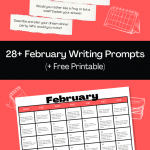
Comments loading...
Jump to navigation Skip to content
Search form
- P&W on Facebook
- P&W on Twitter
- P&W on Instagram
Find details about every creative writing competition—including poetry contests, short story competitions, essay contests, awards for novels, grants for translators, and more—that we’ve published in the Grants & Awards section of Poets & Writers Magazine during the past year. We carefully review the practices and policies of each contest before including it in the Writing Contests database, the most trusted resource for legitimate writing contests available anywhere.
Find a home for your poems, stories, essays, and reviews by researching the publications vetted by our editorial staff. In the Literary Magazines database you’ll find editorial policies, submission guidelines, contact information—everything you need to know before submitting your work to the publications that share your vision for your work.
Whether you’re pursuing the publication of your first book or your fifth, use the Small Presses database to research potential publishers, including submission guidelines, tips from the editors, contact information, and more.
Research more than one hundred agents who represent poets, fiction writers, and creative nonfiction writers, plus details about the kinds of books they’re interested in representing, their clients, and the best way to contact them.
Every week a new publishing professional shares advice, anecdotes, insights, and new ways of thinking about writing and the business of books.
Find publishers ready to read your work now with our Open Reading Periods page, a continually updated resource listing all the literary magazines and small presses currently open for submissions.
Since our founding in 1970, Poets & Writers has served as an information clearinghouse of all matters related to writing. While the range of inquiries has been broad, common themes have emerged over time. Our Top Topics for Writers addresses the most popular and pressing issues, including literary agents, copyright, MFA programs, and self-publishing.
Our series of subject-based handbooks (PDF format; $4.99 each) provide information and advice from authors, literary agents, editors, and publishers. Now available: The Poets & Writers Guide to Publicity and Promotion, The Poets & Writers Guide to the Book Deal, The Poets & Writers Guide to Literary Agents, The Poets & Writers Guide to MFA Programs, and The Poets & Writers Guide to Writing Contests.
Find a home for your work by consulting our searchable databases of writing contests, literary magazines, small presses, literary agents, and more.

Poets & Writers lists readings, workshops, and other literary events held in cities across the country. Whether you are an author on book tour or the curator of a reading series, the Literary Events Calendar can help you find your audience.
Get the Word Out is a new publicity incubator for debut fiction writers and poets.
Research newspapers, magazines, websites, and other publications that consistently publish book reviews using the Review Outlets database, which includes information about publishing schedules, submission guidelines, fees, and more.
Well over ten thousand poets and writers maintain listings in this essential resource for writers interested in connecting with their peers, as well as editors, agents, and reading series coordinators looking for authors. Apply today to join the growing community of writers who stay in touch and informed using the Poets & Writers Directory.
Let the world know about your work by posting your events on our literary events calendar, apply to be included in our directory of writers, and more.

Find a writers group to join or create your own with Poets & Writers Groups. Everything you need to connect, communicate, and collaborate with other poets and writers—all in one place.
Find information about more than two hundred full- and low-residency programs in creative writing in our MFA Programs database, which includes details about deadlines, funding, class size, core faculty, and more. Also included is information about more than fifty MA and PhD programs.
Whether you are looking to meet up with fellow writers, agents, and editors, or trying to find the perfect environment to fuel your writing practice, the Conferences & Residencies is the essential resource for information about well over three hundred writing conferences, writers residencies, and literary festivals around the world.
Discover historical sites, independent bookstores, literary archives, writing centers, and writers spaces in cities across the country using the Literary Places database—the best starting point for any literary journey, whether it’s for research or inspiration.
Search for jobs in education, publishing, the arts, and more within our free, frequently updated job listings for writers and poets.
Establish new connections and enjoy the company of your peers using our searchable databases of MFA programs and writers retreats, apply to be included in our directory of writers, and more.

- Register for Classes
Each year the Readings & Workshops program provides support to hundreds of writers participating in literary readings and conducting writing workshops. Learn more about this program, our special events, projects, and supporters, and how to contact us.
The Maureen Egen Writers Exchange Award introduces emerging writers to the New York City literary community, providing them with a network for professional advancement.
Find information about how Poets & Writers provides support to hundreds of writers participating in literary readings and conducting writing workshops.

Bring the literary world to your door—at half the newsstand price. Available in print and digital editions, Poets & Writers Magazine is a must-have for writers who are serious about their craft.
View the contents and read select essays, articles, interviews, and profiles from the current issue of the award-winning Poets & Writers Magazine .
Read essays, articles, interviews, profiles, and other select content from Poets & Writers Magazine as well as Online Exclusives.
View the covers and contents of every issue of Poets & Writers Magazine , from the current edition all the way back to the first black-and-white issue in 1987.
Every day the editors of Poets & Writers Magazine scan the headlines—publishing reports, literary dispatches, academic announcements, and more—for all the news that creative writers need to know.
In our weekly series of craft essays, some of the best and brightest minds in contemporary literature explore their craft in compact form, articulating their thoughts about creative obsessions and curiosities in a working notebook of lessons about the art of writing.
The Time Is Now offers weekly writing prompts in poetry, fiction, and creative nonfiction to help you stay committed to your writing practice throughout the year. Sign up to get The Time Is Now, as well as a weekly book recommendation for guidance and inspiration, delivered to your inbox.
Every week a new author shares books, art, music, writing prompts, films—anything and everything—that has inspired and shaped the creative process.
Listen to original audio recordings of authors featured in Poets & Writers Magazine . Browse the archive of more than 400 author readings.
Ads in Poets & Writers Magazine and on pw.org are the best ways to reach a readership of serious poets and literary prose writers. Our audience trusts our editorial content and looks to it, and to relevant advertising, for information and guidance.
Start, renew, or give a subscription to Poets & Writers Magazine ; change your address; check your account; pay your bill; report a missed issue; contact us.
Peruse paid listings of writing contests, conferences, workshops, editing services, calls for submissions, and more.
Poets & Writers is pleased to provide free subscriptions to Poets & Writers Magazine to award-winning young writers and to high school creative writing teachers for use in their classrooms.
Read select articles from the award-winning magazine and consult the most comprehensive listing of literary grants and awards, deadlines, and prizewinners available in print.

- Subscribe Now
Writing Prompts & Exercises
The time is now.
The Time Is Now offers three new and original writing prompts each week to help you stay committed to your writing practice throughout the year. We also curate a list of essential books on writing —both the newly published and the classics—that we recommend for guidance and inspiration. Whether you’re struggling with writer’s block, looking for a fresh topic, or just starting to write, our archive of writing prompts has what you need. Need a starter pack? Check out our Writing Prompts for Beginners.
Tuesdays: Poetry prompts Wednesdays: Fiction prompts Thursdays: Creative nonfiction prompts
Get immediate access to more than 2,000 writing prompts with the tool below:
Head This Way
- Printable Version
- Log in to Send
- Log in to Save

Ayşegül Savaş’s third novel, The Anthropologists , forthcoming in July from Bloomsbury, is narrated by Asya, one half of a young couple setting out to build a new life together in a foreign city. While they solidify friendships, search for an apartment, and accommodate visiting relatives, Asya begins a documentary project. Each of the novel’s vignette titles reference anthropological concepts: Notions of Loyalty, Child-Rearing, Native Tongue, Courtship, Gift Exchange, Division of Labor, Principles of Kinship, and Forms of Enchantment. As Asya reflects on anthropological distance and lenses, these headings raise questions about the conventions, expectations, and routines that constitute a life. What makes a life legible—and to whom? Write a short story with subheadings providing insight or an alternative perspective on scenes. How might they produce additional layers of complexity and ambiguity?
Coming Down Hard
“The sun had just gone out / and I was walking three miles to get home. / I wanted to die. / I couldn’t think of words and I had no future / and I was coming down hard on everything.” In Linda Gregg’s poem “New York Address,” which appears in her retrospective collection, All of It Singing: New and Selected Poems (Graywolf Press, 2008), the speaker recounts bleak existential angst. Despite the pain and darkness, there are glimmers of light. In the second half of the poem, questions are stubbornly answered with snappy, tidy pacing: “Yes I hate dark. No I love light. Yes I won’t speak. / No I will write.” Write a poem that goes all in on angst, channeling a time that felt overwhelmingly uncertain and full of trepidation. How can you experiment with sound and diction to gently steer the dramatic toward the life-affirming?
Attentiveness
Nearly fifty years ago, the writer George Perec spent three days sitting behind a café window in Place Saint-Sulpice in Paris recording everything he saw. In his short book, An Attempt at Exhausting a Place in Paris , his observations of mundane occurrences and objects often considered unnoteworthy—passersby, cars, buses, pigeons, signs, and slogans—are documented. This week situate yourself in one spot, perhaps in your home or workplace, or in a public space like a park, busy crossroad, commercial area, library, or café. Then, jot down the objects and behavior you see, and the snippets of conversation you hear. Write a lyric essay composed of these notes, trying to avoid interpretations or analysis. Taken together, how do your observations create a portrayal of a specific time or place? Pay particular attention to how one observation might lead to another, and to potential rhythms and repetitions.
Power Couple
The 2023 thriller film Fair Play , written and directed by Chloe Domont, follows the lives of a young, newly engaged couple, Luke and Emily, who are colleagues working as analysts in the cutthroat world of high finance in New York. The film focuses on the progression of their relationship, which has been kept hidden from their hedge fund office, and the bitter disintegration of their happiness after a promotion that was initially rumored to go to Luke is unexpectedly bestowed upon Emily, which situates him as a subordinate to his wife within a misogynistic workplace. Write a short story that revolves around an occurrence that catalyzes a shift in the power dynamic between two main characters who have a close relationship. What are the initial responses, and does the transformation happen suddenly or gradually? Are there gender, generational, or other cultural issues that play a role?
Organic Insinuations
“All too often, on a ‘poetry scene,’ people prioritise ‘subject matter,’” says John Burnside in a 2023 interview about his writing process by Jesse Nathan published on McSweeney’s Internet Tendency. “I am sure that, as I am working, environmental concerns insinuate their way into the content of a poem organically, as other concerns will—but I would never start from there.” Inspired by the late Scottish poet, who died at the age of sixty-nine on May 29, write a poem that springs not from a predetermined topic or subject matter, but instead allows you to “trust in the sounds, the rhythms that come out of the day-to-day, the sheer immediacy and truth of the quotidian…and the images that lead, sometimes via fairly roundabout paths, to metaphor.” Later, as you reread and revise, what do you discover is the subject of your poem? What might have organically insinuated itself into your poem?
The maintenance or restoration of native plant and animal species has long been at the heart of many ecological and conservation projects, and has historically been a focus of land and environmental stewardship principles held by native and first peoples all over the world. But what if a beloved plant or animal is considered invasive, like the palm trees of Los Angeles or the cattle of Texas? What are the effects or consequences of centuries of existence with this invasive species in a particular locale? This week reflect on the notion of belonging—what are various places and times when you have felt a strong sense of belonging, and situations when you did not feel you belonged? Consider your own perspectives and responses when you encounter someone or something else that seems invasive or does not belong.
In Stephen King’s 1983 novel, Pet Sematary , a doctor moves into a remote house in Maine with his wife, two young children, and their pet cat, and learns from a neighbor about an ancient burial ground nearby cursed by a malevolent spirit which gave it power to reanimate those buried there. This is put to the test first by the family cat, and then by members of the family who die throughout the course of King’s horror story. While each formerly dead being is returned to the land of the living, they don’t come back quite the same. Write a story in which a creature or person returns from the dead, either in actuality or under circumstances in which their reappearance feels as if they are “back from the dead.” What familiar traits remain the same and what is disconcertingly different? Is their return ultimately for the better or the worse?
“I told a friend about a spill at the grocery store, which—the words ‘conveyor belt’ vanishing midsentence—took place on a ‘supermarket treadmill,’” writes Madeleine Schwartz in a recent essay published by New York Times Magazine about her experience of negotiating with and toggling between the French and English languages after moving from New York to Paris. In the piece, Schwartz notes that as she became more comfortable with living and thinking in French, she noticed a blurring of her linguistic capabilities, including a muddling of her articulative abilities in English. Think about a time or situation when words have failed you, or you’ve drawn a blank as to the mot juste. Write a poem that traces or enacts a loss of language, perhaps using invented words, phrases, and spellings or experimenting with font sizes, line breaks, and spacing.
Edible Memories
Many foods, flavors, and dishes hold a wellspring of emotional associations because they remind us of loved ones, habits and traditions, specific locales, and a different time of our lives when we were different people. Write a series of flash nonfiction pieces this week with each segment focusing on an edible item that evokes particularly resonant memories for you. You might begin by jotting down lists of foods you ate regularly growing up—breakfasts, school lunches, vending machine go-tos, favorite fast-food joints, diners, late night spots, home-cooked specialties—as well as a few momentous meals. Who are the people you associate with each one? Aside from taste and smell, consider the surrounding environment, atmospheric sounds, time of year, and who you were at that point in your life.
Wheels and Nails
While the American proverb “the squeaky wheel gets the grease” may be one you’ve heard time and again, often in reference to the idea that whoever raises or vocalizes a criticism the loudest will be appeased, there is a Japanese saying that translates to “the nail that sticks out gets hammered down,” which points to the positives of conformity in order to maintain a productive and humble society. It can also refer to putting someone who has become too successful back down in their place. Write a story in which your main character diverges from a group of people, and sticks their neck out, so to speak. Perhaps they vocalize a contrary perspective, protest something they feel is unjust, or simply present themselves in an unconventional manner. What are the consequences? Does your story lean toward one proverbial lesson or the other, or does the conclusion demonstrate more ambiguity?
Night at the Museum
If you could spend a night at any museum, which would you choose, and why? The French publisher Editions Stock has a series of books that begins with this premise—each author selects a museum, arrangements are made for an overnight stay, and a book is written about the experience. In Jakuta Alikavazovic’s Like a Sky Inside , translated from the French by Daniel Levin Becker, she spends a night at the Louvre in Paris, where childhood memories of visits with her father are vividly recalled. “From March 7 to 8, 2020, I spent the night in the Louvre, alone. Alone and at the same time anything but,” writes Alikavazovic. Write a poem that imagines a night at a museum of your choosing, anywhere in the world. What memories will you excavate from this imagined, solitary experience?
Chosen Family
Although the origin of the term is unknown and can be defined in many ways, a chosen family is made up of a group of people who choose to embrace, nurture, and support each other despite conventional understandings of biological or marital relationships. Oftentimes a chosen family is formed to take the place of a biological family, however, in some cases, these relationships are formed to expand a family. Write a personal essay about a relationship you have with a chosen family member. How did you first meet? Was there a particular incident that catalyzed what would become an inextricable bond? Has your commitment to each other been tested in ways big or small? Reflect on past memories and experiences you have had with this special person and how your relationship has evolved over the years.
Kingdom of the Planet
In the 1968 science fiction film Planet of the Apes , which is based on French author Pierre Boulle’s 1963 novel and has spawned several sequels and a recent reboot, a crew of astronauts crash-lands on a planet ruled by apes who have developed an advanced and hierarchical civilization, complete with systems of governance, labor, scientific research, and a military force. In this far-off place, humans have been reduced to mute primitive beings who are subjugated and kept captive as workers for the primates. Write a speculative story that takes place in another universe with a premise revolving around a role reversal. What are the rules and governing structures of the society that you invent? You might decide to approach your narrative with a tone of horror, satire, or comedy to emphasize your perspective on stereotypical assumptions and social expectations.
Another Country
“I love these raw moist dawns with / a thousand birds you hear but can’t / quite see in the mist. / My old alien body is a foreigner / struggling to get into another country. / The loon call makes me shiver. / Back at the cabin I see a book / and am not quite sure what that is.” In these eight lines that comprise Jim Harrison’s poem “Another Country,” which appears in his final collection, Dead Man’s Float (Copper Canyon Press, 2016), the late poet moves between observations about a natural outdoor setting and the speaker’s own bodily presence, arriving in the final two lines at a sentiment that expresses a feeling of defamiliarization at the seemingly mundane sight of a book. This week write a poem that explores the concept of being so absorbed in one environment or circumstance that to behold a different scene is like traveling to a strange and unknown realm.
Self-Healing
A recent study in Scientific Reports journal revealed that, for possibly the first time, a nonhuman wild animal was seen using plant medicine to heal an active wound. In a rainforest in Indonesia, a Sumatran orangutan was observed ripping off leaves from a climbing vine plant, chewing them, and applying the plant sap to treat a wound on his face, which then healed after a few days. Write a personal essay on the theme of self-healing. Think about experiences when you’ve witnessed another person perform this task, or particularly resonant memories that pertain to your own past behavior. What are the primary emotions present throughout this process? What instances of self-treatment or self-medication in film, art, or literature created an impression on you?
Campus Story
Take inspiration from the concept of a campus novel—which takes place in and around the campus of a university and often involves the intertwined dynamics of students, professors, and conventions about learning and power—and write a story that engages with a school setting, whether prominently situated in the context of the plot or used for a particular scene. Some recent additions to the campus novel canon include Elif Batuman’s The Idiot (Penguin Press, 2017), Xochitl Gonzalez’s Anita de Monte Laughs Last (Flatiron Books, 2024), Kiley Reid’s Come and Get It (G. P. Putnam’s Sons, 2024), and Brandon Taylor’s Real Life (Riverhead Books, 2020). Will you include a character who is a student, teacher, administrative staff member, custodial worker or caretaker, or possibly an alumni revisiting the past? Consider the multitude of ways the incorporation of an educational environment might permeate the atmosphere of the narrative.
The Last Friend
“The day the last friend / dies / we sit alone. / A visitor / from outer space / tries hard / to summon us. / Someone says / EAT DEATH. / I fish around for answers / but the questions / still won’t come,” writes Jerome Rothenberg, who passed away in April, in his poem “The Last Friend.” Included in his collection of one hundred poems, A Book of Witness: Spells & Gris-Gris (New Directions, 2022), the poem presents a list of statements and observations, many of which refer to death or dying in some personal way, though the connections are enigmatic and the logical progression is oblique. Try your hand at writing a poem that mentions its subject directly, but which also deliberately obfuscates or remains ambiguous in its intentions. How might using the “I” as a witness include the reader into your point of view?
Mind Your Manners
The New York City culture and news website Gothamist recently asked New Yorkers about their thoughts on sidewalk etiquette in the crowded, bustling streets of their beloved city. What are the rules, who has the right-of-way, and who should yield? Respondents focused on always walking to the right of the sidewalk and to “move quickly and never stop.” One thoughtful respondent considered the cultural differences of sidewalks used for recreational strolls versus commuting. But the overall consensus was that among nine-to-fivers, tourists, parents with kids, dogwalkers, bicyclists, and groups, seniors deserve the right-of-way. Write an essay about the unwritten rules or etiquette you have observed in your daily surroundings. How have these common practices adapted to fit the needs of different people? Do they evolve over time as social norms change? Consider some of your own experiences with how public etiquette has helped or hindered harmonious community life.
The term sub rosa means “under the rose” in Latin and refers to something said or done in private. The rose has been associated with secrecy since ancient times, a decorative symbol often carved and painted in places like meeting rooms, banquet halls, and confessionals as reminders of confidentiality. This week write a short story that revolves around a conversation or discussion that occurs sub rosa in an enclosed space. Does a certain detail get leaked out or overheard? How might the secretive nature place a burden on your characters? Consider the ways in which the atmosphere and tone of your story feel distinctive in the time and space of your sub-rosa conversation versus the scenes that take place before or after the talk.

Wisdom in Translation
In the anthology Another Room to Live In: 15 Contemporary Arab Poets (Litmus Press, 2024) edited by Omar Berrada and Sarah Riggs, multinational and multilingual poet-translators challenge foundational narratives and rework mythologies through poetic expression. Yasmine Seale’s poem “Conventional Wisdom (Arabic Saying Translated Twenty Ways)” is composed of translations of an ancient aphorism expressing the inextricable place of poetry within Arab cultural heritage. Each line presents a variation on the truism: “Poetry is the record of the Arabs / The art of poetry is Arabs, collected / Good poetry is a list of Arabs / To speak in verse is to remain in Arab memory / To surpass another poet is the Arab odyssey.” Write a poem inspired by this idea of translating a proverb or maxim—either from another language or from English into English. How might you creatively interpolate different “translations” of the saying by incorporating connotations and riffing on free associations and personal experiences?
In Response
In a recent interview with Aria Aber for the Yale Review , when asked his thoughts on the responsibility of the poet, Jackson Prize–winning poet Fady Joudah says, “I often think that the responsibility of the poet is to strive to become the memory that people may possess in the future about what it means to be human: an ever-changing constant. In poetry, the range of metaphors and topics is limited, predictable, but the styles are innumerable. Think how we read poetry from centuries ago and are no longer bothered by its outdated diction. All that remains of old poetry is the music of what it means to be human.” Write a creative nonfiction piece that presents your personal theory of the responsibility of a writer or an artist. To construct an expansive approach, you might use observations about how different creative disciplines overlap in their goals, or consider what has remained resonant as the arts make their mark throughout various eras.
Earth to You
In honor of Earth Week, write a scene that revolves around a character who experiences an unexpected moment in a natural environment that produces a sensation of wonder, perhaps an unusual encounter with wild flora or fauna. You might contrast the elements of this scene with others in your story in which the character is interacting solely with humans or only attuned to the sounds, rhythms, and sights of city life and densely packed civilization. Is the occurrence mind-bogglingly quick and then reflected upon in hindsight, or does time slow down in the scene? How do you manage or manipulate the pacing and rhythm of your prose to draw attention to the emotional and psychological response of the character?
From Dirt Level
In Sharon Olds’s poem “May 1968,” the speaker recounts the memory of spending the night with other protesting students, who lay down their bodies on a New York City street at a university’s campus gates in order to obstruct the mounted police force that had been called in. While “spine-down on the cobbles,” she observes the city and surrounding scenery—the soaring buildings and the police and horses’ bodies—as she gazes upward, thinking about the state of her pregnant body. Write a poem this week from the vantage point of lying face-up, “from dirt level.” What circumstances bring you into this position? How does this upward point of view transform what you see, and how you feel about your own body?
More, please? Or, no more, please? In The Fast: The History, Science, Philosophy, and Promise of Doing Without (Avid Reader Press, 2024), John Oakes recounts his personal experience conducting a weeklong fast and examines the practice’s history and place within a wide range of religions and philosophies. The book also explores the act of self-deprivation and the potential transformative benefits of subtracting rather than adding to one’s life. “The act of fasting…won’t stop routine, but impedes it for a bit, signifying a shift and a determined unwillingness to follow standard operating procedure,” writes Oakes. Use this idea to consider your personal relationship with consumption—of food, conversation, media, clothes, space—and write a personal essay that reflects on what you might otherwise take for granted.
All in Your Head
In “Table for One,” a short story from Korean author Yun Ko-eun’s new collection of the same name, translated by Lizzie Buehler and published by Columbia University Press in April, a surreal quality seeps into the tale of a lonely office worker who enrolls in a course to make solitary dining easier. Tips from the course include: “Target corner tables rather than those in the middle. Seats at the bar are also good. Hang your coat or bag on the chair facing you and take advantage of tools like a book, earphones, a cell phone, or a newspaper.” The fantastic element of the story lies less in the oddity of the premise than in the narrator’s meticulously recounted neuroses and detailed rendering of processes that become seemingly cyclical. Write a scene that focuses on your character’s minute observations as they attempt to overcome something debilitating. Does the situation lend itself to a quirky or dark sense of humor?
About Our Writing Prompts
What is a writing prompt and how do you use one? Whether you find yourself in front of a blank page or stuck in a work-in-progress, writing prompts can offer a spark that ignites your creative thinking and can lead to new writing. Prompts offer guidance, fresh ideas, and direction for writers of all levels of experience. First, choose a prompt for the genre in which you’d like to write, then carefully read it and consider what it is asking you to think about. It could be a specific setting, a writing technique, or an element of an imagined character; a specific poem, story, essay, song, book, or film from which you might take inspiration; or a current event or a topical theme. A writing prompt is filled with endless possibilities—and there is no wrong way to use one to generate new writing!
What makes our writing prompts unique? We have an archive of over 2,000 prompts, all original and offered here and in our weekly newsletter . You’ll find a variety of poetry, fiction, and creative nonfiction prompts—some inspired by recent and classic literature and other forms of art, current events, and writing practices, and others that offer guidance for a particular form, including sonnets, erasure poetry, flash fiction, lyric essays, and more. For more than fifty years, Poets & Writers has supported creative writers with trustworthy information and inspiration, and our weekly prompts provide a regular dose of encouragement and motivation.
What are the benefits of using writing prompts? Writing prompts can help you get unstuck if you’re in a rut and the ideas aren’t flowing. But even if you’re not experiencing writer’s block, writing prompts can offer a fresh take or a new approach to a work-in-progress. Writing prompts can also provide the motivation to experiment with a new form, try out a new genre, or learn about other writing techniques. And writing prompts are an invaluable tool for teachers who want to encourage and inspire their writing students.
What is this list of Best Books? Best Books for Writers is a list of essential books for creative writers that we curate to support your writing practice. Every week, we add a book (whether new or a classic) with a synopsis and highlights. Included are books on the writing life, anthologies of craft essays, collections of lectures, practical guides with writing exercises, and more.
Poetry writing prompts Every Tuesday we post a new poetry prompt to guide you in your practice. Get to know the work of contemporary and classic poets, as well as a variety of poetic forms.
Fiction writing prompts Every Wednesday we post a new fiction prompt to spark your imagination. Take inspiration from recently published short stories and novels, and of course, the classics.
Creative nonfiction writing prompts Every Thursday we post a new creative nonfiction prompt to help your exploration of this ever-changing genre. These prompts include information and inspiration for a variety of essays as well as memoirs. Discover new writers and their craft, and fresh ways to generate writing inspired by your life.
Need a starter pack? Check out our Writing Prompts for Beginners .
- Grades 6-12
- School Leaders
100 Last-Day-of-School Activities Your Students Will Love!
50 Creative 3rd Grade Writing Prompts (Free Printable!)
Taking the leap from the primary level to the intermediate grades.
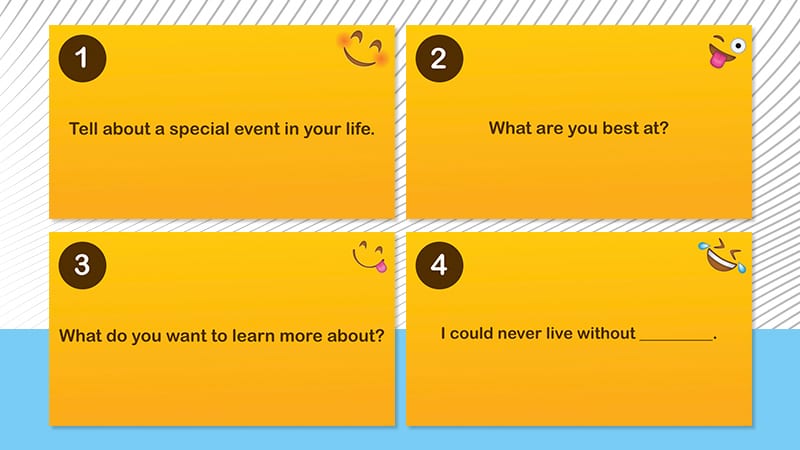
Third grade is a huge transitional year in elementary school. Third grade writers have learned foundational concepts and skills and have had time to practice. Now they are developing more complex skills as they dig deeper, learn to make connections, and analyze the topics they write about. Here are 50 third grade writing prompts to help your students master and refine their writing skills.
If you’d like even more upper elementary writing prompts, we publish new ones twice a week on our kid-friendly site: the Daily Classroom Hub . Make sure to bookmark the link!
(Want this entire set in one easy document? Get your free PowerPoint bundle by submitting your email here, so you’ll always have the prompts available!)
1. Tell about a special event in your life.
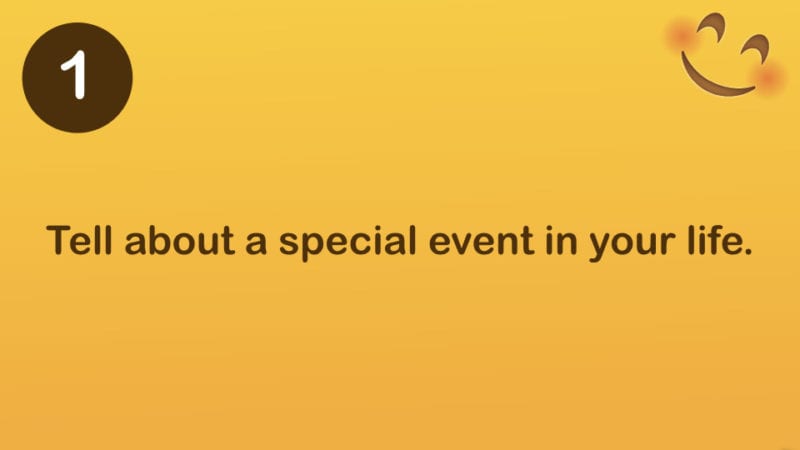
2. What are you best at?
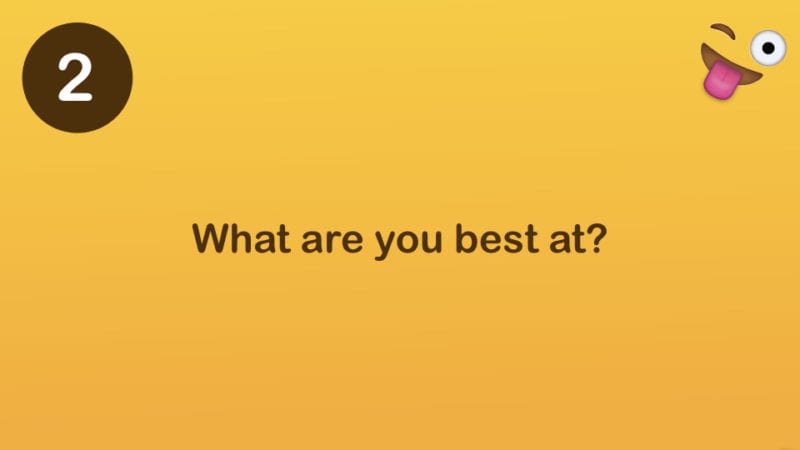
3. What do you want to learn more about?
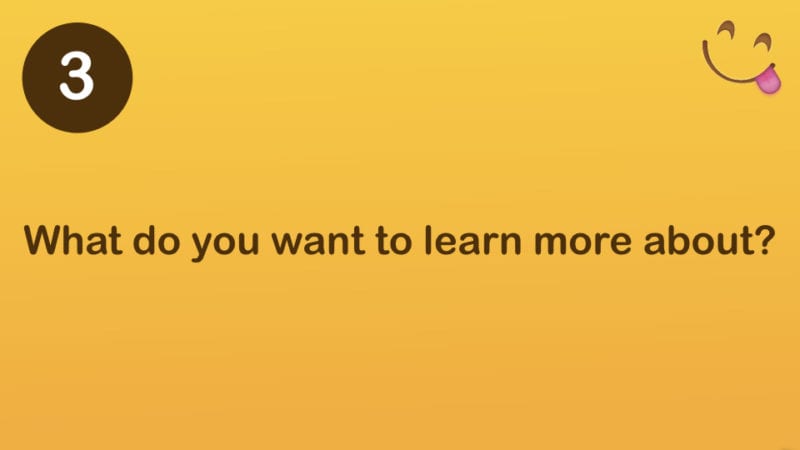
4. I could never live without______.
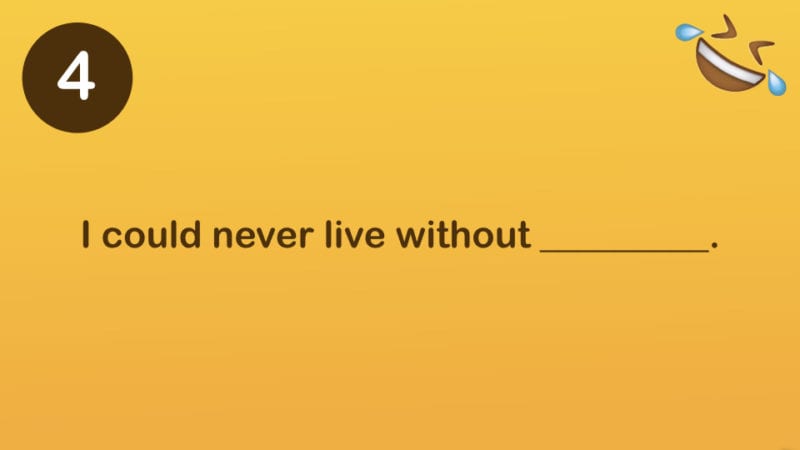
5. If you could go anyplace in the world, where would you go and why?
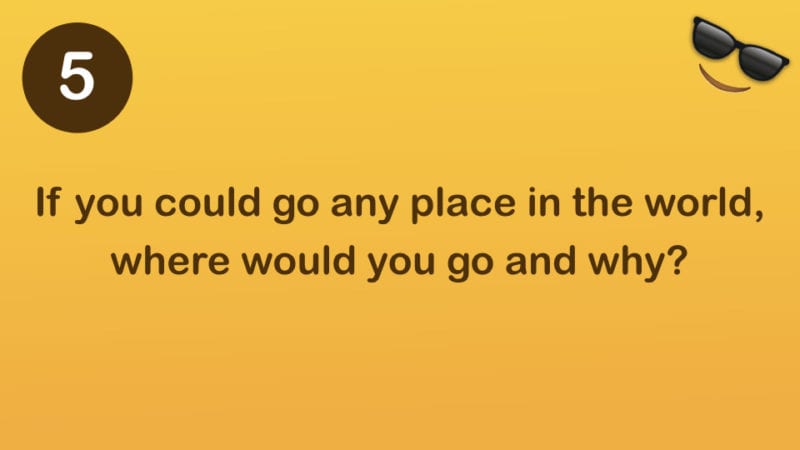
6. Interview one of your parents or grandparents and ask them to tell you a story from their childhood. Share their story here.
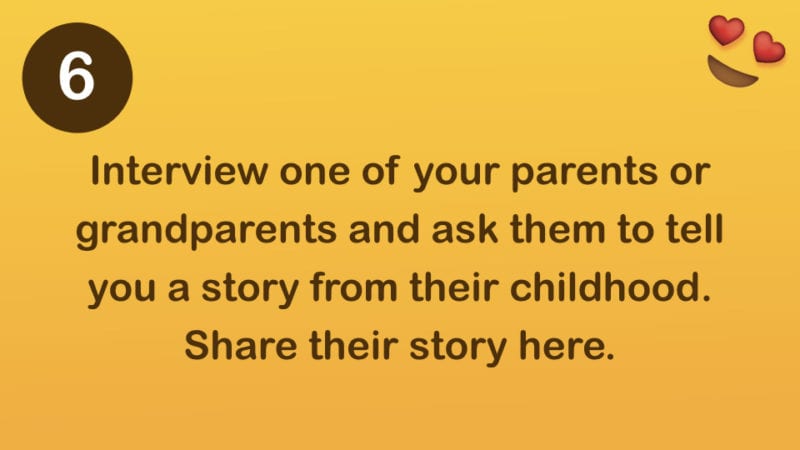
7. Describe one of your favorite book characters. Tell three things about their personality.
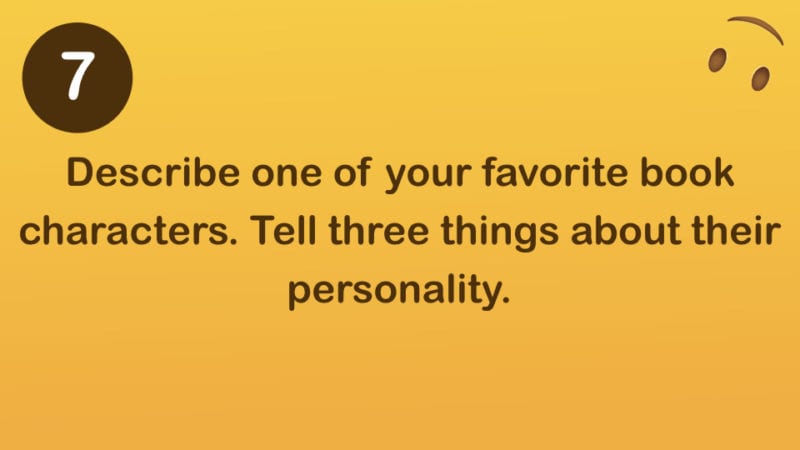
8. Do you think third graders should have to do chores at home? Why or why not?
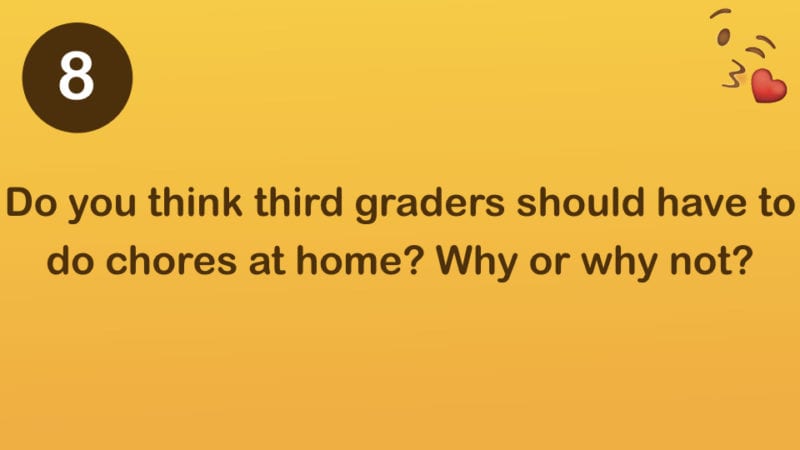
9. What is something you would change about school if you could?
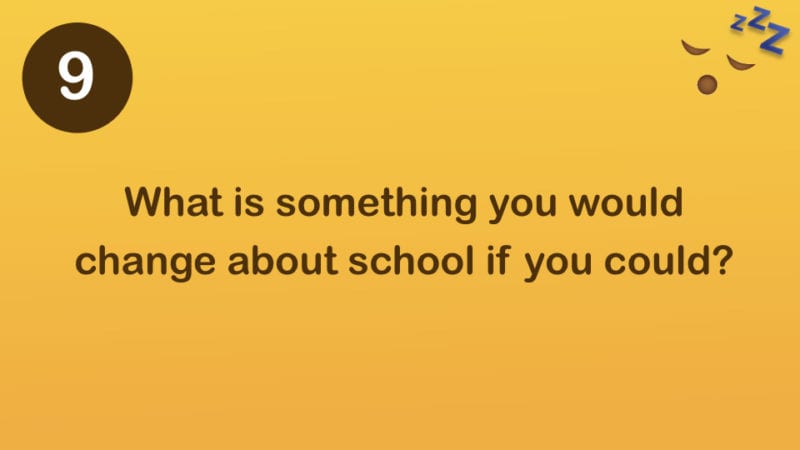
10. Tell about a time you helped somebody.
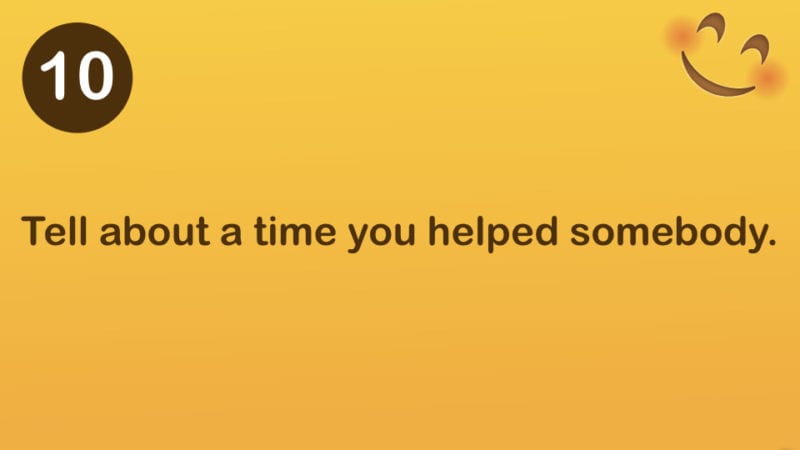
11. Tell about a time somebody helped you.
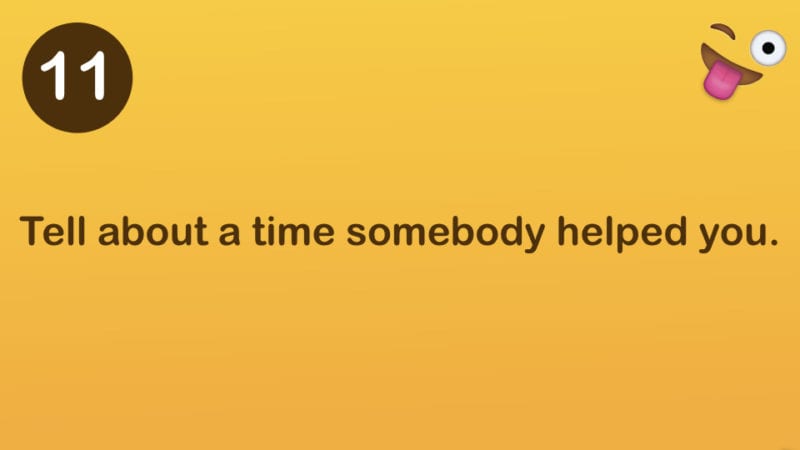
12. Tell about a memorable “first” in your life. For example, the first time you ate a particular kind of food, the first time you met your teacher, etc.
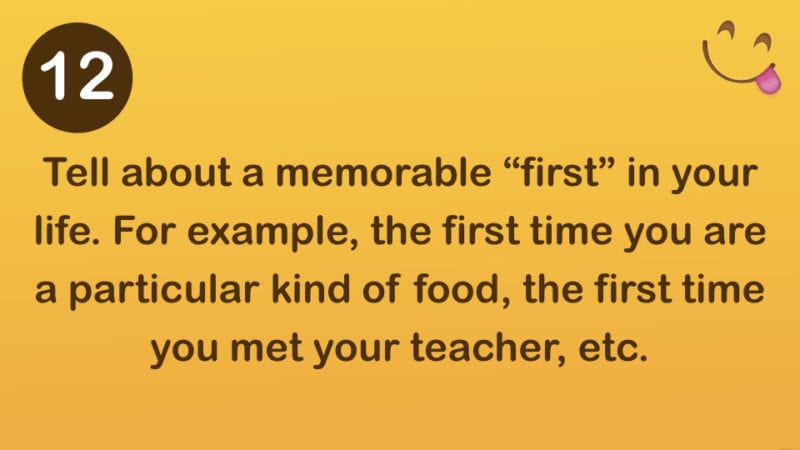
13. Describe step by step how to make a pizza.
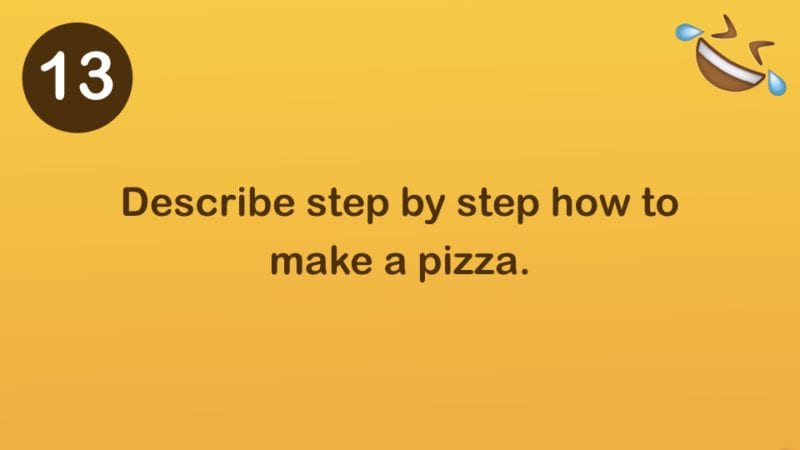
14. What does it mean to be a hero?
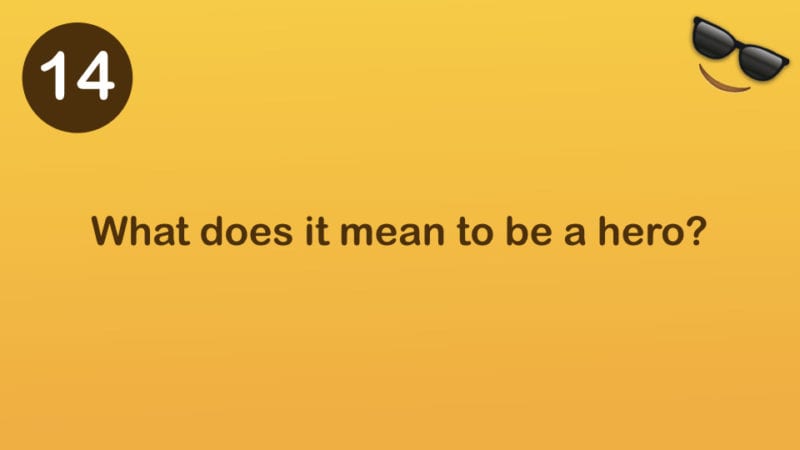
15. I am afraid of _______ because_______.
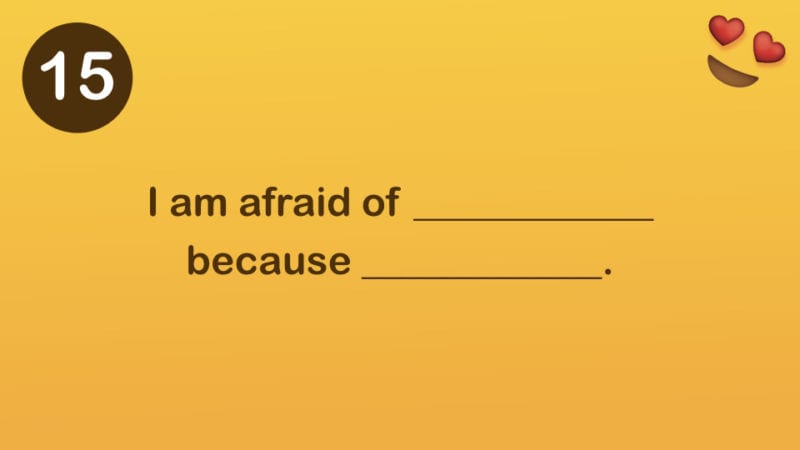
16. What is the difference between being polite and rude? Give three examples.
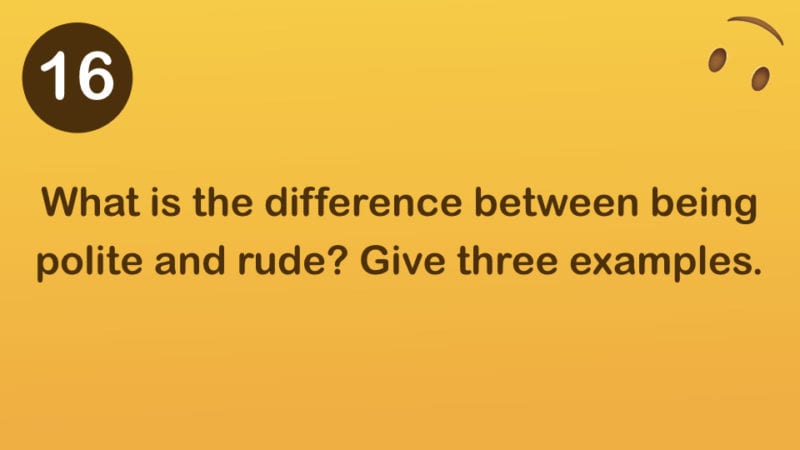
17. What is the most important rule in the classroom?
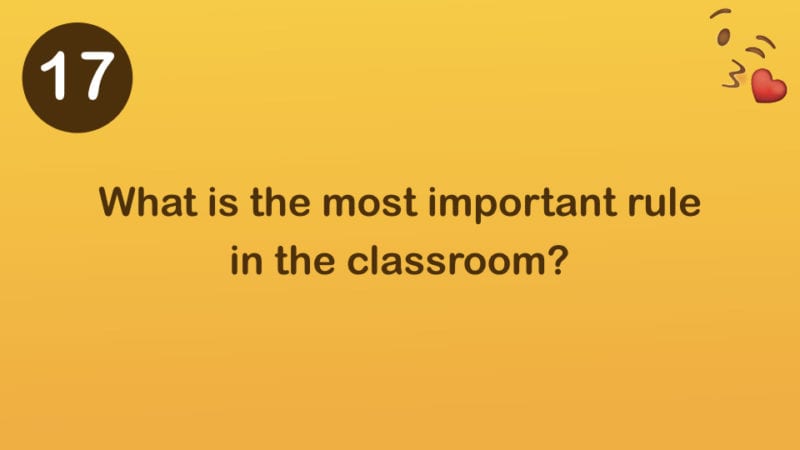
18. What are the three most important qualities you look for in a friend?
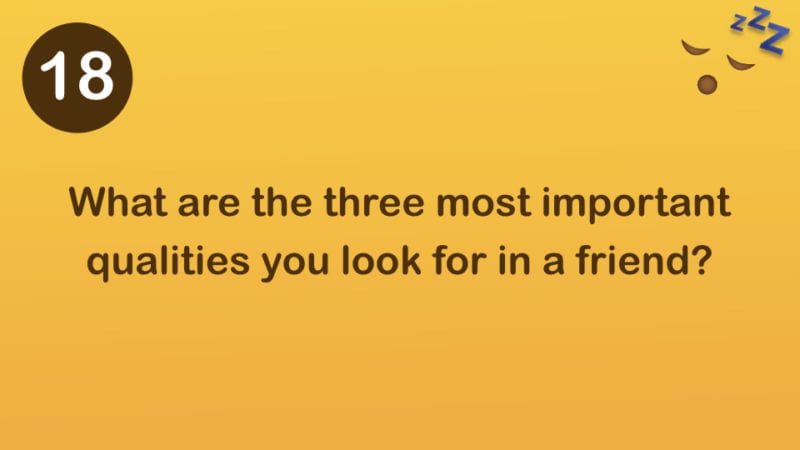
19. Do you think kids should be assigned homework? Why or why not?
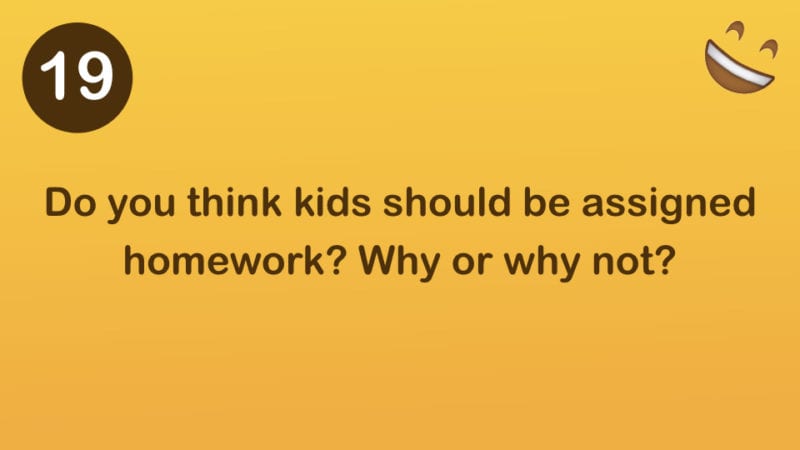
20. Nature gives us many beautiful things—plants, animals, water, weather, stars and planets, etc. What is one of your favorite things in nature and why?
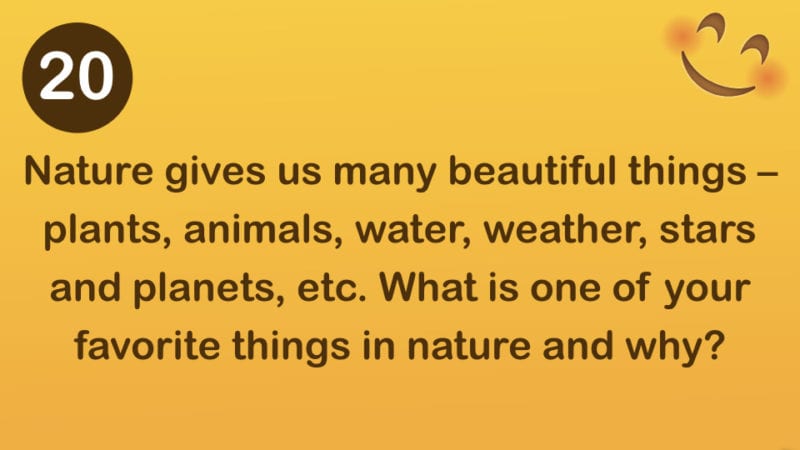
21. If I were a spider, I’d _______.
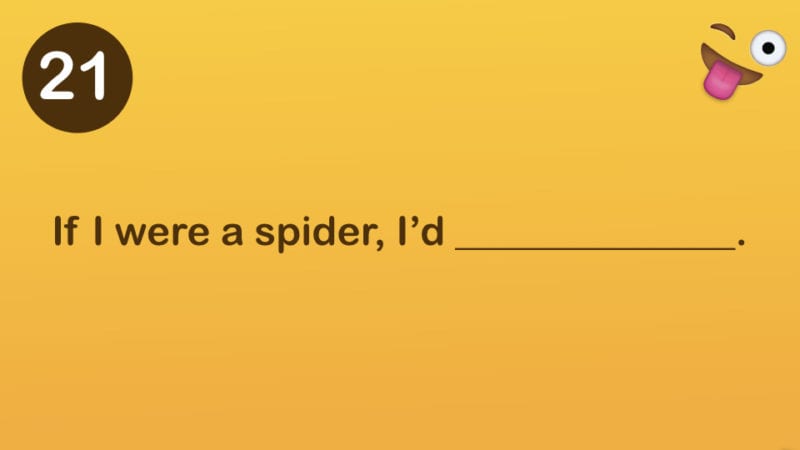
22. Three things that make me happy are ______.
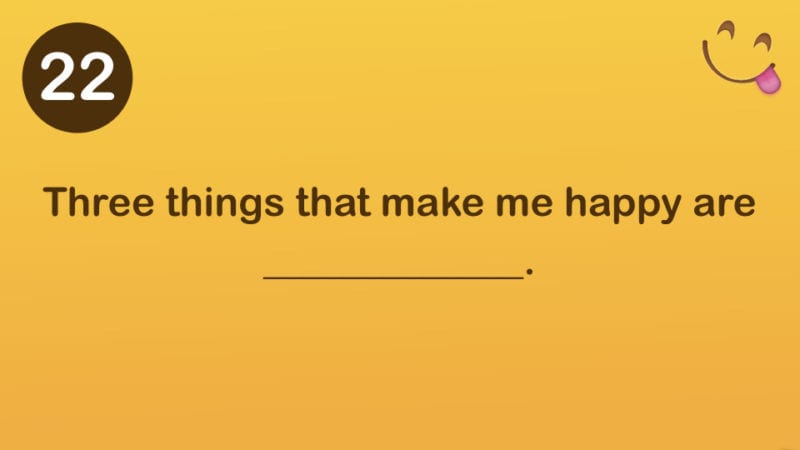
23. What is your favorite holiday and why?
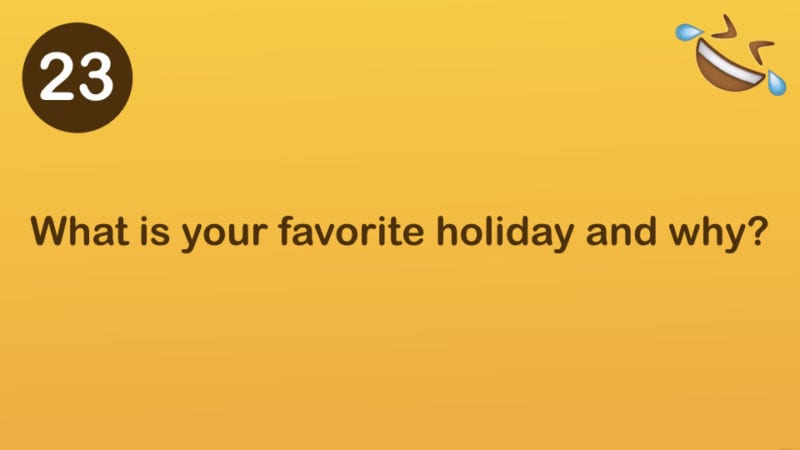
24. Tell about one of your family’s unique traditions.

25. If you could have a pet, what would you choose? How would you take care of it?
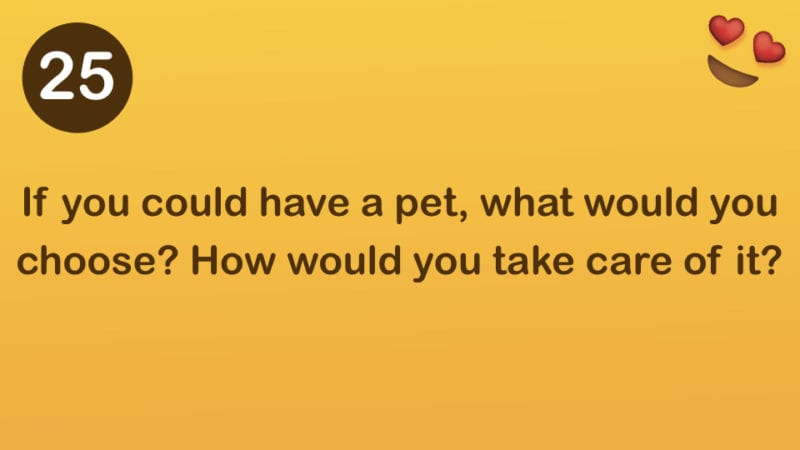
26. Write about a dream you recently had.
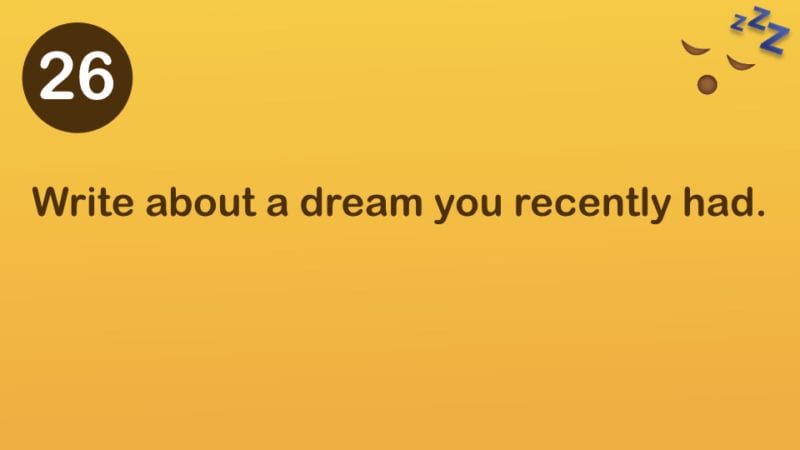
27. Tell about a person that inspires you and why.
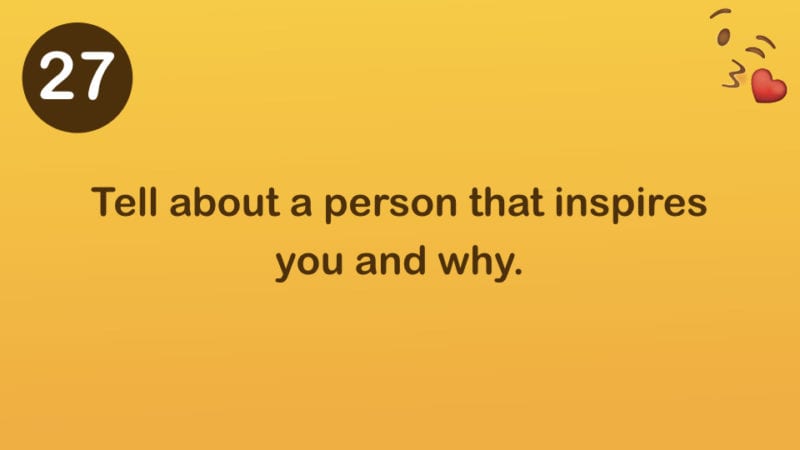
28. Name five things you are thankful for and why you are thankful for them.
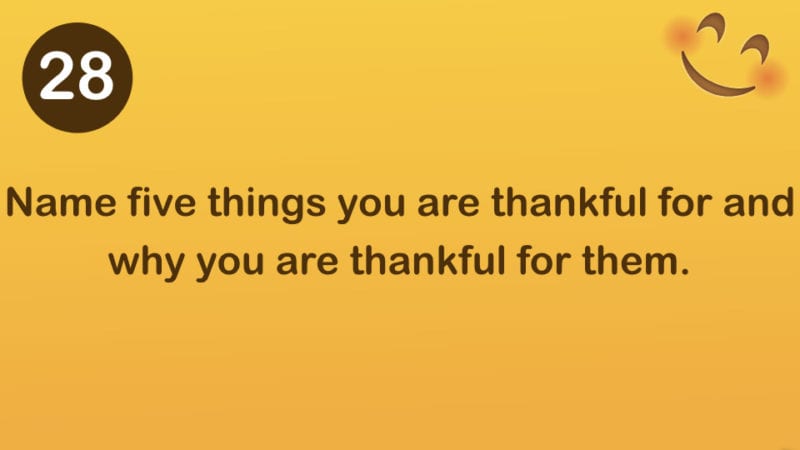
29. What are ways you can be a good citizen?
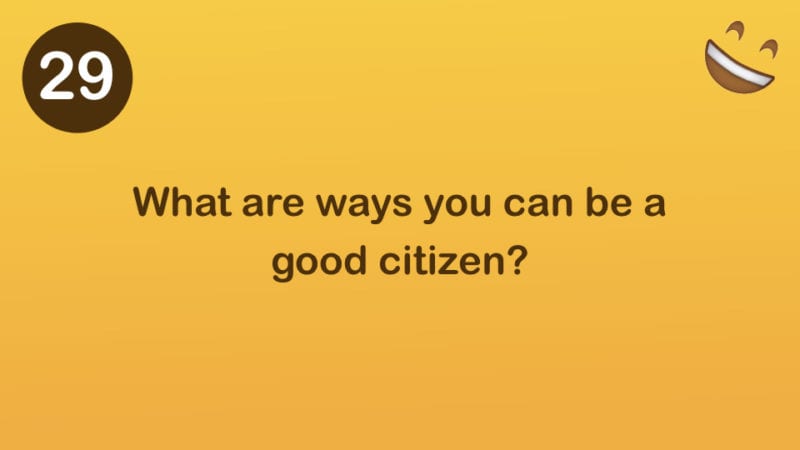
30. When you and a friend disagree, how do you work it out?
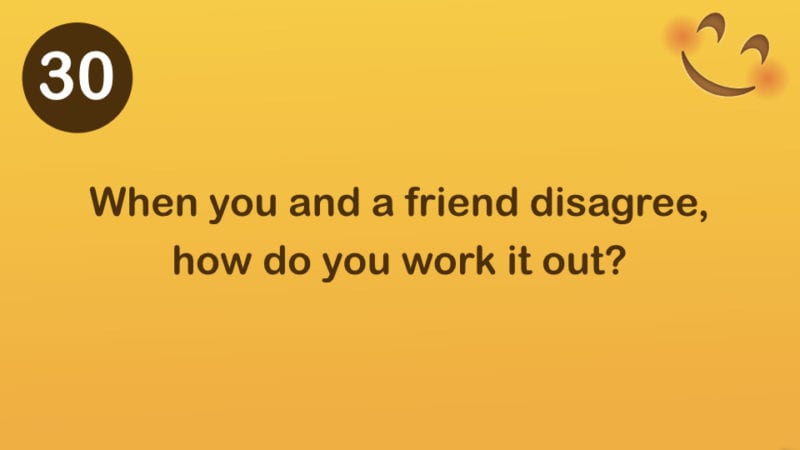
31. What do you think the world will be like in one hundred years?
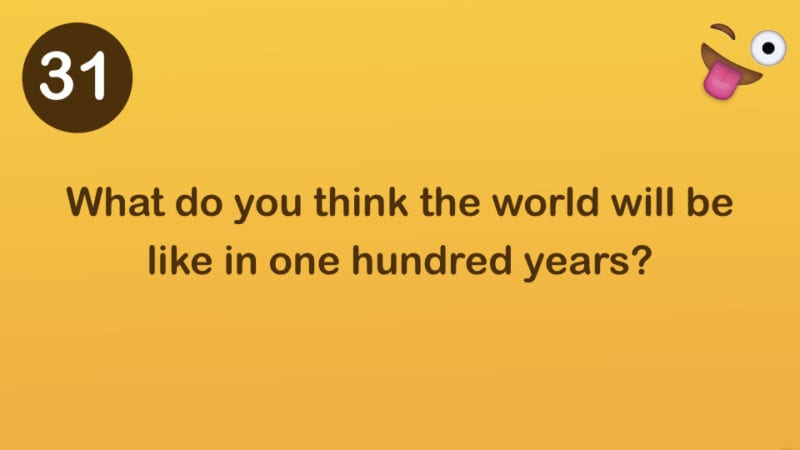
32. What is your favorite type of weather? Why?
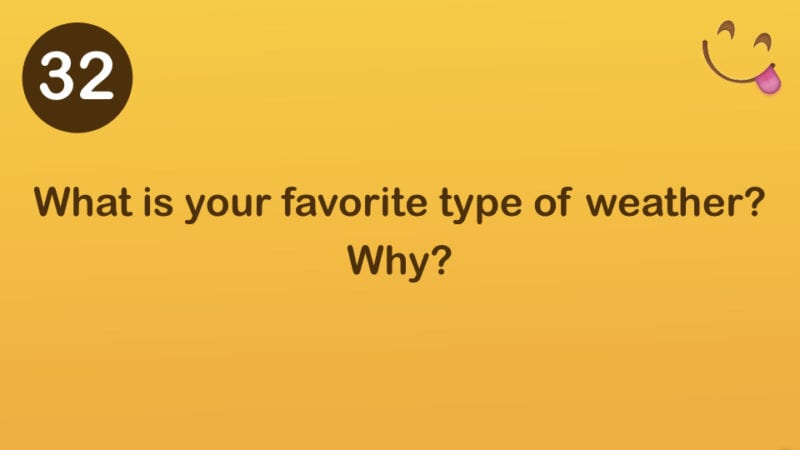
33. What superpower do you wish you had? Why?
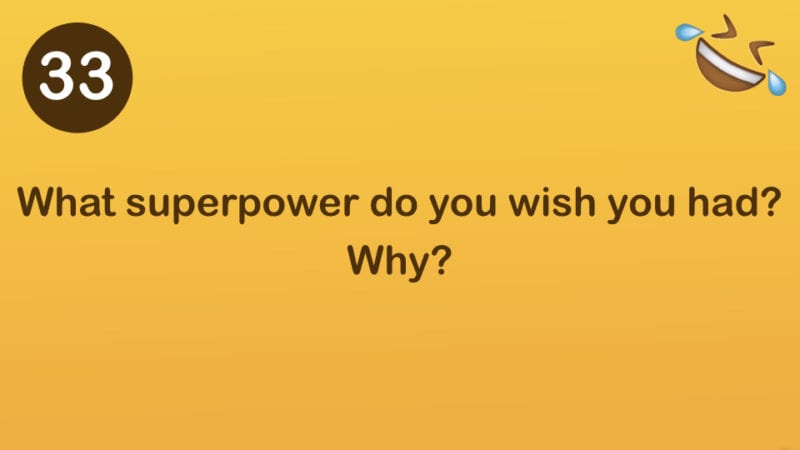
34. What famous person would you like to meet? Why?
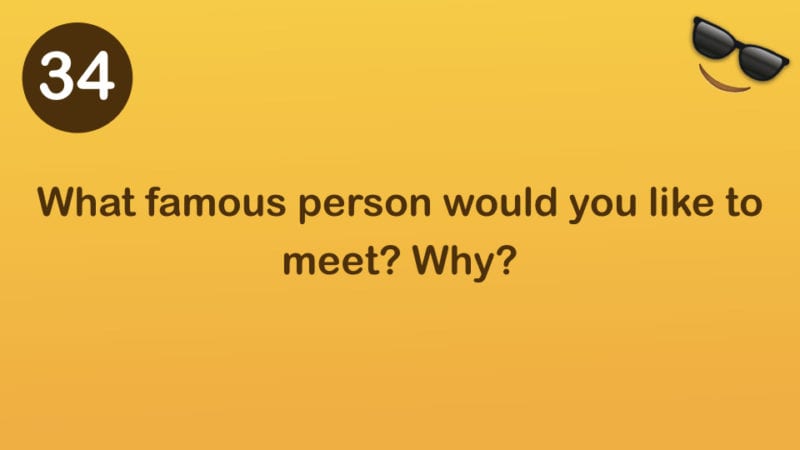
35. In your opinion, which animal makes the best pet? Give three reasons for your answer.
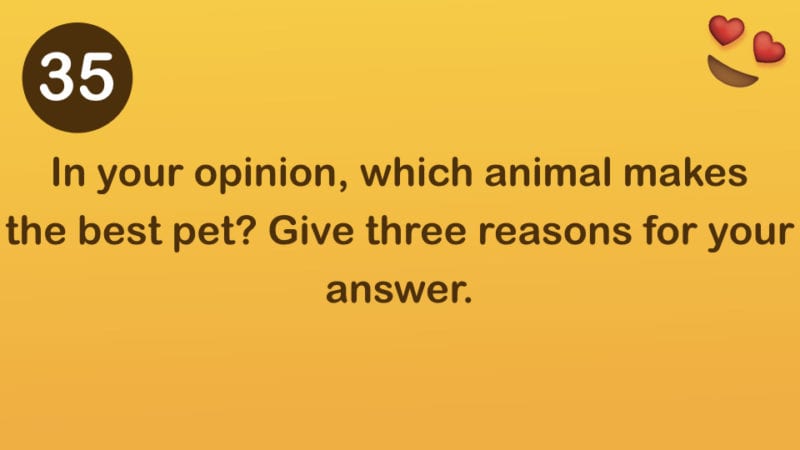
36. If someone gave you $100, how would you spend it?
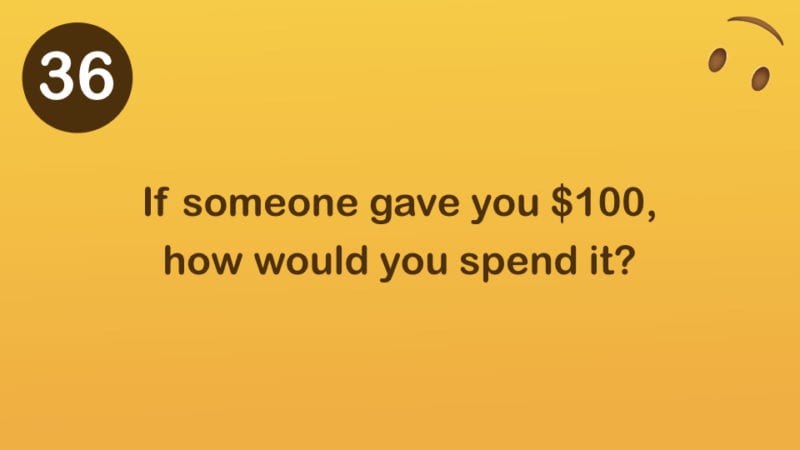
37. Should third graders have cell phones? Why or why not?
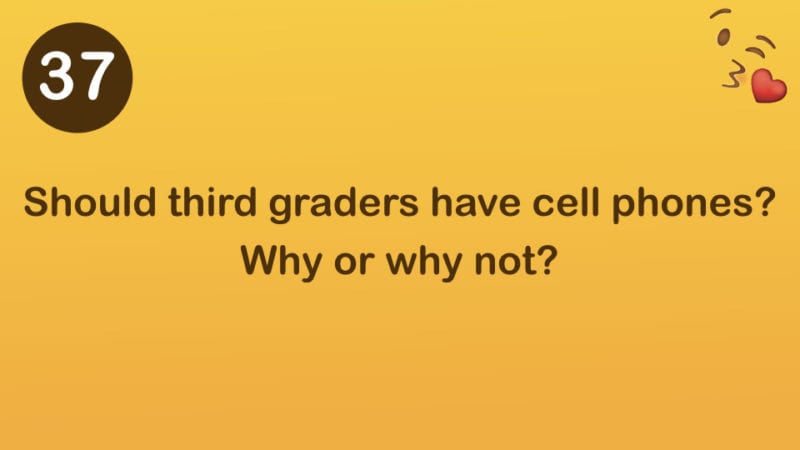
38. If you could be an Olympic athlete, what sport would you participate in?

39. Write about your “getting ready for school” routine.
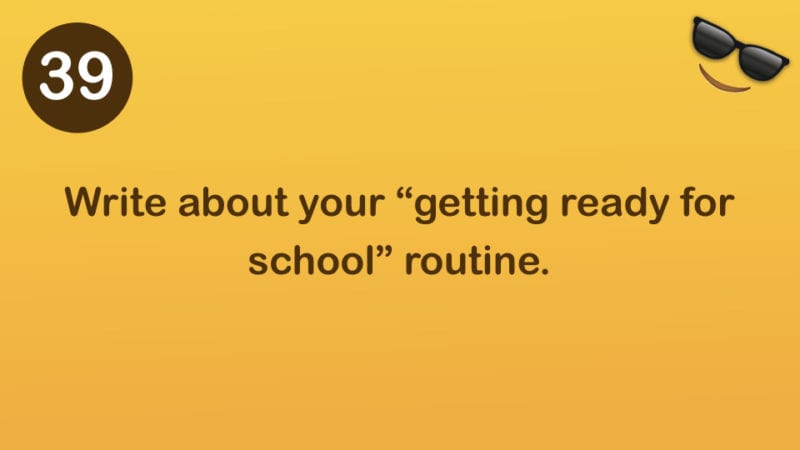
40. Write about your “getting ready for bed” routine.
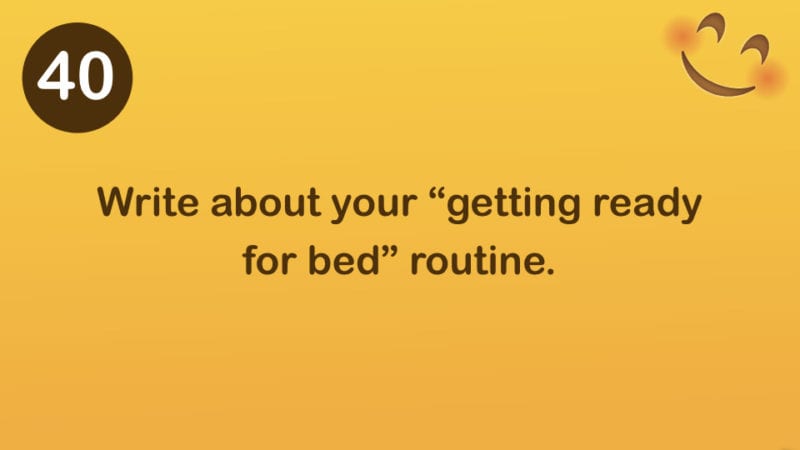
41. If you could travel through time like Jack and Annie in the Magic Tree House, where would you go?
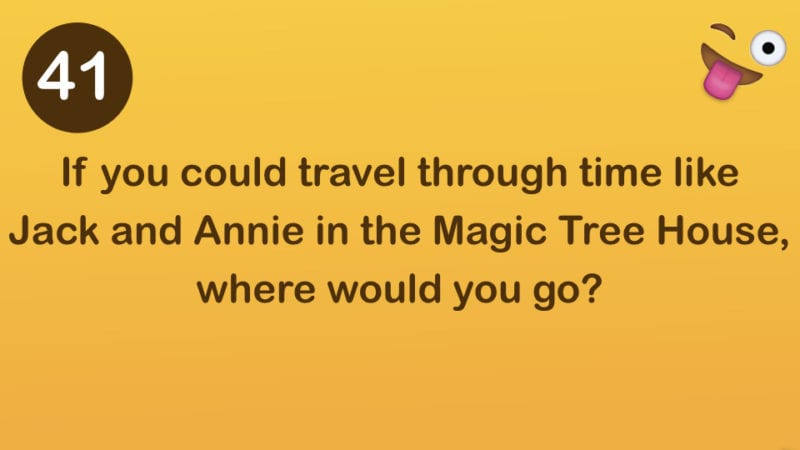
42. In your opinion, what does a perfect weekend look like?
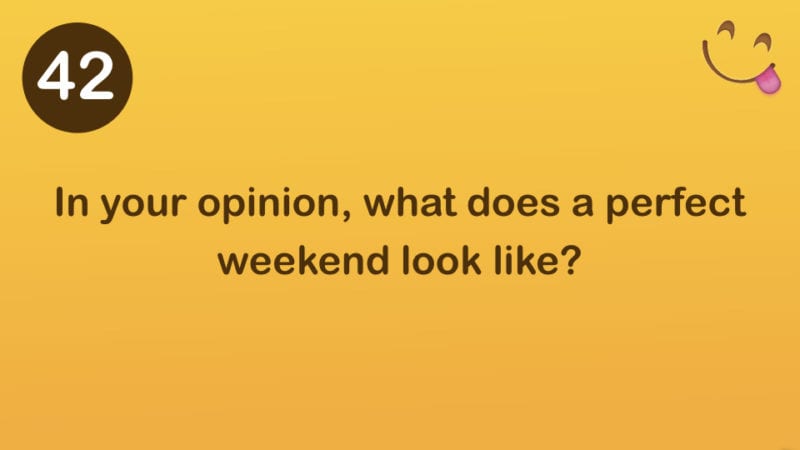
43. Write about the last time you felt really angry. What happened and how did it all work out?
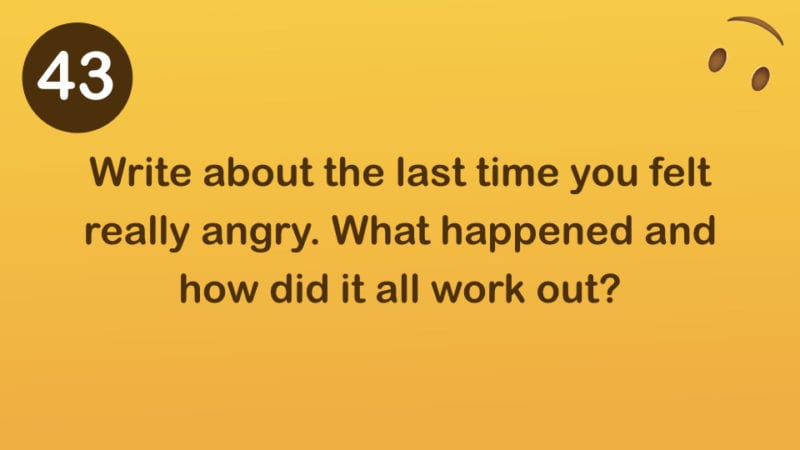
44. Pretend there was a special zoo where animals could talk. Which animal would you talk to and what are three questions you would ask?
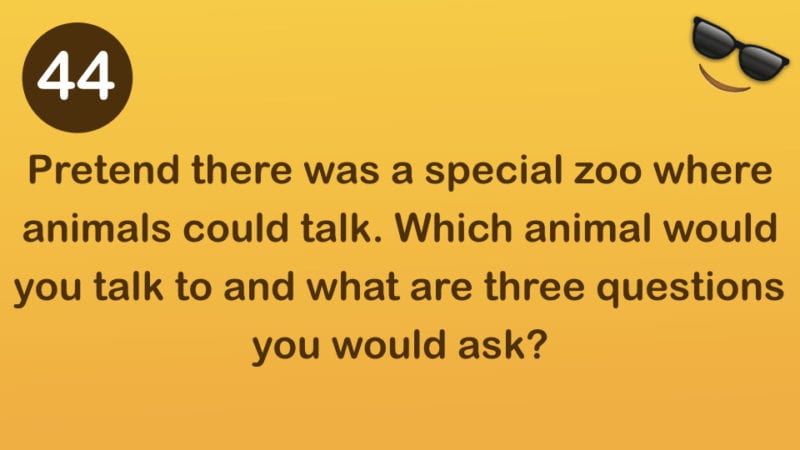
45. What is your favorite thing with wheels? Why?
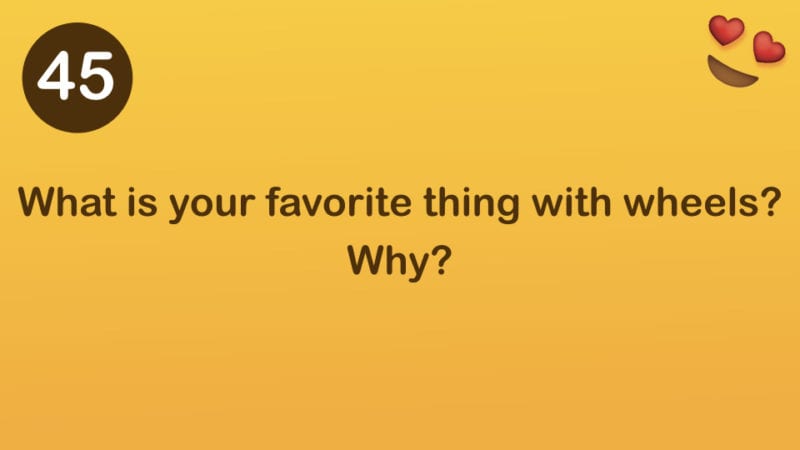
46. Tell the story of Goldilocks and the Three Bears from the point of view of Baby Bear.
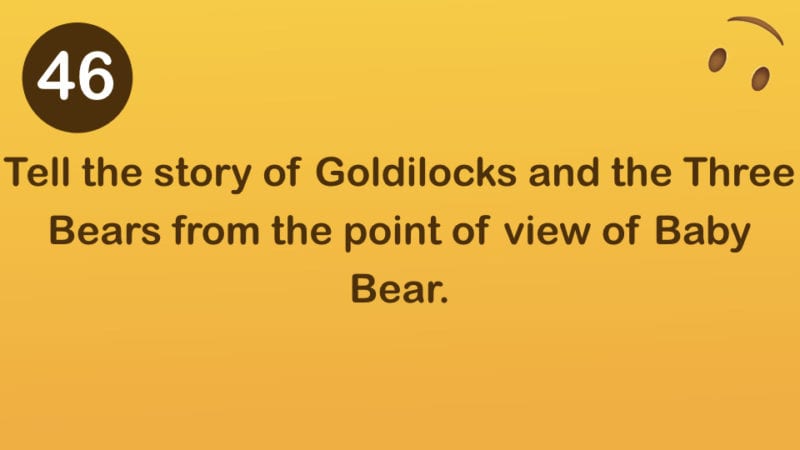
47. What do you think would grow if you planted a magic bean?
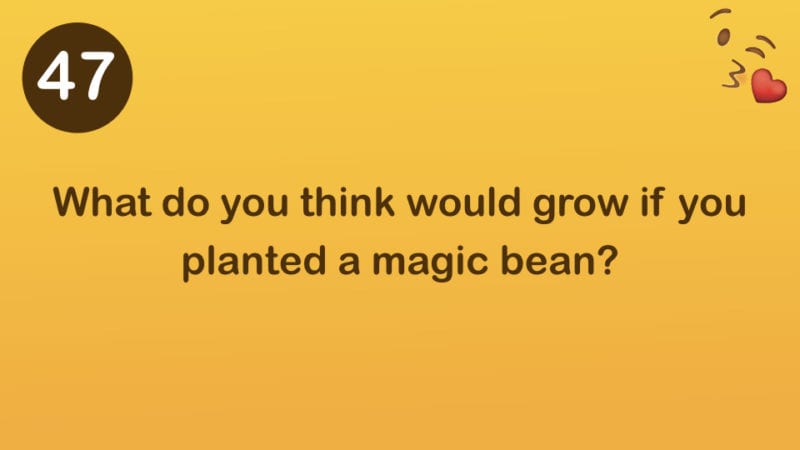
48. Which would you rather be able to do—fly or read people’s minds? Why?
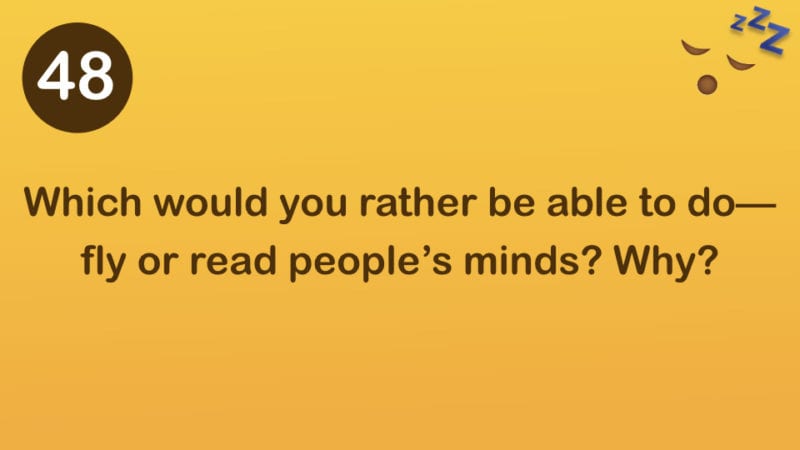
49. Tell about an adult in your life that you admire.
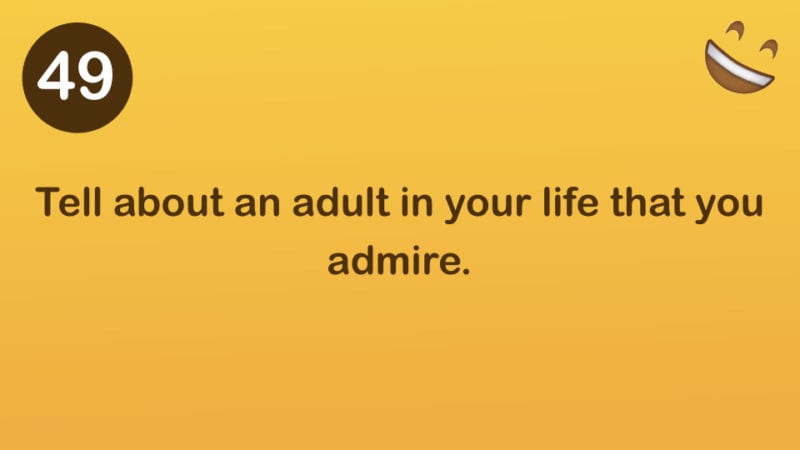
50. If you were traveling for a week and could only bring a backpack, what would you pack?
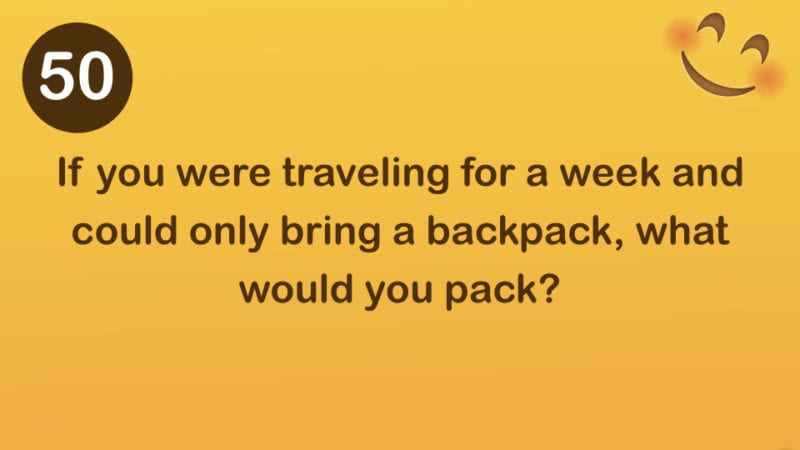
Get My Third Grade Writing Prompts
Love these third grade writing prompts? Make sure to check out our third grade jokes to start the day !
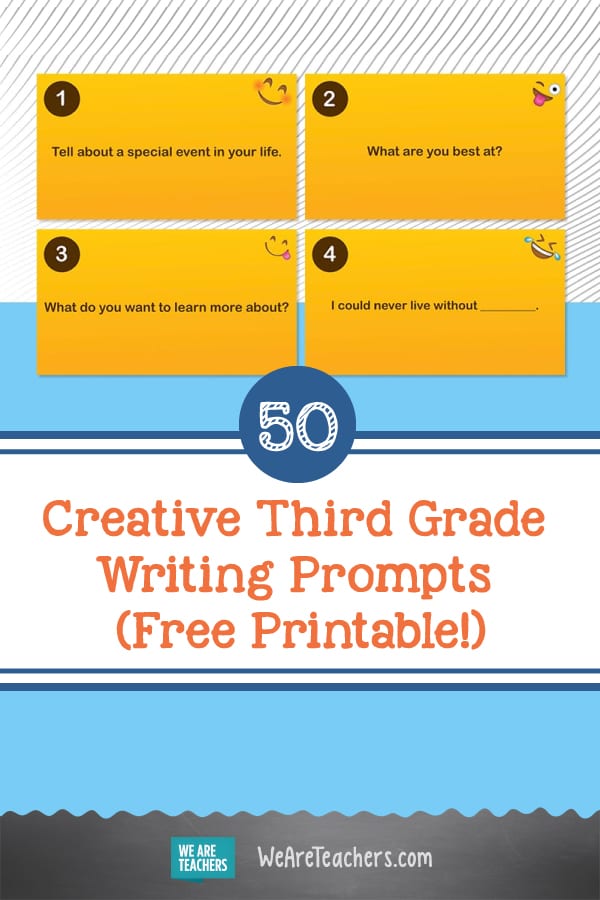
You Might Also Like
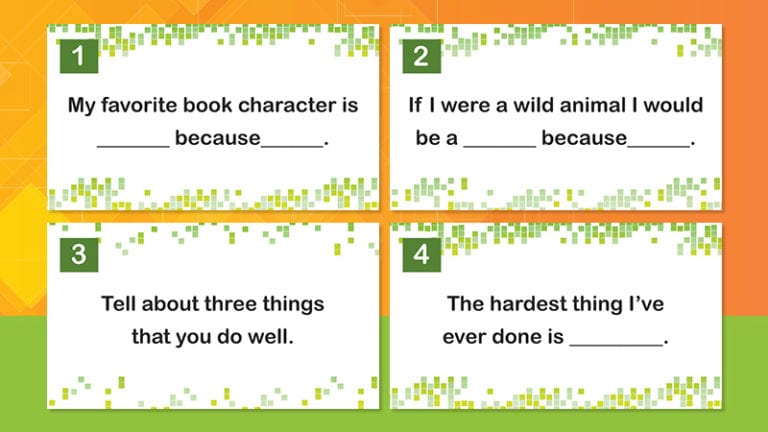
25 Inspiring Second Grade Writing Prompts (Free Printable!)
When my friend is sad, I can help by _____. Continue Reading
Copyright © 2024. All rights reserved. 5335 Gate Parkway, Jacksonville, FL 32256
JournalBuddies.com
Journal Buddies Jill | July 24, 2023 July 10, 2023 | Journal Prompts & Writing Ideas , Prompts by Season
53 Sizzling Summer Fun Writing Ideas
Hooray for Summer Fun Writing Ideas and Prompts— As summer approaches, you may have some highly distracted and excited students who are ready for vacation. Instead of bringing them from daydreams to lessons, take your lessons to their daydreams with these exciting writing ideas. Yes!
As if your students weren’t already prepared for summer, get them ready with these writing prompts on Summer Fun! Their excitement will heat up as they get ready for vacation.
With these writing prompts for kids, students will get the chance to think about fun ideas for summer as they think about what they’ll spend their summers doing and the best activities for a hot summer day.
You see…
While they consider where they would have their ideal summer vacations, they’ll get the chance to exercise their imaginations though still sitting in the classroom.
Plus…
Students enjoy journal writing because it gives them the chance to tap into new ideas and exotic places.
Best of all…
Through journaling, students can explore their thoughts and get to know their desires and beliefs in a new way. With these super summer writing ideas and prompts, students will love the chance to write about one of their favorite topics of all: SUMMER!
53 Super Summer Fun Writing Ideas & Prompts
- Write about something fun you could plan for your family to do this summer.
- Does your family go on vacation in summer?
- I look forward to summer because…
- When summer comes around, I feel…
- How can I make this the best summer ever?
- Write a story about a summer beach adventure.
- I spend most of my summer doing…
- Who do you spend time with in summer?
- Have you ever had a summer job, like a lemonade stand, craft business, etc.?
- Summer is a time for…
- The silliest summer thing I ever did…
- What is the most fun thing about summer?
- Savoring the last week of summer…
- Do you like the heat in summer?
- How many books can I read this summer?
- Is summer like a holiday every day?
- Do you ever go camping in summer?
- What is your favorite summer activity ?
- Do you spend time on the computer during the summer or go outside?
- I can have fun during summer no matter what because…
- What is the best summer sport?
- What is something fun you could do at home in the summer?
- The best thing about summer barbecues…
- Do you make summer plans ahead of time or decide what you’re doing each day?
- Going to the park on a summer day…
- My favorite summer treat is…
- What could I make this summer?
- If I had to describe summer in three words, they would be…
- Where would you like to go on vacation?
- When I was younger, I spent my summers…
- If you could take a three-day summer adventure anywhere in the world, where would you go?
- What are your top five favorite things about summer?
- My favorite summer memory…
- Something fun to do in summer in our city…
- What are the best movies to watch during the summer?
- Do you get to stay up late during the summer?
- Do you enjoy swimming in the summer?
- What is the best month in the summer?
- I think summer should be…
- Write about hanging out at the pool during the summer.
- Do you like to go shopping during the summer?
- Do you like going to baseball games during the summer?
- Is it more fun to play outside in the summer or stay inside in the AC?
- What is a project I could do this summer?
- How can you spend time with friends this summer?
- This summer, I will do…
- Do you think summer is the best time of year?
- How can I keep summer from going by too fast?
- How could you organize a neighborhood sporting event this summer?
- Do you ever take lessons or classes during the summer?
- I’m most looking forward to __________ this summer.
- Do you ever get bored during the summer?
I hope you enjoyed these summer fun writing ideas and creative writing prompts in this blog post. Be sure to check out our other writing prompts to spark kids’ creativity on JournalBuddies.com. There are thousands of them!
177 More Summer Writing Resources
Take a look at these summer month inspired prompts to use for a your next summer writing activity, during summer vacation in general or to keep those writing skills on point.
- 10 Summer Topics (and an awesome summer bucket list, too!)
- 32 Sensational summer writing prompts for kids
- 53 Writing Prompts Celebrating Summer
- 51 Super Summer Camp Writing Prompts
- 31 Great End of Summer Writing Prompts
- Summer Writing Free Printable Worksheets
Ok, that’s all for today
Until next time, happy writing…
If you enjoyed these Summer Fun Writing Ideas and Prompts, please share them on Facebook, Twitter, and/or Pinterest. I appreciate it!
Sincerely, Jill journalbuddies.com creator and curator
PS See this summer journal free worksheet download from Education.com.
⛱️ BONUS! More Summer Summer Fun Ideas⛱️
The following article was originally published in July of 2012 and may be of interest to you today.
Summer Fun Activities with Friends
Fun Activities with Friends in Summer — Kids wait eagerly each year for the first day of summer—and it’s little wonder why.
By the time Friendship Day rolls around on August 5th , your kids and their friends will have a summer full of memories to look back on and many more adventures ahead. (Oh, and keep your eyes open for some fabulous Friendship Day journal prompts coming soon!)
Summer Fun: 5 Great Ideas for Kids and Their Friends
1. Go on a “Day-cation” or “Stay-cation”
Take kids and their friends on a special “day-cation” or “stay-cation.” Plan the day ahead of time just as you would do for a normal vacation and let the kids choose the day’s activities. You don’t have to go far away for kids to look forward to their special trip. They’ll have a fantastic time taking an entire day to visit local attractions together. Be sure to plan some fun meals or treats, and take lots of pictures for their vacation albums!
2. Find a Fun Way to Make Money
If your kids and their friends are getting bored with the normal summer activities, encourage them to try something new and develop a little entrepreneurial spirit. Whether they open a lemonade stand, start a dog-walking service, or provide baby-sitting to neighborhood families, kids will have a great time running their “businesses” with a friend. Together, they can divide responsibilities like making posters or getting supplies—and, of course, their profits.
3. Enjoy the Great Outdoors
It wouldn’t be summer without plenty of time spent outside! Celebrate friendship and fun with trips to the pool, summer barbecues, and playtime at the park. From backyard camping trips to neighborhood bicycle races, friends can find all sorts of ways to enjoy one another’s company in the sun. Prepare them with sunscreen and money for the ice cream truck, and your kids and their friends will have everything they need for an afternoon adventure.
4. Get Creative and Crafty
When the kids are ready for some time in the air conditioning, invite their friends over for a fun afternoon of arts and crafts. Summer projects are a relaxing and interesting way for kids to connect over the summer. Encourage friends to help one another through the creative process while also expressing their own individuality. The differences and similarities in their creations will reflect the unique bond they share together.
5. Keep a Summer Friendship Journal
As the summer progresses, encourage kids to keep summer friendship journals. Whether they write in them together or separately, kids and their friends will have a great time recounting their fun days and remembering all the special things they did together. Kids can also trade journals with one another periodically.
Some kids like to ask each other questions through journals, while others will prefer to record their thoughts and share their favorite memories later. Summer friendship journals are a fun activity for kids and friends to share—and they act as a special keepsake that they’ll both cherish for the rest of their lives.
Until next time, savor your summer!
Tap to See Prompts 10 Spectacular Summer Topics (Free Printable too!) 53 Super Summer Writing Prompts and Journal Ideas 27 Amazing Picture Writing Prompts for Kids ------------Start of Om Added --------- @media (min-width: 320px) and (max-width: 767px) { .inside-right-sidebar { display: none !important; } } Search Now Offering You 18,000+ Prompts!
Tap to See Prompts 10 Spectacular Summer Topics (Free Printable too!) 53 Super Summer Writing Prompts and Journal Ideas 27 Amazing Picture Writing Prompts for Kids Grade 1 Grade 2 Grade 3 Grade 4 Grade 5 Grade 6 Grade 7-8 Grade 9-12 All Ages ------------End of Om Added --------- Tags August , daydreams , journal , journal prompts , July , June , prompts , season , Seasonal , Seasonal Writing Ideas , Seasonal Writing Prompts , students , summer , summer day , summer vacations , write , writing , writing ideas , writing prompts div#postbottom { margin-top: 12px; } 4 thoughts on “53 Sizzling Summer Fun Writing Ideas”
Jill, I love the mix of starter sentences, questions, and prompts you have showcased here to get kids started on journaling their summer! 🙂 They might just come up with a grand idea to occupy themselves and their friends in their journal entries. Journals are the perfect place for summertime exploration.
I have chosen your post, Writing Prompts: Summer Fun, for the #JournalChat Pick of the Day for all things journaling on Twitter on 5/24/11. I will post a link on Twitter, Facebook, LinkedIn, and my blog, Refresh with Dawn Herring.
My @JournalChat account on Twitter is for all things journaling.
Thanks again for providing a great multi-dimensional summer starting point to encourage kids to journal.
Be refreshed, Dawn Herring JournalWriter Freelance @JournalChat on Twitter for all things journaling
Thank you, Dawn, for you lovely feedback and for selecting this post to share with your fans! I am honored and thank you from the very depths of my being. 😀
Journal on…
Kindly, Jill Journal Buddies author
Oh my gosh! You have so many articles on journaling! I am never going to be able to add all of them to my favorites!!! This is the greatest resource I have ever found!!! THanks!!!!!
Why you are soooooooooooooooo welcome! And more prompts are added every month. Please visit often. 😀
Comments are closed.
The economic potential of generative AI: The next productivity frontier

AI has permeated our lives incrementally, through everything from the tech powering our smartphones to autonomous-driving features on cars to the tools retailers use to surprise and delight consumers. As a result, its progress has been almost imperceptible. Clear milestones, such as when AlphaGo, an AI-based program developed by DeepMind, defeated a world champion Go player in 2016, were celebrated but then quickly faded from the public’s consciousness.
Generative AI applications such as ChatGPT, GitHub Copilot, Stable Diffusion, and others have captured the imagination of people around the world in a way AlphaGo did not, thanks to their broad utility—almost anyone can use them to communicate and create—and preternatural ability to have a conversation with a user. The latest generative AI applications can perform a range of routine tasks, such as the reorganization and classification of data. But it is their ability to write text, compose music, and create digital art that has garnered headlines and persuaded consumers and households to experiment on their own. As a result, a broader set of stakeholders are grappling with generative AI’s impact on business and society but without much context to help them make sense of it.
About the authors
This article is a collaborative effort by Michael Chui , Eric Hazan , Roger Roberts , Alex Singla , Kate Smaje , Alex Sukharevsky , Lareina Yee , and Rodney Zemmel , representing views from QuantumBlack, AI by McKinsey; McKinsey Digital; the McKinsey Technology Council; the McKinsey Global Institute; and McKinsey’s Growth, Marketing & Sales Practice.
The speed at which generative AI technology is developing isn’t making this task any easier. ChatGPT was released in November 2022. Four months later, OpenAI released a new large language model, or LLM, called GPT-4 with markedly improved capabilities. 1 “Introducing ChatGPT,” OpenAI, November 30, 2022; “GPT-4 is OpenAI’s most advanced system, producing safer and more useful responses,” OpenAI, accessed June 1, 2023. Similarly, by May 2023, Anthropic’s generative AI, Claude, was able to process 100,000 tokens of text, equal to about 75,000 words in a minute—the length of the average novel—compared with roughly 9,000 tokens when it was introduced in March 2023. 2 “Introducing Claude,” Anthropic PBC, March 14, 2023; “Introducing 100K Context Windows,” Anthropic PBC, May 11, 2023. And in May 2023, Google announced several new features powered by generative AI, including Search Generative Experience and a new LLM called PaLM 2 that will power its Bard chatbot, among other Google products. 3 Emma Roth, “The nine biggest announcements from Google I/O 2023,” The Verge , May 10, 2023.
To grasp what lies ahead requires an understanding of the breakthroughs that have enabled the rise of generative AI, which were decades in the making. For the purposes of this report, we define generative AI as applications typically built using foundation models. These models contain expansive artificial neural networks inspired by the billions of neurons connected in the human brain. Foundation models are part of what is called deep learning, a term that alludes to the many deep layers within neural networks. Deep learning has powered many of the recent advances in AI, but the foundation models powering generative AI applications are a step-change evolution within deep learning. Unlike previous deep learning models, they can process extremely large and varied sets of unstructured data and perform more than one task.

Creating value beyond the hype
Let’s deliver on the promise of technology from strategy to scale.
Foundation models have enabled new capabilities and vastly improved existing ones across a broad range of modalities, including images, video, audio, and computer code. AI trained on these models can perform several functions; it can classify, edit, summarize, answer questions, and draft new content, among other tasks.
All of us are at the beginning of a journey to understand generative AI’s power, reach, and capabilities. This research is the latest in our efforts to assess the impact of this new era of AI. It suggests that generative AI is poised to transform roles and boost performance across functions such as sales and marketing, customer operations, and software development. In the process, it could unlock trillions of dollars in value across sectors from banking to life sciences. The following sections share our initial findings.
For the full version of this report, download the PDF .
Key insights
Generative AI’s impact on productivity could add trillions of dollars in value to the global economy. Our latest research estimates that generative AI could add the equivalent of $2.6 trillion to $4.4 trillion annually across the 63 use cases we analyzed—by comparison, the United Kingdom’s entire GDP in 2021 was $3.1 trillion. This would increase the impact of all artificial intelligence by 15 to 40 percent. This estimate would roughly double if we include the impact of embedding generative AI into software that is currently used for other tasks beyond those use cases.
About 75 percent of the value that generative AI use cases could deliver falls across four areas: Customer operations, marketing and sales, software engineering, and R&D. Across 16 business functions, we examined 63 use cases in which the technology can address specific business challenges in ways that produce one or more measurable outcomes. Examples include generative AI’s ability to support interactions with customers, generate creative content for marketing and sales, and draft computer code based on natural-language prompts, among many other tasks.
Generative AI will have a significant impact across all industry sectors. Banking, high tech, and life sciences are among the industries that could see the biggest impact as a percentage of their revenues from generative AI. Across the banking industry, for example, the technology could deliver value equal to an additional $200 billion to $340 billion annually if the use cases were fully implemented. In retail and consumer packaged goods, the potential impact is also significant at $400 billion to $660 billion a year.
Generative AI has the potential to change the anatomy of work, augmenting the capabilities of individual workers by automating some of their individual activities. Current generative AI and other technologies have the potential to automate work activities that absorb 60 to 70 percent of employees’ time today. In contrast, we previously estimated that technology has the potential to automate half of the time employees spend working. 4 “ Harnessing automation for a future that works ,” McKinsey Global Institute, January 12, 2017. The acceleration in the potential for technical automation is largely due to generative AI’s increased ability to understand natural language, which is required for work activities that account for 25 percent of total work time. Thus, generative AI has more impact on knowledge work associated with occupations that have higher wages and educational requirements than on other types of work.
The pace of workforce transformation is likely to accelerate, given increases in the potential for technical automation. Our updated adoption scenarios, including technology development, economic feasibility, and diffusion timelines, lead to estimates that half of today’s work activities could be automated between 2030 and 2060, with a midpoint in 2045, or roughly a decade earlier than in our previous estimates.
Generative AI can substantially increase labor productivity across the economy, but that will require investments to support workers as they shift work activities or change jobs. Generative AI could enable labor productivity growth of 0.1 to 0.6 percent annually through 2040, depending on the rate of technology adoption and redeployment of worker time into other activities. Combining generative AI with all other technologies, work automation could add 0.5 to 3.4 percentage points annually to productivity growth. However, workers will need support in learning new skills, and some will change occupations. If worker transitions and other risks can be managed, generative AI could contribute substantively to economic growth and support a more sustainable, inclusive world.
The era of generative AI is just beginning. Excitement over this technology is palpable, and early pilots are compelling. But a full realization of the technology’s benefits will take time, and leaders in business and society still have considerable challenges to address. These include managing the risks inherent in generative AI, determining what new skills and capabilities the workforce will need, and rethinking core business processes such as retraining and developing new skills.
Where business value lies
Generative AI is a step change in the evolution of artificial intelligence. As companies rush to adapt and implement it, understanding the technology’s potential to deliver value to the economy and society at large will help shape critical decisions. We have used two complementary lenses to determine where generative AI, with its current capabilities, could deliver the biggest value and how big that value could be (Exhibit 1).
The first lens scans use cases for generative AI that organizations could adopt. We define a “use case” as a targeted application of generative AI to a specific business challenge, resulting in one or more measurable outcomes. For example, a use case in marketing is the application of generative AI to generate creative content such as personalized emails, the measurable outcomes of which potentially include reductions in the cost of generating such content and increases in revenue from the enhanced effectiveness of higher-quality content at scale. We identified 63 generative AI use cases spanning 16 business functions that could deliver total value in the range of $2.6 trillion to $4.4 trillion in economic benefits annually when applied across industries.
That would add 15 to 40 percent to the $11 trillion to $17.7 trillion of economic value that we now estimate nongenerative artificial intelligence and analytics could unlock. (Our previous estimate from 2017 was that AI could deliver $9.5 trillion to $15.4 trillion in economic value.)
Our second lens complements the first by analyzing generative AI’s potential impact on the work activities required in some 850 occupations. We modeled scenarios to estimate when generative AI could perform each of more than 2,100 “detailed work activities”—such as “communicating with others about operational plans or activities”—that make up those occupations across the world economy. This enables us to estimate how the current capabilities of generative AI could affect labor productivity across all work currently done by the global workforce.
Some of this impact will overlap with cost reductions in the use case analysis described above, which we assume are the result of improved labor productivity. Netting out this overlap, the total economic benefits of generative AI —including the major use cases we explored and the myriad increases in productivity that are likely to materialize when the technology is applied across knowledge workers’ activities—amounts to $6.1 trillion to $7.9 trillion annually (Exhibit 2).
How we estimated the value potential of generative AI use cases
To assess the potential value of generative AI, we updated a proprietary McKinsey database of potential AI use cases and drew on the experience of more than 100 experts in industries and their business functions. 1 ” Notes from the AI frontier: Applications and value of deep learning ,” McKinsey Global Institute, April 17, 2018.
Our updates examined use cases of generative AI—specifically, how generative AI techniques (primarily transformer-based neural networks) can be used to solve problems not well addressed by previous technologies.
We analyzed only use cases for which generative AI could deliver a significant improvement in the outputs that drive key value. In particular, our estimates of the primary value the technology could unlock do not include use cases for which the sole benefit would be its ability to use natural language. For example, natural-language capabilities would be the key driver of value in a customer service use case but not in a use case optimizing a logistics network, where value primarily arises from quantitative analysis.
We then estimated the potential annual value of these generative AI use cases if they were adopted across the entire economy. For use cases aimed at increasing revenue, such as some of those in sales and marketing, we estimated the economy-wide value generative AI could deliver by increasing the productivity of sales and marketing expenditures.
Our estimates are based on the structure of the global economy in 2022 and do not consider the value generative AI could create if it produced entirely new product or service categories.
While generative AI is an exciting and rapidly advancing technology, the other applications of AI discussed in our previous report continue to account for the majority of the overall potential value of AI. Traditional advanced-analytics and machine learning algorithms are highly effective at performing numerical and optimization tasks such as predictive modeling, and they continue to find new applications in a wide range of industries. However, as generative AI continues to develop and mature, it has the potential to open wholly new frontiers in creativity and innovation. It has already expanded the possibilities of what AI overall can achieve (see sidebar “How we estimated the value potential of generative AI use cases”).
In this section, we highlight the value potential of generative AI across business functions.
Generative AI could have an impact on most business functions; however, a few stand out when measured by the technology’s impact as a share of functional cost (Exhibit 3). Our analysis of 16 business functions identified just four—customer operations, marketing and sales, software engineering, and research and development—that could account for approximately 75 percent of the total annual value from generative AI use cases.
Notably, the potential value of using generative AI for several functions that were prominent in our previous sizing of AI use cases, including manufacturing and supply chain functions, is now much lower. 5 Pitchbook. This is largely explained by the nature of generative AI use cases, which exclude most of the numerical and optimization applications that were the main value drivers for previous applications of AI.
In addition to the potential value generative AI can deliver in function-specific use cases, the technology could drive value across an entire organization by revolutionizing internal knowledge management systems. Generative AI’s impressive command of natural-language processing can help employees retrieve stored internal knowledge by formulating queries in the same way they might ask a human a question and engage in continuing dialogue. This could empower teams to quickly access relevant information, enabling them to rapidly make better-informed decisions and develop effective strategies.
In 2012, the McKinsey Global Institute (MGI) estimated that knowledge workers spent about a fifth of their time, or one day each work week, searching for and gathering information. If generative AI could take on such tasks, increasing the efficiency and effectiveness of the workers doing them, the benefits would be huge. Such virtual expertise could rapidly “read” vast libraries of corporate information stored in natural language and quickly scan source material in dialogue with a human who helps fine-tune and tailor its research, a more scalable solution than hiring a team of human experts for the task.
In other cases, generative AI can drive value by working in partnership with workers, augmenting their work in ways that accelerate their productivity. Its ability to rapidly digest mountains of data and draw conclusions from it enables the technology to offer insights and options that can dramatically enhance knowledge work. This can significantly speed up the process of developing a product and allow employees to devote more time to higher-impact tasks.
Following are four examples of how generative AI could produce operational benefits in a handful of use cases across the business functions that could deliver a majority of the potential value we identified in our analysis of 63 generative AI use cases. In the first two examples, it serves as a virtual expert, while in the following two, it lends a hand as a virtual collaborator.
Customer operations: Improving customer and agent experiences
Generative AI has the potential to revolutionize the entire customer operations function, improving the customer experience and agent productivity through digital self-service and enhancing and augmenting agent skills. The technology has already gained traction in customer service because of its ability to automate interactions with customers using natural language. Research found that at one company with 5,000 customer service agents, the application of generative AI increased issue resolution by 14 percent an hour and reduced the time spent handling an issue by 9 percent. 1 Erik Brynjolfsson, Danielle Li, and Lindsey R. Raymond, Generative AI at work , National Bureau of Economic Research working paper number 31161, April 2023. It also reduced agent attrition and requests to speak to a manager by 25 percent. Crucially, productivity and quality of service improved most among less-experienced agents, while the AI assistant did not increase—and sometimes decreased—the productivity and quality metrics of more highly skilled agents. This is because AI assistance helped less-experienced agents communicate using techniques similar to those of their higher-skilled counterparts.
The following are examples of the operational improvements generative AI can have for specific use cases:
- Customer self-service. Generative AI–fueled chatbots can give immediate and personalized responses to complex customer inquiries regardless of the language or location of the customer. By improving the quality and effectiveness of interactions via automated channels, generative AI could automate responses to a higher percentage of customer inquiries, enabling customer care teams to take on inquiries that can only be resolved by a human agent. Our research found that roughly half of customer contacts made by banking, telecommunications, and utilities companies in North America are already handled by machines, including but not exclusively AI. We estimate that generative AI could further reduce the volume of human-serviced contacts by up to 50 percent, depending on a company’s existing level of automation.
- Resolution during initial contact. Generative AI can instantly retrieve data a company has on a specific customer, which can help a human customer service representative more successfully answer questions and resolve issues during an initial interaction.
- Reduced response time. Generative AI can cut the time a human sales representative spends responding to a customer by providing assistance in real time and recommending next steps.
- Increased sales. Because of its ability to rapidly process data on customers and their browsing histories, the technology can identify product suggestions and deals tailored to customer preferences. Additionally, generative AI can enhance quality assurance and coaching by gathering insights from customer conversations, determining what could be done better, and coaching agents.
We estimate that applying generative AI to customer care functions could increase productivity at a value ranging from 30 to 45 percent of current function costs.
Our analysis captures only the direct impact generative AI might have on the productivity of customer operations. It does not account for potential knock-on effects the technology may have on customer satisfaction and retention arising from an improved experience, including better understanding of the customer’s context that can assist human agents in providing more personalized help and recommendations.
Marketing and sales: Boosting personalization, content creation, and sales productivity
Generative AI has taken hold rapidly in marketing and sales functions, in which text-based communications and personalization at scale are driving forces. The technology can create personalized messages tailored to individual customer interests, preferences, and behaviors, as well as do tasks such as producing first drafts of brand advertising, headlines, slogans, social media posts, and product descriptions.
Introducing generative AI to marketing functions requires careful consideration. For one thing, mathematical models trained on publicly available data without sufficient safeguards against plagiarism, copyright violations, and branding recognition risks infringing on intellectual property rights. A virtual try-on application may produce biased representations of certain demographics because of limited or biased training data. Thus, significant human oversight is required for conceptual and strategic thinking specific to each company’s needs.
Potential operational benefits from using generative AI for marketing include the following:
- Efficient and effective content creation. Generative AI could significantly reduce the time required for ideation and content drafting, saving valuable time and effort. It can also facilitate consistency across different pieces of content, ensuring a uniform brand voice, writing style, and format. Team members can collaborate via generative AI, which can integrate their ideas into a single cohesive piece. This would allow teams to significantly enhance personalization of marketing messages aimed at different customer segments, geographies, and demographics. Mass email campaigns can be instantly translated into as many languages as needed, with different imagery and messaging depending on the audience. Generative AI’s ability to produce content with varying specifications could increase customer value, attraction, conversion, and retention over a lifetime and at a scale beyond what is currently possible through traditional techniques.
- Enhanced use of data. Generative AI could help marketing functions overcome the challenges of unstructured, inconsistent, and disconnected data—for example, from different databases—by interpreting abstract data sources such as text, image, and varying structures. It can help marketers better use data such as territory performance, synthesized customer feedback, and customer behavior to generate data-informed marketing strategies such as targeted customer profiles and channel recommendations. Such tools could identify and synthesize trends, key drivers, and market and product opportunities from unstructured data such as social media, news, academic research, and customer feedback.
- SEO optimization. Generative AI can help marketers achieve higher conversion and lower cost through search engine optimization (SEO) for marketing and sales technical components such as page titles, image tags, and URLs. It can synthesize key SEO tokens, support specialists in SEO digital content creation, and distribute targeted content to customers.
- Product discovery and search personalization. With generative AI, product discovery and search can be personalized with multimodal inputs from text, images, and speech, and a deep understanding of customer profiles. For example, technology can leverage individual user preferences, behavior, and purchase history to help customers discover the most relevant products and generate personalized product descriptions. This would allow CPG, travel, and retail companies to improve their e-commerce sales by achieving higher website conversion rates.
We estimate that generative AI could increase the productivity of the marketing function with a value between 5 and 15 percent of total marketing spending.
Our analysis of the potential use of generative AI in marketing doesn’t account for knock-on effects beyond the direct impacts on productivity. Generative AI–enabled synthesis could provide higher-quality data insights, leading to new ideas for marketing campaigns and better-targeted customer segments. Marketing functions could shift resources to producing higher-quality content for owned channels, potentially reducing spending on external channels and agencies.
Generative AI could also change the way both B2B and B2C companies approach sales. The following are two use cases for sales:
- Increase probability of sale. Generative AI could identify and prioritize sales leads by creating comprehensive consumer profiles from structured and unstructured data and suggesting actions to staff to improve client engagement at every point of contact. For example, generative AI could provide better information about client preferences, potentially improving close rates.
- Improve lead development. Generative AI could help sales representatives nurture leads by synthesizing relevant product sales information and customer profiles and creating discussion scripts to facilitate customer conversation, including up- and cross-selling talking points. It could also automate sales follow-ups and passively nurture leads until clients are ready for direct interaction with a human sales agent.
Our analysis suggests that implementing generative AI could increase sales productivity by approximately 3 to 5 percent of current global sales expenditures.
This analysis may not fully account for additional revenue that generative AI could bring to sales functions. For instance, generative AI’s ability to identify leads and follow-up capabilities could uncover new leads and facilitate more effective outreach that would bring in additional revenue. Also, the time saved by sales representatives due to generative AI’s capabilities could be invested in higher-quality customer interactions, resulting in increased sales success.
Software engineering: Speeding developer work as a coding assistant
Treating computer languages as just another language opens new possibilities for software engineering. Software engineers can use generative AI in pair programming and to do augmented coding and train LLMs to develop applications that generate code when given a natural-language prompt describing what that code should do.
Software engineering is a significant function in most companies, and it continues to grow as all large companies, not just tech titans, embed software in a wide array of products and services. For example, much of the value of new vehicles comes from digital features such as adaptive cruise control, parking assistance, and IoT connectivity.
According to our analysis, the direct impact of AI on the productivity of software engineering could range from 20 to 45 percent of current annual spending on the function. This value would arise primarily from reducing time spent on certain activities, such as generating initial code drafts, code correction and refactoring, root-cause analysis, and generating new system designs. By accelerating the coding process, generative AI could push the skill sets and capabilities needed in software engineering toward code and architecture design. One study found that software developers using Microsoft’s GitHub Copilot completed tasks 56 percent faster than those not using the tool. 1 Peter Cihon et al., The impact of AI on developer productivity: Evidence from GitHub Copilot , Cornell University arXiv software engineering working paper, arXiv:2302.06590, February 13, 2023. An internal McKinsey empirical study of software engineering teams found those who were trained to use generative AI tools rapidly reduced the time needed to generate and refactor code—and engineers also reported a better work experience, citing improvements in happiness, flow, and fulfillment.
Our analysis did not account for the increase in application quality and the resulting boost in productivity that generative AI could bring by improving code or enhancing IT architecture—which can improve productivity across the IT value chain. However, the quality of IT architecture still largely depends on software architects, rather than on initial drafts that generative AI’s current capabilities allow it to produce.
Large technology companies are already selling generative AI for software engineering, including GitHub Copilot, which is now integrated with OpenAI’s GPT-4, and Replit, used by more than 20 million coders. 2 Michael Nuñez, “Google and Replit join forces to challenge Microsoft in coding tools,” VentureBeat, March 28, 2023.
Product R&D: Reducing research and design time, improving simulation and testing
Generative AI’s potential in R&D is perhaps less well recognized than its potential in other business functions. Still, our research indicates the technology could deliver productivity with a value ranging from 10 to 15 percent of overall R&D costs.
For example, the life sciences and chemical industries have begun using generative AI foundation models in their R&D for what is known as generative design. Foundation models can generate candidate molecules, accelerating the process of developing new drugs and materials. Entos, a biotech pharmaceutical company, has paired generative AI with automated synthetic development tools to design small-molecule therapeutics. But the same principles can be applied to the design of many other products, including larger-scale physical products and electrical circuits, among others.
While other generative design techniques have already unlocked some of the potential to apply AI in R&D, their cost and data requirements, such as the use of “traditional” machine learning, can limit their application. Pretrained foundation models that underpin generative AI, or models that have been enhanced with fine-tuning, have much broader areas of application than models optimized for a single task. They can therefore accelerate time to market and broaden the types of products to which generative design can be applied. For now, however, foundation models lack the capabilities to help design products across all industries.
In addition to the productivity gains that result from being able to quickly produce candidate designs, generative design can also enable improvements in the designs themselves, as in the following examples of the operational improvements generative AI could bring:
- Enhanced design. Generative AI can help product designers reduce costs by selecting and using materials more efficiently. It can also optimize designs for manufacturing, which can lead to cost reductions in logistics and production.
- Improved product testing and quality. Using generative AI in generative design can produce a higher-quality product, resulting in increased attractiveness and market appeal. Generative AI can help to reduce testing time of complex systems and accelerate trial phases involving customer testing through its ability to draft scenarios and profile testing candidates.
We also identified a new R&D use case for nongenerative AI: deep learning surrogates, the use of which has grown since our earlier research, can be paired with generative AI to produce even greater benefits. To be sure, integration will require the development of specific solutions, but the value could be significant because deep learning surrogates have the potential to accelerate the testing of designs proposed by generative AI.
While we have estimated the potential direct impacts of generative AI on the R&D function, we did not attempt to estimate the technology’s potential to create entirely novel product categories. These are the types of innovations that can produce step changes not only in the performance of individual companies but in economic growth overall.
Industry impacts
Across the 63 use cases we analyzed, generative AI has the potential to generate $2.6 trillion to $4.4 trillion in value across industries. Its precise impact will depend on a variety of factors, such as the mix and importance of different functions, as well as the scale of an industry’s revenue (Exhibit 4).
For example, our analysis estimates generative AI could contribute roughly $310 billion in additional value for the retail industry (including auto dealerships) by boosting performance in functions such as marketing and customer interactions. By comparison, the bulk of potential value in high tech comes from generative AI’s ability to increase the speed and efficiency of software development (Exhibit 5).
In the banking industry, generative AI has the potential to improve on efficiencies already delivered by artificial intelligence by taking on lower-value tasks in risk management, such as required reporting, monitoring regulatory developments, and collecting data. In the life sciences industry, generative AI is poised to make significant contributions to drug discovery and development.
We share our detailed analysis of these industries below.
Generative AI supports key value drivers in retail and consumer packaged goods
The technology could generate value for the retail and consumer packaged goods (CPG) industry by increasing productivity by 1.2 to 2.0 percent of annual revenues, or an additional $400 billion to $660 billion. 1 Vehicular retail is included as part of our overall retail analysis. To streamline processes, generative AI could automate key functions such as customer service, marketing and sales, and inventory and supply chain management. Technology has played an essential role in the retail and CPG industries for decades. Traditional AI and advanced analytics solutions have helped companies manage vast pools of data across large numbers of SKUs, expansive supply chain and warehousing networks, and complex product categories such as consumables. In addition, the industries are heavily customer facing, which offers opportunities for generative AI to complement previously existing artificial intelligence. For example, generative AI’s ability to personalize offerings could optimize marketing and sales activities already handled by existing AI solutions. Similarly, generative AI tools excel at data management and could support existing AI-driven pricing tools. Applying generative AI to such activities could be a step toward integrating applications across a full enterprise.
Generative AI at work in retail and CPG
Reinvention of the customer interaction pattern.
Consumers increasingly seek customization in everything from clothing and cosmetics to curated shopping experiences, personalized outreach, and food—and generative AI can improve that experience. Generative AI can aggregate market data to test concepts, ideas, and models. Stitch Fix, which uses algorithms to suggest style choices to its customers, has experimented with DALL·E to visualize products based on customer preferences regarding color, fabric, and style. Using text-to-image generation, the company’s stylists can visualize an article of clothing based on a consumer’s preferences and then identify a similar article among Stitch Fix’s inventory.
Retailers can create applications that give shoppers a next-generation experience, creating a significant competitive advantage in an era when customers expect to have a single natural-language interface help them select products. For example, generative AI can improve the process of choosing and ordering ingredients for a meal or preparing food—imagine a chatbot that could pull up the most popular tips from the comments attached to a recipe. There is also a big opportunity to enhance customer value management by delivering personalized marketing campaigns through a chatbot. Such applications can have human-like conversations about products in ways that can increase customer satisfaction, traffic, and brand loyalty. Generative AI offers retailers and CPG companies many opportunities to cross-sell and upsell, collect insights to improve product offerings, and increase their customer base, revenue opportunities, and overall marketing ROI.
Accelerating the creation of value in key areas
Generative AI tools can facilitate copy writing for marketing and sales, help brainstorm creative marketing ideas, expedite consumer research, and accelerate content analysis and creation. The potential improvement in writing and visuals can increase awareness and improve sales conversion rates.
Rapid resolution and enhanced insights in customer care
The growth of e-commerce also elevates the importance of effective consumer interactions. Retailers can combine existing AI tools with generative AI to enhance the capabilities of chatbots, enabling them to better mimic the interaction style of human agents—for example, by responding directly to a customer’s query, tracking or canceling an order, offering discounts, and upselling. Automating repetitive tasks allows human agents to devote more time to handling complicated customer problems and obtaining contextual information.
Disruptive and creative innovation
Generative AI tools can enhance the process of developing new versions of products by digitally creating new designs rapidly. A designer can generate packaging designs from scratch or generate variations on an existing design. This technology is developing rapidly and has the potential to add text-to-video generation.
Factors for retail and CPG organizations to consider
As retail and CPG executives explore how to integrate generative AI in their operations, they should keep in mind several factors that could affect their ability to capture value from the technology:
- External inference. Generative AI has increased the need to understand whether generated content is based on fact or inference, requiring a new level of quality control.
- Adversarial attacks. Foundation models are a prime target for attack by hackers and other bad actors, increasing the variety of potential security vulnerabilities and privacy risks.
To address these concerns, retail and CPG companies will need to strategically keep humans in the loop and ensure security and privacy are top considerations for any implementation. Companies will need to institute new quality checks for processes previously handled by humans, such as emails written by customer reps, and perform more-detailed quality checks on AI-assisted processes such as product design.
Why banks could realize significant value
Generative AI could have a significant impact on the banking industry , generating value from increased productivity of 2.8 to 4.7 percent of the industry’s annual revenues, or an additional $200 billion to $340 billion. On top of that impact, the use of generative AI tools could also enhance customer satisfaction, improve decision making and employee experience, and decrease risks through better monitoring of fraud and risk.
Banking, a knowledge and technology-enabled industry, has already benefited significantly from previously existing applications of artificial intelligence in areas such as marketing and customer operations. 1 “ Building the AI bank of the future ,” McKinsey, May 2021. Generative AI applications could deliver additional benefits, especially because text modalities are prevalent in areas such as regulations and programming language, and the industry is customer facing, with many B2C and small-business customers. 2 McKinsey’s Global Banking Annual Review , December 1, 2022.
Several characteristics position the industry for the integration of generative AI applications:
- Sustained digitization efforts along with legacy IT systems. Banks have been investing in technology for decades, accumulating a significant amount of technical debt along with a siloed and complex IT architecture. 3 Akhil Babbar, Raghavan Janardhanan, Remy Paternoster, and Henning Soller, “ Why most digital banking transformations fail—and how to flip the odds ,” McKinsey, April 11, 2023.
- Large customer-facing workforces. Banking relies on a large number of service representatives such as call-center agents and wealth management financial advisers.
- A stringent regulatory environment. As a heavily regulated industry, banking has a substantial number of risk, compliance, and legal needs.
- White-collar industry. Generative AI’s impact could span the organization, assisting all employees in writing emails, creating business presentations, and other tasks.
Generative AI at work in banking
Banks have started to grasp the potential of generative AI in their front lines and in their software activities. Early adopters are harnessing solutions such as ChatGPT as well as industry-specific solutions, primarily for software and knowledge applications. Three uses demonstrate its value potential to the industry.
A virtual expert to augment employee performance
A generative AI bot trained on proprietary knowledge such as policies, research, and customer interaction could provide always-on, deep technical support. Today, frontline spending is dedicated mostly to validating offers and interacting with clients, but giving frontline workers access to data as well could improve the customer experience. The technology could also monitor industries and clients and send alerts on semantic queries from public sources. For example, Morgan Stanley is building an AI assistant using GPT-4, with the aim of helping tens of thousands of wealth managers quickly find and synthesize answers from a massive internal knowledge base. 4 Hugh Son, “Morgan Stanley is testing an OpenAI-powered chatbot for its 16,000 financial advisors,” CNBC, March 14, 2023. The model combines search and content creation so wealth managers can find and tailor information for any client at any moment.
One European bank has leveraged generative AI to develop an environmental, social, and governance (ESG) virtual expert by synthesizing and extracting from long documents with unstructured information. The model answers complex questions based on a prompt, identifying the source of each answer and extracting information from pictures and tables.
Generative AI could reduce the significant costs associated with back-office operations. Such customer-facing chatbots could assess user requests and select the best service expert to address them based on characteristics such as topic, level of difficulty, and type of customer. Through generative AI assistants, service professionals could rapidly access all relevant information such as product guides and policies to instantaneously address customer requests.
Code acceleration to reduce tech debt and deliver software faster
Generative AI tools are useful for software development in four broad categories. First, they can draft code based on context via input code or natural language, helping developers code more quickly and with reduced friction while enabling automatic translations and no- and low-code tools. Second, such tools can automatically generate, prioritize, run, and review different code tests, accelerating testing and increasing coverage and effectiveness. Third, generative AI’s natural-language translation capabilities can optimize the integration and migration of legacy frameworks. Last, the tools can review code to identify defects and inefficiencies in computing. The result is more robust, effective code.
Production of tailored content at scale
Generative AI tools can draw on existing documents and data sets to substantially streamline content generation. These tools can create personalized marketing and sales content tailored to specific client profiles and histories as well as a multitude of alternatives for A/B testing. In addition, generative AI could automatically produce model documentation, identify missing documentation, and scan relevant regulatory updates to create alerts for relevant shifts.
Factors for banks to consider
When exploring how to integrate generative AI into operations, banks can be mindful of a number of factors:
- The level of regulation for different processes. These vary from unregulated processes such as customer service to heavily regulated processes such as credit risk scoring.
- Type of end user. End users vary widely in their expectations and familiarity with generative AI—for example, employees compared with high-net-worth clients.
- Intended level of work automation. AI agents integrated through APIs could act nearly autonomously or as copilots, giving real-time suggestions to agents during customer interactions.
- Data constraints. While public data such as annual reports could be made widely available, there would need to be limits on identifiable details for customers and other internal data.
Pharmaceuticals and medical products could see benefits across the entire value chain
Our analysis finds that generative AI could have a significant impact on the pharmaceutical and medical-product industries—from 2.6 to 4.5 percent of annual revenues across the pharmaceutical and medical-product industries, or $60 billion to $110 billion annually. This big potential reflects the resource-intensive process of discovering new drug compounds. Pharma companies typically spend approximately 20 percent of revenues on R&D, 1 Research and development in the pharmaceutical industry , Congressional Budget Office, April 2021. and the development of a new drug takes an average of ten to 15 years. With this level of spending and timeline, improving the speed and quality of R&D can generate substantial value. For example, lead identification—a step in the drug discovery process in which researchers identify a molecule that would best address the target for a potential new drug—can take several months even with “traditional” deep learning techniques. Foundation models and generative AI can enable organizations to complete this step in a matter of weeks.
Generative AI at work in pharmaceuticals and medical products
Drug discovery involves narrowing the universe of possible compounds to those that could effectively treat specific conditions. Generative AI’s ability to process massive amounts of data and model options can accelerate output across several use cases:
Improve automation of preliminary screening
In the lead identification stage of drug development, scientists can use foundation models to automate the preliminary screening of chemicals in the search for those that will produce specific effects on drug targets. To start, thousands of cell cultures are tested and paired with images of the corresponding experiment. Using an off-the-shelf foundation model, researchers can cluster similar images more precisely than they can with traditional models, enabling them to select the most promising chemicals for further analysis during lead optimization.
Enhance indication finding
An important phase of drug discovery involves the identification and prioritization of new indications—that is, diseases, symptoms, or circumstances that justify the use of a specific medication or other treatment, such as a test, procedure, or surgery. Possible indications for a given drug are based on a patient group’s clinical history and medical records, and they are then prioritized based on their similarities to established and evidence-backed indications.
Researchers start by mapping the patient cohort’s clinical events and medical histories—including potential diagnoses, prescribed medications, and performed procedures—from real-world data. Using foundation models, researchers can quantify clinical events, establish relationships, and measure the similarity between the patient cohort and evidence-backed indications. The result is a short list of indications that have a better probability of success in clinical trials because they can be more accurately matched to appropriate patient groups.
Pharma companies that have used this approach have reported high success rates in clinical trials for the top five indications recommended by a foundation model for a tested drug. This success has allowed these drugs to progress smoothly into Phase 3 trials, significantly accelerating the drug development process.
Factors for pharmaceuticals and medical products organizations to consider
Before integrating generative AI into operations, pharma executives should be aware of some factors that could limit their ability to capture its benefits:
- The need for a human in the loop. Companies may need to implement new quality checks on processes that shift from humans to generative AI, such as representative-generated emails, or more detailed quality checks on AI-assisted processes, such as drug discovery. The increasing need to verify whether generated content is based on fact or inference elevates the need for a new level of quality control.
- Explainability. A lack of transparency into the origins of generated content and traceability of root data could make it difficult to update models and scan them for potential risks; for instance, a generative AI solution for synthesizing scientific literature may not be able to point to the specific articles or quotes that led it to infer that a new treatment is very popular among physicians. The technology can also “hallucinate,” or generate responses that are obviously incorrect or inappropriate for the context. Systems need to be designed to point to specific articles or data sources, and then do human-in-the-loop checking.
- Privacy considerations. Generative AI’s use of clinical images and medical records could increase the risk that protected health information will leak, potentially violating regulations that require pharma companies to protect patient privacy.
Work and productivity implications
Technology has been changing the anatomy of work for decades. Over the years, machines have given human workers various “superpowers”; for instance, industrial-age machines enabled workers to accomplish physical tasks beyond the capabilities of their own bodies. More recently, computers have enabled knowledge workers to perform calculations that would have taken years to do manually.
These examples illustrate how technology can augment work through the automation of individual activities that workers would have otherwise had to do themselves. At a conceptual level, the application of generative AI may follow the same pattern in the modern workplace, although as we show later in this chapter, the types of activities that generative AI could affect, and the types of occupations with activities that could change, will likely be different as a result of this technology than for older technologies.
The McKinsey Global Institute began analyzing the impact of technological automation of work activities and modeling scenarios of adoption in 2017. At that time, we estimated that workers spent half of their time on activities that had the potential to be automated by adapting technology that existed at that time, or what we call technical automation potential. We also modeled a range of potential scenarios for the pace at which these technologies could be adopted and affect work activities throughout the global economy.
Technology adoption at scale does not occur overnight. The potential of technological capabilities in a lab does not necessarily mean they can be immediately integrated into a solution that automates a specific work activity—developing such solutions takes time. Even when such a solution is developed, it might not be economically feasible to use if its costs exceed those of human labor. Additionally, even if economic incentives for deployment exist, it takes time for adoption to spread across the global economy. Hence, our adoption scenarios, which consider these factors together with the technical automation potential, provide a sense of the pace and scale at which workers’ activities could shift over time.
About the research
This analysis builds on the methodology we established in 2017. We began by examining the US Bureau of Labor Statistics O*Net breakdown of about 850 occupations into roughly 2,100 detailed work activities. For each of these activities, we scored the level of capability necessary to successfully perform the activity against a set of 18 capabilities that have the potential for automation.
We also surveyed experts in the automation of each of these capabilities to estimate automation technologies’ current performance level against each of these capabilities, as well as how the technology’s performance might advance over time. Specifically, this year, we updated our assessments of technology’s performance in cognitive, language, and social and emotional capabilities based on a survey of generative AI experts.
Based on these assessments of the technical automation potential of each detailed work activity at each point in time, we modeled potential scenarios for the adoption of work automation around the world. First, we estimated a range of time to implement a solution that could automate each specific detailed work activity, once all the capability requirements were met by the state of technology development. Second, we estimated a range of potential costs for this technology when it is first introduced, and then declining over time, based on historical precedents. We modeled the beginning of adoption for a specific detailed work activity in a particular occupation in a country (for 47 countries, accounting for more than 80 percent of the global workforce) when the cost of the automation technology reaches parity with the cost of human labor in that occupation.
Based on a historical analysis of various technologies, we modeled a range of adoption timelines from eight to 27 years between the beginning of adoption and its plateau, using sigmoidal curves (S-curves). This range implicitly accounts for the many factors that could affect the pace at which adoption occurs, including regulation, levels of investment, and management decision making within firms.
The modeled scenarios create a time range for the potential pace of automating current work activities. The “earliest” scenario flexes all parameters to the extremes of plausible assumptions, resulting in faster automation development and adoption, and the “latest” scenario flexes all parameters in the opposite direction. The reality is likely to fall somewhere between the two.
The analyses in this paper incorporate the potential impact of generative AI on today’s work activities. The new capabilities of generative AI, combined with previous technologies and integrated into corporate operations around the world, could accelerate the potential for technical automation of individual activities and the adoption of technologies that augment the capabilities of the workforce. They could also have an impact on knowledge workers whose activities were not expected to shift as a result of these technologies until later in the future (see sidebar “About the research”).
Automation potential has accelerated, but adoption to lag
Based on developments in generative AI, technology performance is now expected to match median human performance and reach top-quartile human performance earlier than previously estimated across a wide range of capabilities (Exhibit 6). For example, MGI previously identified 2027 as the earliest year when median human performance for natural-language understanding might be achieved in technology, but in this new analysis, the corresponding point is 2023.
As a result of these reassessments of technology capabilities due to generative AI, the total percentage of hours that could theoretically be automated by integrating technologies that exist today has increased from about 50 percent to 60–70 percent. The technical potential curve is quite steep because of the acceleration in generative AI’s natural-language capabilities.
Interestingly, the range of times between the early and late scenarios has compressed compared with the expert assessments in 2017, reflecting a greater confidence that higher levels of technological capabilities will arrive by certain time periods (Exhibit 7).
Our analysis of adoption scenarios accounts for the time required to integrate technological capabilities into solutions that can automate individual work activities; the cost of these technologies compared with that of human labor in different occupations and countries around the world; and the time it has taken for technologies to diffuse across the economy. With the acceleration in technical automation potential that generative AI enables, our scenarios for automation adoption have correspondingly accelerated. These scenarios encompass a wide range of outcomes, given that the pace at which solutions will be developed and adopted will vary based on decisions that will be made on investments, deployment, and regulation, among other factors. But they give an indication of the degree to which the activities that workers do each day may shift (Exhibit 8).
As an example of how this might play out in a specific occupation, consider postsecondary English language and literature teachers, whose detailed work activities include preparing tests and evaluating student work. With generative AI’s enhanced natural-language capabilities, more of these activities could be done by machines, perhaps initially to create a first draft that is edited by teachers but perhaps eventually with far less human editing required. This could free up time for these teachers to spend more time on other work activities, such as guiding class discussions or tutoring students who need extra assistance.
Our previously modeled adoption scenarios suggested that 50 percent of time spent on 2016 work activities would be automated sometime between 2035 and 2070, with a midpoint scenario around 2053. Our updated adoption scenarios, which account for developments in generative AI, models the time spent on 2023 work activities reaching 50 percent automation between 2030 and 2060, with a midpoint of 2045—an acceleration of roughly a decade compared with the previous estimate. 6 The comparison is not exact because the composition of work activities between 2016 and 2023 has changed; for example, some automation has occurred during that time period.
Adoption is also likely to be faster in developed countries, where wages are higher and thus the economic feasibility of adopting automation occurs earlier. Even if the potential for technology to automate a particular work activity is high, the costs required to do so have to be compared with the cost of human wages. In countries such as China, India, and Mexico, where wage rates are lower, automation adoption is modeled to arrive more slowly than in higher-wage countries (Exhibit 9).
Generative AI’s potential impact on knowledge work
Previous generations of automation technology were particularly effective at automating data management tasks related to collecting and processing data. Generative AI’s natural-language capabilities increase the automation potential of these types of activities somewhat. But its impact on more physical work activities shifted much less, which isn’t surprising because its capabilities are fundamentally engineered to do cognitive tasks.
As a result, generative AI is likely to have the biggest impact on knowledge work, particularly activities involving decision making and collaboration, which previously had the lowest potential for automation (Exhibit 10). Our estimate of the technical potential to automate the application of expertise jumped 34 percentage points, while the potential to automate management and develop talent increased from 16 percent in 2017 to 49 percent in 2023.
Generative AI’s ability to understand and use natural language for a variety of activities and tasks largely explains why automation potential has risen so steeply. Some 40 percent of the activities that workers perform in the economy require at least a median level of human understanding of natural language.
As a result, many of the work activities that involve communication, supervision, documentation, and interacting with people in general have the potential to be automated by generative AI, accelerating the transformation of work in occupations such as education and technology, for which automation potential was previously expected to emerge later (Exhibit 11).
Labor economists have often noted that the deployment of automation technologies tends to have the most impact on workers with the lowest skill levels, as measured by educational attainment, or what is called skill biased. We find that generative AI has the opposite pattern—it is likely to have the most incremental impact through automating some of the activities of more-educated workers (Exhibit 12).
Another way to interpret this result is that generative AI will challenge the attainment of multiyear degree credentials as an indicator of skills, and others have advocated for taking a more skills-based approach to workforce development in order to create more equitable, efficient workforce training and matching systems. 7 A more skills-based approach to workforce development predates the emergence of generative AI. Generative AI could still be described as skill-biased technological change, but with a different, perhaps more granular, description of skills that are more likely to be replaced than complemented by the activities that machines can do.
Previous generations of automation technology often had the most impact on occupations with wages falling in the middle of the income distribution. For lower-wage occupations, making a case for work automation is more difficult because the potential benefits of automation compete against a lower cost of human labor. Additionally, some of the tasks performed in lower-wage occupations are technically difficult to automate—for example, manipulating fabric or picking delicate fruits. Some labor economists have observed a “hollowing out of the middle,” and our previous models have suggested that work automation would likely have the biggest midterm impact on lower-middle-income quintiles.
However, generative AI’s impact is likely to most transform the work of higher-wage knowledge workers because of advances in the technical automation potential of their activities, which were previously considered to be relatively immune from automation (Exhibit 13).
Generative AI could propel higher productivity growth
Global economic growth was slower from 2012 to 2022 than in the two preceding decades. 8 Global economic prospects , World Bank, January 2023. Although the COVID-19 pandemic was a significant factor, long-term structural challenges—including declining birth rates and aging populations—are ongoing obstacles to growth.
Declining employment is among those obstacles. Compound annual growth in the total number of workers worldwide slowed from 2.5 percent in 1972–82 to just 0.8 percent in 2012–22, largely because of aging. In many large countries, the size of the workforce is already declining. 9 Yaron Shamir, “Three factors contributing to fewer people in the workforce,” Forbes , April 7, 2022. Productivity, which measures output relative to input, or the value of goods and services produced divided by the amount of labor, capital, and other resources required to produce them, was the main engine of economic growth in the three decades from 1992 to 2022 (Exhibit 14). However, since then, productivity growth has slowed in tandem with slowing employment growth, confounding economists and policy makers. 10 “The U.S. productivity slowdown: an economy-wide and industry-level analysis,” Monthly Labor Review, US Bureau of Labor Statistics, April 2021; Kweilin Ellingrud, “ Turning around the productivity slowdown ,” McKinsey Global Institute, September 13, 2022.
The deployment of generative AI and other technologies could help accelerate productivity growth, partially compensating for declining employment growth and enabling overall economic growth. Based on our estimates, the automation of individual work activities enabled by these technologies could provide the global economy with an annual productivity boost of 0.5 to 3.4 percent from 2023 to 2040, depending on the rate of automation adoption—with generative AI contributing 0.1 to 0.6 percentage points of that growth—but only if individuals affected by the technology were to shift to other work activities that at least match their 2022 productivity levels (Exhibit 15). In some cases, workers will stay in the same occupations, but their mix of activities will shift; in others, workers will need to shift occupations.
Considerations for business and society
History has shown that new technologies have the potential to reshape societies. Artificial intelligence has already changed the way we live and work—for example, it can help our phones (mostly) understand what we say, or draft emails. Mostly, however, AI has remained behind the scenes, optimizing business processes or making recommendations about the next product to buy. The rapid development of generative AI is likely to significantly augment the impact of AI overall, generating trillions of dollars of additional value each year and transforming the nature of work.
But the technology could also deliver new and significant challenges. Stakeholders must act—and quickly, given the pace at which generative AI could be adopted—to prepare to address both the opportunities and the risks. Risks have already surfaced, including concerns about the content that generative AI systems produce: Will they infringe upon intellectual property due to “plagiarism” in the training data used to create foundation models? Will the answers that LLMs produce when questioned be accurate, and can they be explained? Will the content generative AI creates be fair or biased in ways that users do not want by, say, producing content that reflects harmful stereotypes?
Using generative AI responsibly
Generative AI poses a variety of risks. Stakeholders will want to address these risks from the start.
Fairness: Models may generate algorithmic bias due to imperfect training data or decisions made by the engineers developing the models.
Intellectual property (IP): Training data and model outputs can generate significant IP risks, including infringing on copyrighted, trademarked, patented, or otherwise legally protected materials. Even when using a provider’s generative AI tool, organizations will need to understand what data went into training and how it’s used in tool outputs.
Privacy: Privacy concerns could arise if users input information that later ends up in model outputs in a form that makes individuals identifiable. Generative AI could also be used to create and disseminate malicious content such as disinformation, deepfakes, and hate speech.
Security: Generative AI may be used by bad actors to accelerate the sophistication and speed of cyberattacks. It also can be manipulated to provide malicious outputs. For example, through a technique called prompt injection, a third party gives a model new instructions that trick the model into delivering an output unintended by the model producer and end user.
Explainability: Generative AI relies on neural networks with billions of parameters, challenging our ability to explain how any given answer is produced.
Reliability: Models can produce different answers to the same prompts, impeding the user’s ability to assess the accuracy and reliability of outputs.
Organizational impact: Generative AI may significantly affect the workforce, and the impact on specific groups and local communities could be disproportionately negative.
Social and environmental impact: The development and training of foundation models may lead to detrimental social and environmental consequences, including an increase in carbon emissions (for example, training one large language model can emit about 315 tons of carbon dioxide). 1 Ananya Ganesh, Andrew McCallum, and Emma Strubell, “Energy and policy considerations for deep learning in NLP,” Proceedings of the 57th Annual Meeting of the Association for Computational Linguistics , June 5, 2019.
There are economic challenges too: the scale and the scope of the workforce transitions described in this report are considerable. In the midpoint adoption scenario, about a quarter to a third of work activities could change in the coming decade. The task before us is to manage the potential positives and negatives of the technology simultaneously (see sidebar “Using generative AI responsibly”). Here are some of the critical questions we will need to address while balancing our enthusiasm for the potential benefits of the technology with the new challenges it can introduce.
Companies and business leaders
How can companies move quickly to capture the potential value at stake highlighted in this report, while managing the risks that generative AI presents?
How will the mix of occupations and skills needed across a company’s workforce be transformed by generative AI and other artificial intelligence over the coming years? How will a company enable these transitions in its hiring plans, retraining programs, and other aspects of human resources?
Do companies have a role to play in ensuring the technology is not deployed in “negative use cases” that could harm society?
How can businesses transparently share their experiences with scaling the use of generative AI within and across industries—and also with governments and society?
Policy makers
What will the future of work look like at the level of an economy in terms of occupations and skills? What does this mean for workforce planning?
How can workers be supported as their activities shift over time? What retraining programs can be put in place? What incentives are needed to support private companies as they invest in human capital? Are there earn-while-you-learn programs such as apprenticeships that could enable people to retrain while continuing to support themselves and their families?
What steps can policy makers take to prevent generative AI from being used in ways that harm society or vulnerable populations?
Can new policies be developed and existing policies amended to ensure human-centric AI development and deployment that includes human oversight and diverse perspectives and accounts for societal values?
Individuals as workers, consumers, and citizens
How concerned should individuals be about the advent of generative AI? While companies can assess how the technology will affect their bottom lines, where can citizens turn for accurate, unbiased information about how it will affect their lives and livelihoods?
How can individuals as workers and consumers balance the conveniences generative AI delivers with its impact in their workplaces?
Can citizens have a voice in the decisions that will shape the deployment and integration of generative AI into the fabric of their lives?
Technological innovation can inspire equal parts awe and concern. When that innovation seems to materialize fully formed and becomes widespread seemingly overnight, both responses can be amplified. The arrival of generative AI in the fall of 2022 was the most recent example of this phenomenon, due to its unexpectedly rapid adoption as well as the ensuing scramble among companies and consumers to deploy, integrate, and play with it.
All of us are at the beginning of a journey to understand this technology’s power, reach, and capabilities. If the past eight months are any guide, the next several years will take us on a roller-coaster ride featuring fast-paced innovation and technological breakthroughs that force us to recalibrate our understanding of AI’s impact on our work and our lives. It is important to properly understand this phenomenon and anticipate its impact. Given the speed of generative AI’s deployment so far, the need to accelerate digital transformation and reskill labor forces is great.
These tools have the potential to create enormous value for the global economy at a time when it is pondering the huge costs of adapting and mitigating climate change. At the same time, they also have the potential to be more destabilizing than previous generations of artificial intelligence. They are capable of that most human of abilities, language, which is a fundamental requirement of most work activities linked to expertise and knowledge as well as a skill that can be used to hurt feelings, create misunderstandings, obscure truth, and incite violence and even wars.
We hope this research has contributed to a better understanding of generative AI’s capacity to add value to company operations and fuel economic growth and prosperity as well as its potential to dramatically transform how we work and our purpose in society. Companies, policy makers, consumers, and citizens can work together to ensure that generative AI delivers on its promise to create significant value while limiting its potential to upset lives and livelihoods. The time to act is now. 11 The research, analysis, and writing in this report was entirely done by humans.
Michael Chui is a partner in McKinsey’s Bay Area office, where Roger Roberts is a partner and Lareina Yee is a senior partner; Eric Hazan is a senior partner in McKinsey’s Paris office; Alex Singla is a senior partner in the Chicago office; Kate Smaje and Alex Sukharevsky are senior partners in the London office; and Rodney Zemmel is a senior partner in the New York office.
The authors wish to thank Pedro Abreu, Rohit Agarwal, Steven Aronowitz, Arun Arora, Charles Atkins, Elia Berteletti, Onno Boer, Albert Bollard, Xavier Bosquet, Benjamin Braverman, Charles Carcenac, Sebastien Chaigne, Peter Crispeels, Santiago Comella-Dorda, Eleonore Depardon, Kweilin Ellingrud, Thierry Ethevenin, Dmitry Gafarov, Neel Gandhi, Eric Goldberg, Liz Grennan, Shivani Gupta, Vinay Gupta, Dan Hababou, Bryan Hancock, Lisa Harkness, Leila Harouchi, Jake Hart, Heiko Heimes, Jeff Jacobs, Begum Karaci Deniz, Tarun Khurana, Malgorzata Kmicinska, Jan-Christoph Köstring, Andreas Kremer, Kathryn Kuhn, Jessica Lamb, Maxim Lampe, John Larson, Swan Leroi, Damian Lewandowski, Richard Li, Sonja Lindberg, Kerin Lo, Guillaume Lurenbaum, Matej Macak, Dana Maor, Julien Mauhourat, Marco Piccitto, Carolyn Pierce, Olivier Plantefeve, Alexandre Pons, Kathryn Rathje, Emily Reasor, Werner Rehm, Steve Reis, Kelsey Robinson, Martin Rosendahl, Christoph Sandler, Saurab Sanghvi, Boudhayan Sen, Joanna Si, Alok Singh, Gurneet Singh Dandona, François Soubien, Eli Stein, Stephanie Strom, Michele Tam, Robert Tas, Maribel Tejada, Wilbur Wang, Georg Winkler, Jane Wong, and Romain Zilahi for their contributions to this report.
For the full list of acknowledgments, see the downloadable PDF .
Explore a career with us
Related articles.

What every CEO should know about generative AI

Exploring opportunities in the generative AI value chain

What is generative AI?

IMAGES
VIDEO
COMMENTS
Here are some quick writing ideas for summer season essay topics. Sun exposure, sunburns, heat stroke and other high heat concerns and how to deal with them. The joy of summer lemonade. Staying hydrated during the warmth of summer and the need to drink lots of water. Heat and scarcity of water during the summer months in parts of the world.
Write about your favorite memory at the pool or lake. 22. Plan a different fun thing to do for each day of the last week of summer and write about your experiences at the end of each day. 23. Write a story about your summer. Include your favorite memories and lots of descriptions. 24.
Reflect on the feel of running through a sprinkler or a summer rain. 70. Write a poem inspired by the rhythm and energy of a summer music festival. 71. Craft a poem that explores the nostalgia of chasing fireflies in the twilight. 72. Reflect on the passage of time and the bittersweet feeling of summer's end.
Here are our top ten summer writing prompts: End your story with somebody stepping out into the sunshine. Write about characters going on a summer road trip. Write a story about somebody reminiscing on an event that happened many summers ago. Write a story about a family summer vacation to Europe that… does not go to plan.
53 Journaling Ideas about the First Day of Summer. 53 Writing Prompts Celebrating Summer. 31 Great End of Summer Writing Prompts. Ice Cream Writing (50 Prompts!) 53 Fourth of July Journal Prompts. 51 Super Summer Camp Writing Prompts. Oh yeah.
Summer journal prompts can take many forms, from prompts that encourage reflection on personal experiences and goals to prompts that inspire creative writing and exploration. I hope you're ready, because this collection of 39 summer journal prompts for adults has all of that! For those who love to write, this is the perfect time to explore summer journaling ideas and delve deeper into all ...
Summer hobbies writing prompts. 51. Write a story about riding your bike and finding something life-changing along the way. 52. Write a story about swimming and finding something unusual in the water. 53. Write a story about a character who goes for a hike and gets lost. 54.
Boost your creative writing skills with these summer story prompts. 1. Write about a whirlwind romance that only takes place over the summer months. 2. Write a story in which a group of teenagers working at an amusement park must solve the murder of a mysterious Jane Doe that wound up dead in the food court. 3.
Write about a bike ride to an unusual place. 15. Describe a baseball game that takes an unexpected turn. 16. Write about something you used to do for fun as a kid during the summertime. 17. Write about a parent whose out-of-school kids are driving them bananas. 18. Two characters are picking berries.
Summer is the perfect time for writers to explore new ideas and ignite their creativity. Whether you prefer sandy beaches or secluded forests, the season offers plenty of inspiration. From capturing the essence of a summer storm to describing the tastes and smells of barbecues, these writing prompts will help you embrace the season of words. So grab your pen, head outdoors, and let the summer ...
18. Create a character who spends their summer traveling to a new place. 19. Write a story about a summer day spent at an abandoned theme park. 20. Describe the smell and sounds of a summer barbecue. 21. Write a letter to your past self about your favorite summer memories. 22.
Let us know if you'll be doing the 21-Day Writing Challenge in the comments below! Write Your Own YA Adventure With This Title Generator! Get ready to banish that writer's block! We've got 21 summer-inspired writing prompts to help you get those creative juices flowing.
1. Dive into Personal Reflections: Use your poolside or beachfront moments to reflect on the joys and challenges of summer. Write about how the warm breeze against your skin, the refreshing splash of water, or the sound of crashing waves stir nostalgic memories or inspire new experiences.
Feedback and encouragement from others can provide valuable insights and motivate you to keep writing. 4. Have fun and be creative: Embrace the seasonal spirit and let your imagination run wild. Summer writing prompts offer a chance to explore and create stories that evoke the joys of the sunny season.
10 Summer Topics w/Free Printable PDF of summer writing prompts. 53 Writing Prompts Celebrating Summer. 51 Super Summer Camp Writing Prompts. 31 Great End of Summer Writing Prompts. 39 Beach Writing Prompts. 50 Ice Cream Writing Prompts. Printable Journal for Summer (Hooray for fun summer activities!) Take a look at….
Here's how our contest works: every Friday, we send out a newsletter containing five creative writing prompts. Each week, the story ideas center around a different theme. Authors then have one week — until the following Friday — to submit a short story based on one of our prompts. A winner is picked each week to win $250 and is highlighted ...
Here are some ideas for making the most of your summer writing prompts: First, you can use them to encourage creativity in your students. Summer is when kids aren't in school and not learning as much as they normally do. You can help them take advantage of this downtime by giving them summer writing prompts that they mightn't find in their ...
1. Choose a prompt and write for 10-15 minutes. Don't worry about editing or perfecting your work - just let the words flow. 2. Use the prompts as inspiration for longer pieces. Tackle a new short story, novel chapter, or even a film script. 3. Set a goal to write a certain number of words each day using the prompts.
More Summer Writing Inspiration. 30 Single-Word June Writing Prompts. 9 Best Creative Writing Journals: Take Your Thoughts to the Next Level. Summer Journal Prompts: 39 Writing Ideas to Inspire Adults. As you journal through June, remember to stay open to new ideas and embrace the moments that bring you joy and insight.
These prompts are an accessible way to jump-start a writing session when you're fresh out of ideas. Use these creative writing prompts to write a poem or a story, jot down a few thoughts in your journal, or compose a blog post. Summer. A woman is walking alone on a beach in the summer twilight (or at dawn) when something happens that ...
In addition to writing, many fun summer activities are very popular during the summer season. So much so, we suggest you make a summer bucket list. Here ar some ideas you may want to include: Pick raspberries or strawberries or blueberries (or pick them all!0. Make homemade popsicles. Sleep in a tent.
If you find your child getting bored, take a look at these 12 summer creative writing prompts to get your kids writing this summer. It is important to keep your child's mind busy over the holidays with quick writing tasks to develop their creativity and writing skills. It is even more important to create a nice balance between work and time ...
Find details about every creative writing competition—including poetry contests, short story competitions, essay contests, awards for novels, grants for translators, and more—that we've published in the Grants & Awards section of Poets & Writers Magazine during the past year. We carefully review the practices and policies of each contest before including it in the Writing Contests ...
Third grade writers have learned foundational concepts and skills and have had time to practice. Now they are developing more complex skills as they dig deeper, learn to make connections, and analyze the topics they write about. Here are 50 third grade writing prompts to help your students master and refine their writing skills.
Summer Fun: 5 Great Ideas for Kids and Their Friends. 1. Go on a "Day-cation" or "Stay-cation". Take kids and their friends on a special "day-cation" or "stay-cation.". Plan the day ahead of time just as you would do for a normal vacation and let the kids choose the day's activities.
Generative AI tools can facilitate copy writing for marketing and sales, help brainstorm creative marketing ideas, expedite consumer research, and accelerate content analysis and creation. The potential improvement in writing and visuals can increase awareness and improve sales conversion rates. Rapid resolution and enhanced insights in ...